|
Newsletter
Seminar Material
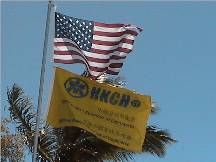



Biz:
China
Hong
Kong Hawaii


What people
said about us

China
Earthquake Relief
Tax &
Government
Hawaii Voter Registration
 Biz-Video
Biz-Video
 Hawaii's
China Connection Hawaii's
China Connection

 CDP#1780962
CDP#1780962

 Doing Business in
Hong Kong & China
Doing Business in
Hong Kong & China
| |
Biz Opportunities - Hong Kong
Do you know our dues
paying members attend events sponsored by our collaboration partners worldwide
at their membership rates - go to our
event page to find out more!
 Wine-Biz - Hong
Kong Wine-Biz - Hong
Kong 
 Brand Hong Kong
Video
Brand Hong Kong
Video
Major
Exhibitions & Conferences in Hong Kong

Basic Law of Hong Kong SAR Guaranteed One Country Two System for 50 Years
  HK Leaders & Basic Law
HK Leaders & Basic Law
  Top China's Students Attend HK Universities
Top China's Students Attend HK Universities
  HK School of Creative Media,
Entertainment & Tech Industries
HK School of Creative Media,
Entertainment & Tech Industries
 1997
Hong Kong Handover to China - Flag Ceremony Video 1997
Hong Kong Handover to China - Flag Ceremony Video
 Hong
Kong 10 Years History Slide Show (1997 - 2007) Hong
Kong 10 Years History Slide Show (1997 - 2007)
 HK
10 Years - Economy (1997 - 2007) HK
10 Years - Economy (1997 - 2007)
 HK
10 Years - Life (1997-2007) HK
10 Years - Life (1997-2007)
 Lan
Kwai Fong tops HK nightlife Lan
Kwai Fong tops HK nightlife
 Mission
successful: PLA Garrison in HK Mission
successful: PLA Garrison in HK
 HK
10 Years - Safety (1997 - 2007) HK
10 Years - Safety (1997 - 2007)
 HK
10 Years - Fashion (1997 - 2007) HK
10 Years - Fashion (1997 - 2007)
 Horse
racing remains most popular sports in HK Horse
racing remains most popular sports in HK
 HK
10 Years - Stars (1997 - 2007) HK
10 Years - Stars (1997 - 2007)
 HK
10 Year - Donald Tsang (1997 - 2007) HK
10 Year - Donald Tsang (1997 - 2007)
 HK
economy looking forward to better future HK
economy looking forward to better future
 Born
on the 1st of July, growing with the HKSAR - The little
girl Leung Sum Mui was born right on July the first, 1997. Born
on the 1st of July, growing with the HKSAR - The little
girl Leung Sum Mui was born right on July the first, 1997.
 Hong
Kong Handover - Jiang Zemin's speech June 30 1997 Hong
Kong Handover - Jiang Zemin's speech June 30 1997
 Dining
and shopping paradise for travelers Dining
and shopping paradise for travelers
 HK
Businessmen in Beijing HK
Businessmen in Beijing
 Prince
Charles and former Hong Kong Governor Christopher Francis Patten leave HK after
the handover ceremony in 1997 Prince
Charles and former Hong Kong Governor Christopher Francis Patten leave HK after
the handover ceremony in 1997
 |
 |
Listen to MP3 “Business
Beyond the Reef” to discuss the problems with imports from China, telling
all sides of the story and then expand the discussion to revitalizing
Chinatown -
Special Guest:
Johnson Choi, MBA, RFC. President - Hong Kong.China.Hawaii Chamber of
Commerce (HKCHcc) and Danny Au, Manager, Bo Wah Trading |
 http://www.directory.gov.hk/
http://www.directory.gov.hk/
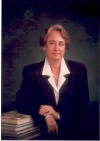
Hong Kong
Businesses Achieves before 2008 Share
2009 - 2010
 Mainland and Hong
Kong Closer Economic Partnership Arrangement (CEPA)
http://www.tid.gov.hk/english/cepa/index.html
Mainland and Hong
Kong Closer Economic Partnership Arrangement (CEPA)
http://www.tid.gov.hk/english/cepa/index.html
 AmCham Shanghai launches latest Viewpoint - U.S. Export
Competitiveness in China - on the 2010 Washington, D.C. Doorknock - Please
download report in PDF format:
http://www.hkchcc.org/viewpointusexport.pdf
AmCham Shanghai launches latest Viewpoint - U.S. Export
Competitiveness in China - on the 2010 Washington, D.C. Doorknock - Please
download report in PDF format:
http://www.hkchcc.org/viewpointusexport.pdf
Hong Kong - China's Global Financial Center
   Sundeep Bhandari, Managing Director, Regional Head, Global Markets North East Asia and Co-Head Wholesale Banking, Standard Chartered Bank. Sundeep Bhandari, Managing Director, Regional Head, Global Markets North East Asia and Co-Head Wholesale Banking, Standard Chartered Bank.
   Simon Galpin, Director-General, InvestHK Simon Galpin, Director-General, InvestHK
   Victor L.L. Chu, Chairman, First Eastern Investment Group Mr. Chu is Chairman of First Eastern Investment Group, a leading Hong Kong-based direct investment firm and a pioneer of private equity investments in China. He is also Chairman of First Eastern Investment Bank Limited in Dubai and Evolution Securities China Limited in London. Mr. Chu is a main board member of Zurich Insurance. Mr. Chu has served as Director and Council Member of the Hong Kong Stock Exchange, Member of the Hong Kong Takeovers and Mergers Panel, Advisory Committee Member of the Securities and Futures Commission, and part-time member of Hong Kong Government's Central Policy Unit. He is currently a Foundation Board Member of the World Economic Forum and co-chairs the Forum's International Business Council. He is also Chairman of the Paris-based ICC Commission on Financial Services and Insurance. Victor L.L. Chu, Chairman, First Eastern Investment Group Mr. Chu is Chairman of First Eastern Investment Group, a leading Hong Kong-based direct investment firm and a pioneer of private equity investments in China. He is also Chairman of First Eastern Investment Bank Limited in Dubai and Evolution Securities China Limited in London. Mr. Chu is a main board member of Zurich Insurance. Mr. Chu has served as Director and Council Member of the Hong Kong Stock Exchange, Member of the Hong Kong Takeovers and Mergers Panel, Advisory Committee Member of the Securities and Futures Commission, and part-time member of Hong Kong Government's Central Policy Unit. He is currently a Foundation Board Member of the World Economic Forum and co-chairs the Forum's International Business Council. He is also Chairman of the Paris-based ICC Commission on Financial Services and Insurance.
   Professor K C Chan, Secretary for Financial Services and the Treasury Government of the Hong Kong SAR (HKSARG) Professor K C Chan is the Secretary for Financial Services and the Treasury, the Government of the Hong Kong Special Administrative Region. Before assuming the post, he was Dean of Business and Management of the Hong Kong University of Science and Technology (HKUST). Prior to joining the HKUST Business School in 1993, he spent nine years teaching at Ohio State University. He received his bachelor's degree in economics from Wesleyan University and both his M.B.A. and Ph.D. in finance from the University of Chicago. He specializes in assets pricing, evaluation of trading strategies and market efficiency and has published numerous articles on these topics. Professor K C Chan, Secretary for Financial Services and the Treasury Government of the Hong Kong SAR (HKSARG) Professor K C Chan is the Secretary for Financial Services and the Treasury, the Government of the Hong Kong Special Administrative Region. Before assuming the post, he was Dean of Business and Management of the Hong Kong University of Science and Technology (HKUST). Prior to joining the HKUST Business School in 1993, he spent nine years teaching at Ohio State University. He received his bachelor's degree in economics from Wesleyan University and both his M.B.A. and Ph.D. in finance from the University of Chicago. He specializes in assets pricing, evaluation of trading strategies and market efficiency and has published numerous articles on these topics.
Hong Kong Budget 2011 Hong Kong Financial Secretary John Tsang will dish out nearly HK$44 billion (US$5.6 billion) to taxpayers
from Surplus
 HK$6,000 will be given to each holder of a valid Hong Kong Permanent Identity Card HK$6,000 will be given to each holder of a valid Hong Kong Permanent Identity Card
Hong Kong Business Name Search
香港政府公司註冊處綜合資訊系統
(ICRIS) 的網上查冊中心可以英文或中文進行聯線查冊,客戶可查閱由公司註冊處處長登記和備存的公司現況資料,以及文件的影像紀錄。
The Hong Kong Government Cyber Search Centre of the Integrated Companies Registry Information System
(ICRIS) enables you to conduct searches online in either English or Chinese on the current data of registered companies and the image records of documents registered and kept by the Registrar of Companies. Hong
Kong Company Registery - HKSAR Government HK Trademark Registration HK Trademark Online Search
 Hong Kong http://en.wikipedia.org/wiki/Hong_Kong Hong Kong http://en.wikipedia.org/wiki/Hong_Kong
November
18 2011
Share
Culture Builder - Michael Lynch: Hong Kong's $3 billion (US$387 million) champion of arts
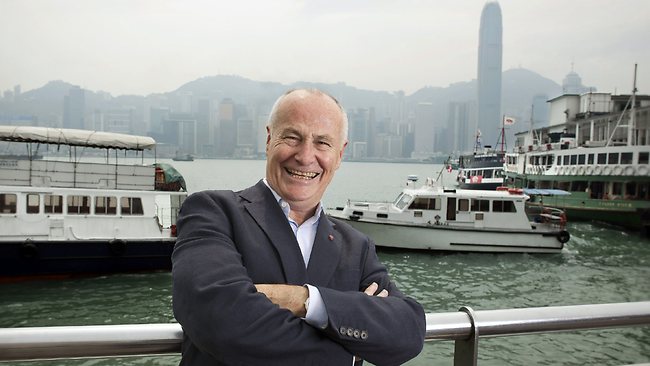
After a distinguished career in arts administration, serving as Chief Executive of the Sydney Opera House from 1998 to 2002, then leading the rejuvenation of London’s Southbank Centre as Chief Executive from 2002 to 2009, Michael Lynch was contemplating a quieter life. That was until he was approached to head Hong Kong’s West Kowloon Cultural District (WKCD) project. It was a challenge the Australian, who has been awarded both an Order of Australia and Commander of the British Empire for his services to the arts, found too tempting to refuse.
You’ve had high-profile jobs before, in London and Australia. Why were you keen to take on the WKCD project?
I’d gone back to Australia in 2009, after seven years in the UK and had been contemplating retirement when I was approached by the West Kowloon Cultural Authority. The job seemed too exciting to resist. I realised that WKCD would make a special place in the world as a state-of-the-art cultural landmark. And it’s in Hong Kong – with its centrality to Asia, and all the extraordinary things that are happening here in connection with China. I’d be an idiot if I didn’t do it.
How would you describe the importance of this project for Hong Kong?
It’s unbelievably important. The project comprises a 23-hectare city park, 15 performing arts venues, a museum, exhibition centre, piazza areas and commercial and residential developments along the waterfront of Victoria Harbour, with the first stage to be completed by 2015. It will provide a real opportunity for Hong Kong to do something within a concentrated period of time that will have positive consequences.
What about on the global scale?
WKCD will redefine the perception of Hong Kong in terms of the rest of the world. It will showcase Hong Kong as not only being an international financial centre, with great shopping and dining, but also sophistication. Its venues will give exposure to artists and arts from Hong Kong and around the world, and become a vibrant and different part of the city’s tourist offer. This project is fantastic artistically, culturally and creatively. It will focus more attention on Hong Kong as one of the great cities of the world.
What do you think of the talent that exists in Hong Kong?
Hong Kong is a dynamic place, with fantastic things happening in it, but one thing people used to say was that it was a bit of a cultural desert. Not true. Where Hong Kong now sits in the visual arts world is very exciting. We’ve got the Hong Kong Art Fair, the Gagosian Gallery, White Cube and more big, successful shows presented here than people give Hong Kong credit for. I’ve met a lot of creative people and artists working in the city, including many who have come back to Hong Kong after distinguishing themselves in other parts of the world.
But Hong Kong is still emerging in this area.
There is a lot happening, and it is really important that this project is realised. In the visual arts world, there is some real progress to be made. We hope that M+ [West Kowloon's art museum] will be an internationally competitive institution. Some existing venues do need attention. But we are creating state-of-the-art venues across all areas of creativity and expect this will be a catalyst for change in Hong Kong, and help to build confidence in the city.
Having been appointed as WKCD Chief Executive Officer in July, you’re now approaching your first 100 days. Does one key achievement stand out?
I believe there is a tangible shift in public perception of this project. It is going to happen. The dreams and aspirations of the people who have been working on it are going to be
realized. I notice increasing support from the community. We have a good opportunity to get the plan in by end of this year, gain approval by 2012, and start digging by 2013. It’s a big vision, and we need to make sure we can encompass the sale of the dream to meet public expectations.
I am energized by Hong Kong and excited by the opportunities WKCD provides, in terms of what we are able to do for Hong Kong itself and, more broadly, in the region and internationally. For a man who was contemplating retirement, this is incredibly exciting.
November
17 2011
Share
Writing the wrongs - Former lawmaker and international businessman Paul Cheng Ming-fun feels China is misunderstood by the US and hopes to dispels many myths with his new book
By Gary Cheung
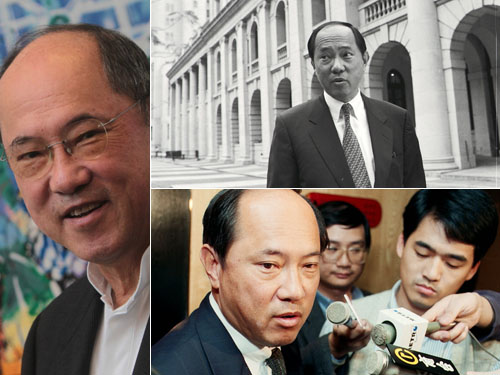
Paul Cheng was a lawmaker (top right) and Chamber of Commerce chairman (bottom right).
Why would a 75-year-old businessman spend 20 months of his retirement writing a book on a sweeping topic like the relationship between China and the West?
Paul Cheng Ming-fun, a former Legco member and ex-head of the Hong Kong General Chamber of Commerce, who attended college in the United States and worked for US companies for more than two decades, felt it was his mission to explain his native country to Americans.
"Citizens of the West, particularly in the United States, need to know more about China, which is a rising power," he said. "In fact, even what they think they know may be fuelled by misconceptions and misunderstanding. I hope my book can help clear up misunderstandings about China held by some Americans."
That book, On Equal Terms: Redefining China's Relationship with America and the West, was published this week by John Wiley & Sons (Asia), the American publisher's Singapore-based subsidiary.
Cheng, who published the book under his pinyin name in Putonghua, Zheng Mingxun, says his background makes him an ideal interpreter between the two worlds.
"Having worked for major American multinationals in the US and Asia, I have lived with a foot in both worlds," he said. "I have many friends from the United States and get along with them very well. The tension between the US and China stems from US politics, not its people."
In his book, Cheng disputes some beliefs widely held in the West, for example that the US lost jobs and suffered a huge trade imbalance because American companies relocated production to China.
According to Cheng, most products exported from China are manufactured using materials from around the world; they are assembled in China and then shipped to markets in the West.
"America's trade deficit is with many countries around the world, not just China," he writes. "In fact, the value added in China is marginal; it is not nearly as significant a part of the overall GDP as some may think.
"Consider a product that sells for US$100 in the United States; I would calculate that no more than 10 per cent of that would be likely to stay in China - representing labour for assembling the product - while perhaps another 10 per cent would represent materials imported from various parts of the world."
He says "assembled in China", rather than "made in China", would better describe the products that many Americans find it difficult to do without in their daily lives. "China tends to be merely the final stop in many a multinational's vast global production network," he says. "The most inexpensive link in this chain takes place in southern China, where workers are typically paid less than a dollar an hour to do the soldering, assembling and packaging. If they didn't do it, would it create jobs in the United States?"
Surprisingly, perhaps, for a man who feels so warmly toward America, Cheng offers a vigorous defence of China's one-party rule.
He takes issue with the many Western thinkers who believe every country should adopt a democratic political system, regardless of the nation's history, saying China should not be judged solely on Western values and standards.
In his book, he states: "When the financial crisis first surfaced in the US a few years ago, party politics got in the way of decisions and made that government slow to react. Imagine, a nation such as China with more than a billion people speaking what amount to different languages and living in widely varying circumstances around the country. A proliferation of political parties would result in total chaos nationwide."
But Cheng does see room for subtle change in China, such as allowing more freedom of speech. "Compared with what I witnessed during my visit to China in 1972 - the first after I left the mainland in the late 1940s - the degree of freedom of expression in recent years is much better. You can't expect China to turn into full democracy overnight," he said.
Cheng believes the Chinese government should be more statesmanlike when responding to perceived international provocation as this would help improve Western perceptions of China.
Cheng was born in 1936 in Gulangyu , an island off Xiamen in Fujian . After the Japanese army invaded China the following year, his grandfather took the entire family to Hong Kong.
Cheng was sent to Tianjin after the second world war to attend primary school before returning to Hong Kong to attend high school. He studied at Lake Forest College, a liberal arts institution north of Chicago, in the mid-1950s, then went on to work with US multinationals in New York, Singapore, Bangkok and Hong Kong.
In 1987 he joined Inchcape Pacific, a long-standing British trading company, as an executive director and in 1992 became its chairman. He served as a member of the Legislative Council from 1988 to 1991 and from 1995 to 1998 and was chairman of the Hong Kong General Chamber of Commerce in the intervening years from 1992 to 1994.
In 2005, he was appointed chairman of The Link Management, which operates a listed portfolio of shopping malls and car parks it took over from the Housing Authority. He resigned in January 2007 in protest over actions by the Children's Investment Fund Management of Britain, then the largest investor in The Link, pressuring management to kick out small tenants in favour of large chain stores to obtain higher rents.
Today Cheng is deputy chairman of fashion company Esprit Holdings (SEHK: 0330) and active in a private-equity fund business. He is also co-chair of the foundation board of the East-West Centre, a Honolulu research organisation that promotes relationships between Asia and the US.
Despite the countless articles and books describing the shift of power from West to East and proclaiming that the 21st century belongs to China, Cheng is sceptical.
"Being as familiar as I am with America, I would not write off that country just yet, he said. "All one has to do is attend a National Football League game or college football game to feel the spirit. The American dream is still very much alive, but it is politics that appears to be in the way.
"China is not a military threat [to the US]. It is a tough economic competitor, yes, but Americans are also born competitors."
Cheng said China and the US could join hands to form a dream team for the interests of future generations. In 2010, the US was estimated to have spent US$636 billion on defence, more than eight times China's US$78 billion expenditure.
"Imagine, if the US and China took the lead and rallied other countries to join them in cutting defence spending," he writes. "These funds could be used to address poverty, starvation, disease and climate change - all issues we must address for the sake of future generations."
So does he think his 20 months of hard toil paid off?
"Some of my US friends agreed after reading my book that we [US and China] may not agree on everything, but it's good to have a more balanced view," he said.
November
11 2011
Share
Hong Kong is offering business
opportunities to Hawaii and the United States ("Hong Kong Reception" at the
APEC 2011 - 5:30 pm - 7:00 pm at Hilton Waikiki on KUHIO (2500 Kuhio
Ave., Waikiki Beach) - Mr.
Gregory So -Secretary for Commerce and Economic Development and Hong Kong CE
Donald Tsang
Hong Kong Chief Executive Donald Tsang has asked the US to grant visa-free access to Hong Kong SAR passport holders.
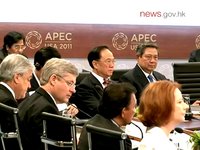 Hong Kong CE
Donald Tsang Propose VISA FREE for HK Passport Holders http://vimeo.com/32082553 Hong Kong CE
Donald Tsang Propose VISA FREE for HK Passport Holders http://vimeo.com/32082553
Rounding up his US trip in Hawaii on November 13, Mr Tsang said he made the suggestion to US Secretary of State Hillary Clinton, who reacted positively, however, no timetable has been agreed so far.
He has also talked about the possibility of abolishing double taxation for Hong Kong-US businesses.
Meanwhile, also at the Asia-Pacific Economic Co-operation meeting, Mr Tsang met with New Zealand Deputy Prime Minister Bill English to discuss the progress of the country's free-trade agreement signed with Hong Kong last year, and the memorandum on education co-operation.
At Mr Tsang's meeting with Chilean President Sebastian Pinera, both sides agreed to enter a free trade agreement to be signed early next year.
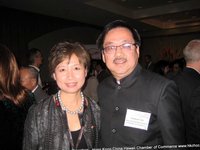 Hong Kong Reception Video http://vimeo.com/32022331 Hong Kong Reception Video http://vimeo.com/32022331
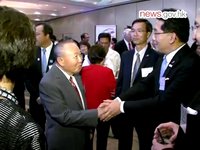 Hong Kong Reception Video - HK Commerce Secretary Gregory So http://vimeo.com/32083195 Hong Kong Reception Video - HK Commerce Secretary Gregory So http://vimeo.com/32083195
Overseas promotion: Secretary for Commerce
& Economic Development Gregory So (left) hosts a reception for Hong Kong
executives and local leaders in Honolulu.
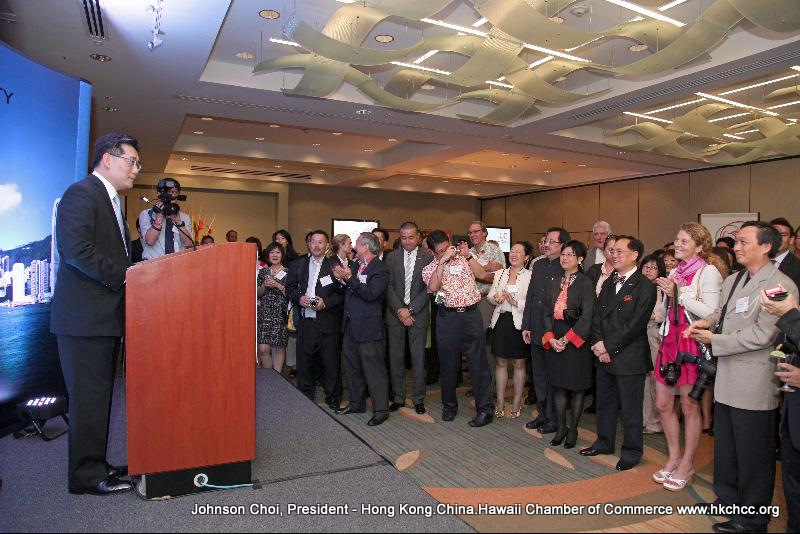
The Secretary for Commerce and Economic
Development, Mr Gregory So speaks at a reception hosted for Hong Kong business
heavyweights and local leaders in Honolulu, Hawaii today (November 11, Honolulu
time). The Chief Executive, Mr Donald Tsang (centre) joins Mr So (second left)
in proposing a toast. Also joining the toasting ceremony are the Under Secretary
for Security, Mr Lai Tung-kwok (second right); Commissioner for Economic and
Trade Affairs, USA, Mr Donald Tong (first right); and Director of the Hong Kong
Economic and Trade Office, San Francisco, Mr Jeff Leung (first left).
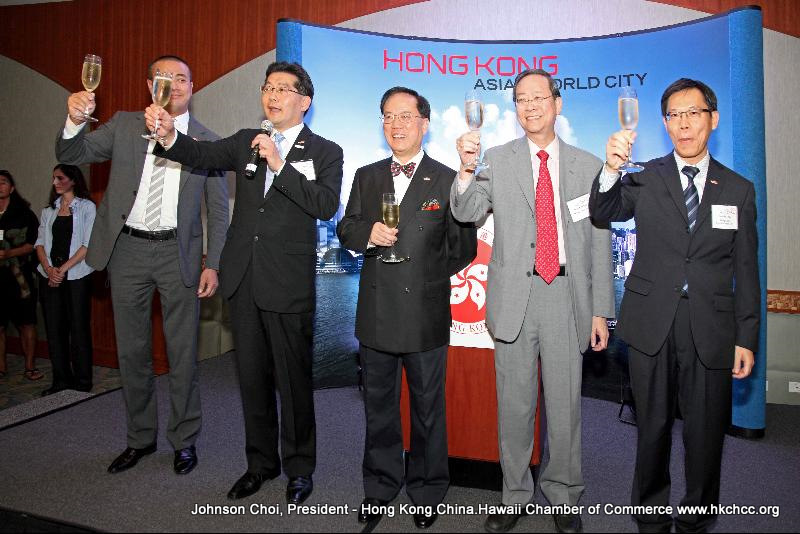
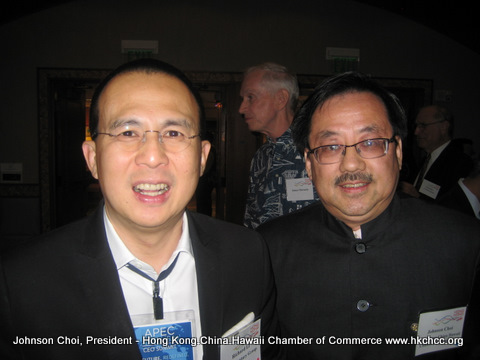 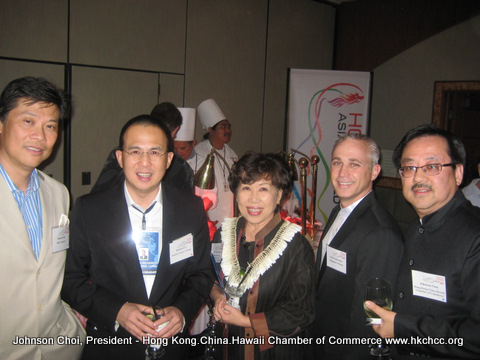
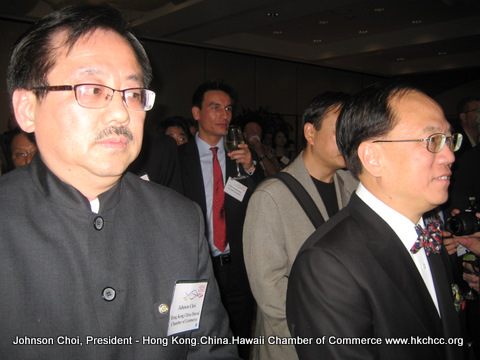 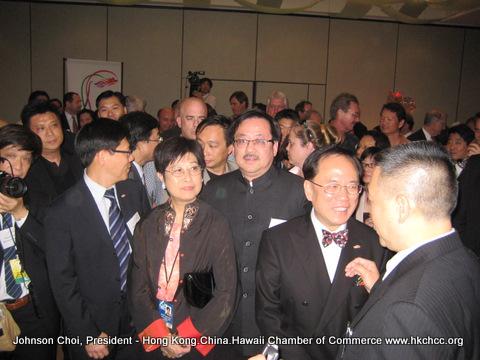
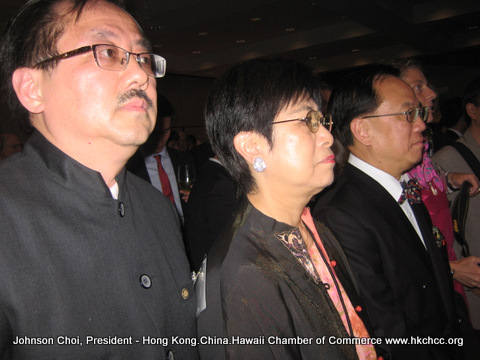 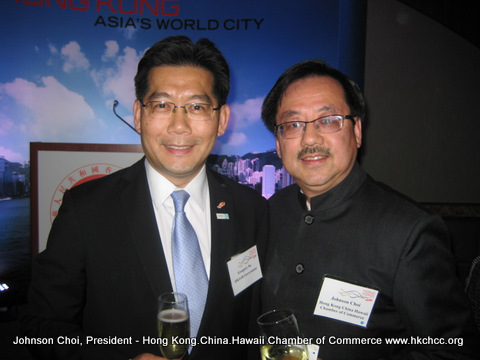
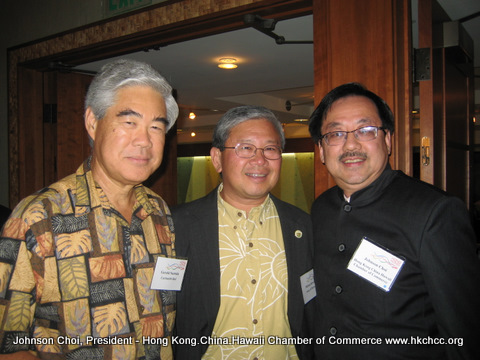 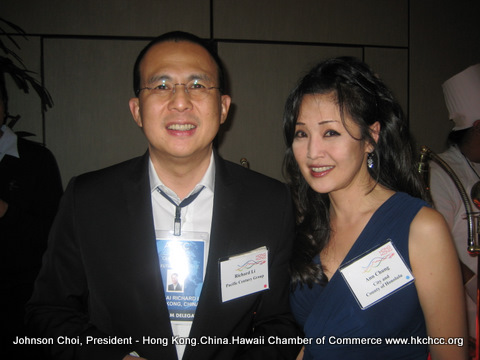
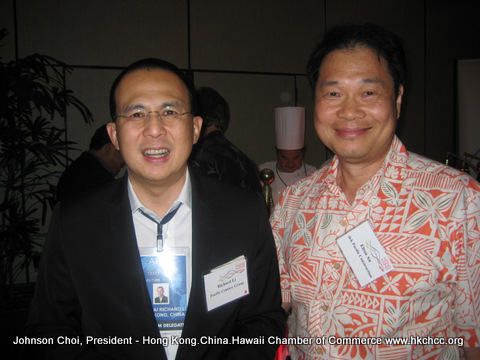 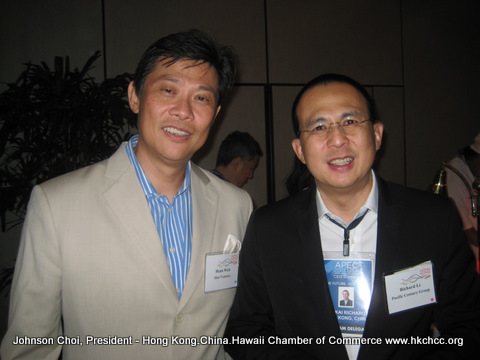
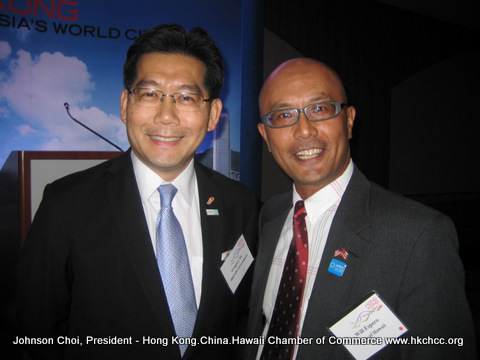 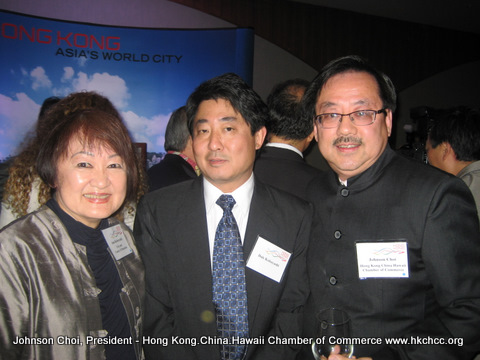
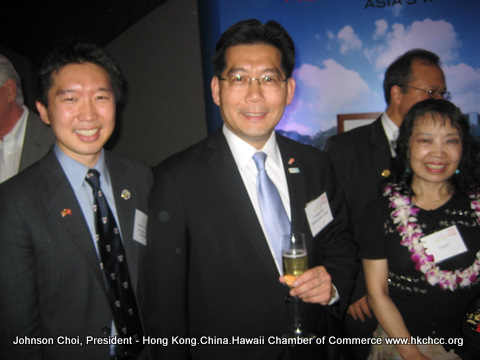 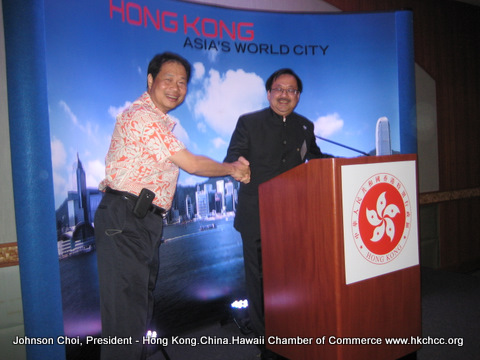
November
10 2011
Share
Hong Kong's economy helps create jobs in US: HK Chief Executive Donald Tsang
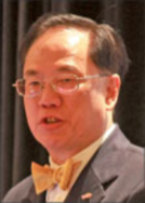
Hong Kong leader Donald Tsang said the city's financial sector has helped the United States' recovery and created jobs in the largest economy in the world.
Tsang, who is the chief executive of Hong Kong, said on Wednesday that the city's "irreplaceable" role in China's economic reform provided "an additional monetary resource that will help address some of the imbalances that have surfaced here in the US and more lately in Europe".
"We have been given a spearhead role in the internationalization of the renminbi, which in turn will help our country to continue with the reforms and opening-up of its banking and financial services sectors," Tsang said, who had visited New York City and Boston during a recent trip to the US.
The special administration region's top leader said Hong Kong will serve as a "gateway" to improve Sino-US trade. He added that Hong Kong has an expanded economic role in China's 12th Five-Year Plan (2011-2015) with the goal of becoming an international asset management and an offshore renminbi business center.
Tsang said Hong Kong will continue to be the global center of finance and banking, logistics, business services and tourism, which in turn will benefit the city's US partners investing in the metropolis.
The US is Hong Kong's second-largest trading partner and a major investor in the city's economy.
"The Hong Kong dollar maintains its linked exchange rate to the US dollar, as it has done since 1983. We have a long-standing, strong and broad-based relationship, and it is one that I believe will continue to grow," Tsang said.
US exported $27 billion in goods to Hong Kong last year, creating the largest US trade surplus with any single partner that year. There are currently 1,330 US companies based in Hong Kong, of which 840 are regional operations. The number of US companies based in Hong Kong over the past decade has increased 65 percent from 2001.
More than 50,000 American citizens live in Hong Kong and tens of thousands of Hong Kong residents have studied in the US, Tsang said.
"Hong Kong has a pivotal role to play in the future China-US relations," said Martin Indyk at the Brookings Institution, which co-hosted Tsang's visit to Washington.
Donald Tsang will head to Honolulu, Hawaii, to attend the Asia-Pacific Economic Cooperation summit from Nov 11-13.
October
26 2011
Share
MICE in the Big Cheese in Hong Kong
It’s the height of trade fair season, but the flurry of business activity in Hong Kong right now is no flash in the pan. As the pendulum of international business swings East, savvy operators know that Hong Kong is the place where deals are done.
Hong Kong Tourism Board (HKTB) figures show that meetings, incentives, conventions and exhibitions (MICE) arrivals to Hong Kong reached 725,779 in the first six months of 2011, a year-on-year increase of 10.3 per cent.
HKCEC, located in Hong Kong’s central business district, ended its fiscal year 2010-2011 with record attendance
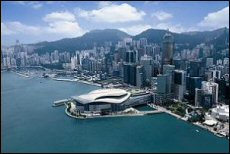
Trade fair attendances reflect that. The Hong Kong Convention and Exhibition Centre (HKCEC) drew almost six million trade visitors in the fiscal year 2010-2011 – a record number, and a surge of 25 per cent over the previous year. Many fairs expanded – some by as much as 83 per cent – and new ones debuted.
Cliff Wallace, Managing Director, Hong Kong Convention and Exhibition Centre (Management) Ltd (HML), described these results as “a remarkable achievement.”
“Over its 23 years of operation, the HML team has hosted 39,606 events and has collectively served about 70 million buyers, exhibitors, visitors and guests. These events have contributed significant economic benefits to Hong Kong by generating beneficial spin-offs for related industries, created numerous jobs and business opportunities for SMEs, and raised Hong Kong’s international image and reputation,” Mr Wallace said.
Economic Fillip
Allen Ha, CEO of AsiaWorld-Expo Management (left) and Thomas Stanley, Partner (Transactions & Restructuring), KPMG Transaction Advisory Services, announce the results of a study on the venue’s economic benefits to Hong Kong
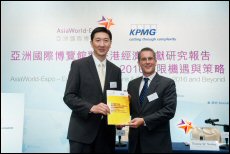
The economic benefits of trade fairs are quantified in a new Economic Contribution Assessment Report by professional services firm KPMG Transaction Advisory Services for AsiaWorld-Expo. It reveals that exhibition and conference events held at AsiaWorld-Expo alone contributed about HK$13.4 billion to the local economy in 2010 – a 25 per cent increase over 2009.
The report found this economic fillip generated more than 26,000 full-time jobs, not only in the MICE industry, but across many supporting sectors, including retail, hotel and leisure, food and beverage, stand design and construction, and logistics and freight forwarding.
Allen Ha, CEO, AsiaWorld-Expo Management Ltd, said that particularly noteworthy in the KPMG report is the finding that Chinese mainland exhibition visitors typically have among the highest per-visit spend of all regions (US$2,154), about 110 per cent of the average in 2010.
A growing number of overnight international exhibition visitors to Hong Kong are from the mainland, where the economy continues to grow and local buyers are increasingly seeking to source from abroad. Latest HKTB data shows 42.8 per cent of MICE arrivals this year came from the mainland, a 15 per cent jump on last year.
Exhibit and They Will Come
Hong Kong Electronics Fair, the world's biggest electronics event, held at the HKCEC in October, drew a record number of buyers
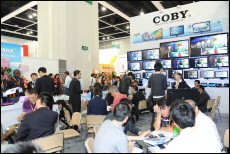
HKTB Executive Director Anthony Lau expects overnight MICE arrivals will continue to grow in the second half of this year. He said one of the factors fostering this upward trend is the staging of some large-scale conventions and exhibitions, including the recent 2011 Asian Seafood Exposition (held at HKCEC in September), and the upcoming SIGGRAPH Conference and Exhibition on Computer Graphics and Interactive Techniques in Asia, which is expected to draw several thousand participants in December.
“In addition, sustained growth of the mainland economy and exchange rates favourable to major currencies against the Hong Kong dollar are going to bring more meetings and incentive travel activities to Hong Kong, especially from the mainland and other short-haul markets,” Mr Lau said.
Dean Winter, General Manager of Swire’s Upper House and EAST hotels

He added that, through various channels, the MEHK (Meetings and Exhibitions Hong Kong) Office of the HKTB will continue actively attracting more MICE events and activities to the city and providing customised support to event organisers.
Hotels are clearly benefiting from this trend, with high occupancy the talk of the town. Dean Winter, General Manager of Swire Hotels’ Upper House hotel at Pacific Place, Admiralty, and EAST in Quarry Bay, said last year had been “phenomenal” for business, and that this year was proving even better.
“Our timing was very good,” he said. “Coming out of the global recession, we benefited from substantial changes in sentiment.”
Arriving from All Corners
Simon Yip, Regional Director of Marketing, The Peninsula Hong Kong
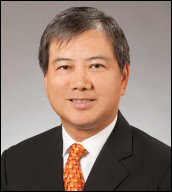
With his two hotels targeting different market sectors, Mr Winter has noticed that both corporate travellers and entrepreneurs are coming to Hong Kong to do business. “Hong Kong being so regionally well-placed draws short-haul travellers here to hold meetings. Long-haul corporate travellers are transiting through Hong Kong on their way to establish offices in premier Chinese cities, or to look for potential production partners in the second-tier cities. It’s clear that Hong Kong is still very much the gateway to China.”
A trend among overseas entrepreneurs looking to start up in Hong Kong is also apparent in the current economy, Mr Winter added. “Hong Kong’s location and its links to China offer them many benefits.”
Mr. Winter said it’s not just Swire hotels that have had a great couple of years in Hong Kong. “All our competitors are saying so, too.”
Simon Yip, Regional Director of Marketing-China, at The Peninsula Hong Kong agreed. “China attracts many business travellers to this part of the world as one of the few strong performers in the current global economic environment. As a key gateway to China, Hong Kong also benefits from its proximity to this growing market. As a result, many hotels in Hong Kong benefit when there are trade fairs, especially the China sourcing fairs, in town.”
October
23 2011
Share
Agony and the ecstasy - Donald Tsang says he has had a tough time navigating the politics of office while striving to achieve his goals, but as his term winds down, he savours two achievements that gave him moments of bliss
By Gary Cheung
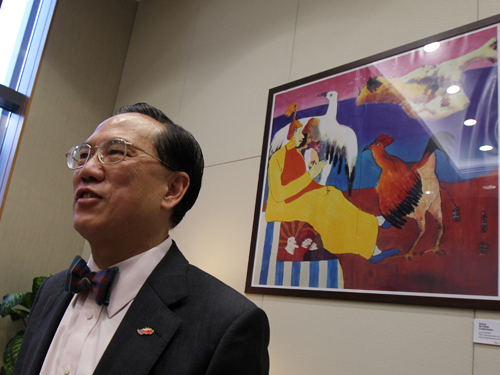
Former Singaporean prime minister Lee Kuan Yew once mused that being Hong Kong's chief executive was a "thankless job".
If that's true, Donald Tsang Yam-kuen should be thankful for any moment of satisfaction.
The veteran civil servant-turned-politician says that he has had two such moments - both when major policy initiatives were passed by the legislature.
With barely eight months left as chief executive, Tsang insists he has accomplished almost everything he set out to do. A man known for taking pains with details, he said he had delivered most of his pledges since his re-election in 2007.
"If you count it carefully, there were 173 pledges made, and so far I have delivered 169 of them."
One yet to be fulfilled is cutting the profits tax to 15 per cent, a tax break he now considers inappropriate when another global recession looks possible.
His biggest achievements?
"I have felt moments of bliss. I felt nearly heavenly on two occasions, if I may say so," he said in an interview this week. "One was when the Legislative Council eventually passed the legislation on the electoral arrangement for 2012. The second was when it passed the law on a statutory minimum wage. For me, they were some of the high moments of this term."
Despite growing doubts about the governance of his administration after a series of embarrassing U-turns, Tsang vigorously rejected criticism that the government had trouble governing effectively.
"While any governmental process with democracy and openness will have to face the sort of difficulties we do here, I would challenge you to the end regarding the effectiveness of this government to govern.
"In terms of the delivery of services to the public, in terms of managing all the things we have to manage, I think perhaps it is one of the most effective governments on earth.
"With a very highly democratic system in America, or in the United Kingdom, they have difficulties pushing through government policy. It is equally or more difficult with ourselves.
"Look at the sort of things what President Barack Obama is facing, or the problem the UK government is facing, what the heads of most of the governments in Europe are facing in implementing the policies - you have got riots in the street and so on. Are you saying all these are very effective governments?"
In one of his first interviews since moving into his new office in Tamar, Admiralty, the chief executive agreed there was a need for a political alliance to secure stable support for government policies.
"I think for delivery of policies, you need an alliance - a political alliance. For us, it is very difficult," he said. "The chief executive is not a member of a political party and we have a system following the presidential system. We have a direct separation of legislature and the executive. So we always have this tension between the two.
"In the US it's demonstrated in the party system of the Democratic Party and the Republican Party, so at least you can ensure you have a certain amount of support for the policies you put through. The problem we have is when we formulate a policy it must be a very popular policy which will have the majority support from the people. Then the policy is put to the Legco in terms of a law or a proposal for resources with a lot of public backing. Otherwise we are in trouble."
As a way to stabilise support for government initiatives, veteran politicians Allen Lee Peng-fei and Chung Sze-yuen have suggested forming coalition governments consisting of politicians from pro-government and pan-democratic parties.
Currently, representatives of the Democratic Alliance for the Betterment and Progress of Hong Kong and the Federation of Trade Unions have seats in the Executive Council. But some non-official Exco members have raised concerns about a lack of input in the early stages of policy formulation.
The administration was forced into making U-turns when both the budget and the bill to scrap Legco by-elections were threatened by some government-friendly legislators.
Tsang defended the government's controversial decision in March to give HK$6,000 to all adult permanent residents by saying the administration had no better way of dealing with the surplus after its original proposal to inject money into people's Mandatory Provident Fund accounts came under heavy criticism.
"You can see how this is being embraced. People are lining up to register for the HK$6,000," he said.
The chief executive recognises the challenges posed by vocal minorities.
"If a policy can receive 70 per cent support it will be a marvellous policy," Tsang said. "But that means you have 30 per cent opposition and that is translated to over two million people. And some of them may have their own way of coming out with a very, very strong voice against it.
"So we have to accept that this is part of the problem of politics, but I agree with you that we have to think hard in the future.
"Political alliances will have to be made, otherwise things will get bogged down - not because of lack of reasons, not because of lack of justification, and not even the lack of sufficient public interest, but rather simply politics."
Tsang will step down as chief executive in June, spelling the end of his 45-year public service. What was his toughest time as chief executive? "I will tell you later, not now," he said.
Financial secretary during the Asian financial crisis in 1997-98, Tsang is always vigilant about the risks of global financial turmoil. "I personally look at the performance in Europe and in America every day and every night and early every morning. I wake up at 4am to look at how the markets have fared."
The chief executive said the government was always prepared for another global recession: "If you look back at what I said at two question-and-answer sessions in Legco, I warned about a recession. I was laughed out of court at the time. 'Oh, a silly man, how could be there a recession'. I still maintain the risk is increasing."
Tsang, who has acknowledges he sometimes looks stern and his smile a bit stiff, showed he has a sense of humour when talking about a modern Chinese painting entitled Conversation in Two Parts, that was hanging on the wall of the room where he was interviewed. Was it an oblique reference to tensions between government and media?
"It's a little joke I play on my guests as well," he said. "By listening to what you said, I am trying to answer every question. I don't think we are just chickens and ducks talking in different dialects."
October
22 2011
Share
An honest public servant who just wants a quiet life
By Tanna Chong
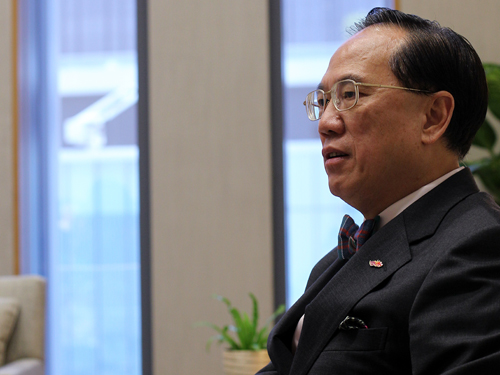
When Donald Tsang Yam-kuen completes his tenure as chief executive on June 30 next year, he'll have notched up 16,240 days as a public servant - 2,567 of them in the 'pressure cooker' office of the chief executive.
That is almost half a century. It is hardly surprising, then, that the man they call "Bowtie" - because of his trademark choice of neckwear - is planning a quiet retirement.
Switching to a lucrative job in the private sector is a route well travelled by many civil servants, but that option is out for Tsang, who says he wants a more private life after he takes his final bow.
"After my retirement, I will certainly not engage in any commercial activities. I do not want any directorships," said Tsang in the drawing room of the new Chief Executive's Office at Tamar.
"I have a lot of hobbies which I want to pursue more seriously. I want to do more photography and I want to see my grandchild more often than now and play with her. I want to learn something - new things."
Tsang's younger brother, former police commissioner Tsang Yam-pui, became a managing director of NWS Holdings (SEHK: 0659) (now a listed company) and a chairman of Newton Resources after retiring in 2004.
Tsang's former colleague Frederick Ma Si-hang, who resigned as secretary for commerce and economic development in 2008 because of a brain tumour, joined the listed China Strategic Holdings a year later as its chairman.
Tsang said learning the importance of being silent would be his retirement task, and he would leave public life to do just that.
"I must leave for a while so that I won't be grilled by people like you and others ... I don't want to comment on anything done by my successor. Mr Tung [Chee-hwa] has set a very good example and I will do the same," said Tsang, referring to his predecessor.
However, he added: "I will be living in Hong Kong. My home is here."
Proposing the "Guangdong Scheme" in his last policy address, which allows elderly Hongkongers to claim their old age allowance while residing in Guangdong, the 67-year-old said that might be a good choice for his retirement as well.
"Good idea. But I am not qualified for the old age allowance yet," said Tsang, who will have to wait two more years before he can claim the benefit, which is not means-tested.
Asked what he would like to be remembered for after 45 years as a public servant, "honesty" was all he would ask for. Let the public decide the rest, he said.
"On the internet, there are tonnes of materials written about me, and there is YouTube as well. It is very difficult for people to forget me," he said. "So how exactly I will be remembered will be a matter for people to decide. All I want is [to be remembered as] a public servant, an honest public servant of Hong Kong."
September
15 2011
Share
HKMA: banking outlook remains bright with overseas collaboration
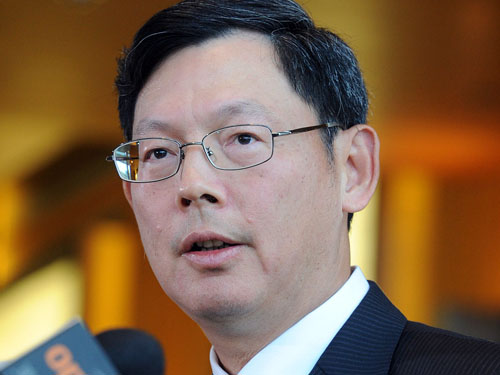
The future of Hong Kong's banking industry remains bright if local lenders are willing to collaborate with overseas banks in offshore yuan trading, said Norman Chan Tak-lam, chairman of the Hong Kong Monetary Authority.
Local lenders must think about how to work with their foreign counterparts in providing yuan products and services, Chan said in an interview after attending an investment forum in London earlier this week.
"Not all overseas companies are willing and able to manage offshore yuan accounts," he said. "How do we access the market for small- and medium-sized companies? They may go to banks in London. If the banks in Hong Kong work with their counterparts in London in providing the yuan capital, then our catchment is enlarged."
Hong Kong boosts the largest off-shore yuan capital pool, with deposits of more than 570 billion yuan (HK$695.8 billion) in July - a more than eightfold surge from 62.7 billion yuan in 2009.
Yuan deposits in Hong Kong are expected to continue rising, albeit at a slower rate after a period of rapid expansion in the last two years, Chan said.
However, he stressed that no single market, including Hong Kong, can dominate the offshore yuan business, given the geographic diversity of the international offshore yuan market.
Nevertheless, prospects for the city's banking sector remain "attractive" despite recent job cuts as Hong Kong exploits the yuan's internationalisation, he said.
The yuan's internationalisation has accelerated because of the debt crisis in Europe and America, Chan said. Between January and August, 52 Asian and European firms - such as Unilever, Volkswagen and Tesco - had issued 55.7 billion yuan worth of yuan-denominated bonds in Hong Kong.
The finance ministry had issued 20 billion yuan of bonds in the same period.
That should speed up the development of the yuan bond market in Hong Kong, as it should provide a reference for a benchmark yield curve in the bond market, Chan said.
September
9 2011
Share
Hong Kong IPO Reforms Build Bridges made Japanese companies listing at Hong Kong Stock Exchange possible
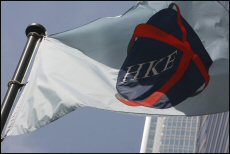
Hong Kong Stock Exchange is flying the flag for Japanese IPOs after reforms have made listings possible
Japanese online financial services firm SBI Holdings launched on the Hong Kong Stock Exchange (HKEx) in April, marking another milestone for the world’s busiest bourse by market value. It was the first time a Japanese company had been able to list in Hong Kong.
The listing resulted from a series of regulatory breakthroughs, which experts say should pave the way for more listings of Japanese companies on the HKEx. International law firm Freshfields Bruckhaus Deringer calls the launch “trailblazing.” Deloitte sees it as an example for others.
Freshfields advised SBI on its US$167 million global offering of Hong Kong Depository Receipts (HDRs) and its secondary listing in Hong Kong. SBI, which also listed on the Tokyo and Osaka stock exchanges, primarily operates in five core business segments, including asset management, brokerage and investment banking, financial services, and housing and real estate.
Significant Milestone
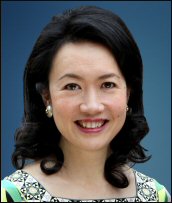
Teresa Ko, China Managing Partner, Freshfields Bruckhaus Deringer
Teresa Ko, Freshfields’ China Managing Partner, said the listing marked a significant milestone in Hong Kong's goal to attract foreign incorporated companies to list on its exchange. “SBI is the first Japanese incorporated company to list on the HKEx. Whilst a secondary listing, SBI raised fresh capital by being the first company ever to have offered HDRs in Hong Kong.”
The regulatory breakthroughs that enabled the launch should pave the way for more listings of Japanese companies on the HKEx, Ms Ko continued.
'We feel honoured to have helped SBI complete its fundraising and listing against uncertainty and market volatility following the recent earthquake and tsunami in Japan. Under the sponsorship of Daiwa Capital Markets, SBI has blazed a trail, which we hope will inspire and encourage other companies to list in Hong Kong.”
Junzaburo Kiuchi, partner in Freshfields’ Tokyo office, said there are very few companies with dual listings in Japan as many international issuers have left the market. “These deals are tough because two very different sets of rules have to be made to work together.”
CEO Endorsement
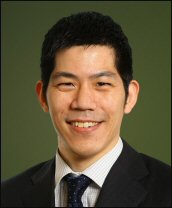
Junzaburo Kiuchi, Partner, Freshfields’ Tokyo office
At a media briefing in April, Yoshitaka Kitao, SBI’s CEO, said he had been preparing for the Hong Kong offering for more than a year. The Japanese market had been one of the worst performers in the past decade, whereas Hong Kong was more efficient and yielded greater returns, he said. “I would rather be listed in Hong Kong than in Japan and I know a lot of Japanese companies that also want to list here,” Mr Kitao told reporters.
The successful listing of SBI in Hong Kong has also marked the recognition of Accounting Principles Generally Accepted in Japan (JGAAP) in the Hong Kong market. Edward Au, National Co-leader of Public Offering Group, Deloitte China, said this sets “an important example for similar listings in Hong Kong in the future.”
He explained that, until now, barriers were in the way. “Japanese companies, in general, are interested in listing in Hong Kong but most of them remain cautious given the difference in rules and regulations. In the past, they worried that the cost of a Hong Kong listing was higher because of the GAAP difference and bilingual disclosure requirement. They also worried that the IPO process of a secondary listing in Hong Kong would be as lengthy as a primary listing.”
Paving the Way
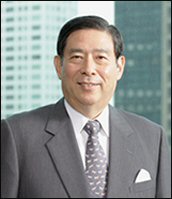
Yoshitaka Kitao, CEO, SBI Holdings
While the Accounting Standard Board of Japan, the pacesetter in Japan's accounting standards, is working on the convergence of JGAAP with International Financial Reporting Standards (IFRS), it is expected that the mandatory use of IFRS as the basis for consolidated financial statements by listed companies in Japan may not start until 2015 at the earliest, Mr Au said.
Deloitte has paved the way by being the first accounting firm in Hong Kong to map out and bridge the different accounting requirements between the Japan and Hong Kong bourses.
“We served as the bridge between the issuer and HKEx. We assisted the company to identify and list the material differences between IFRS and JGAAP,” Mr Au said.
“We also provided lectures to Japanese companies in assisting them to understand the difference between IFRS and JGAAP and the disclosure requirements under the rules of HKEx.”
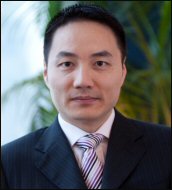
Edward Au, National Co-leader of Public Offering Group, Deloitte China
Mr Au said Japanese companies want to list in Hong Kong because of its robust IPO market. Now, they can realise the benefits.
“The successful listing of SBI in Hong Kong has set the scene for Japanese companies tapping into one of the most liquid capital venues in the world. By listing in Hong Kong, Japanese companies can gain access to the deep capital pool, not only at the time of listing, but also at the later stages from follow-on offerings. According to statistics from HKEx, the total amount of follow-on offerings in the first half of 2011 was US$17 billion.
“Also, China is currently the second largest economy in the world. International companies with a China nexus will opt for a listing in Hong Kong as it can raise the brand eminence on the mainland, if not, in Asia. And that may result in a further business expansion in the China market.”
Deloitte expects more Japanese companies will list on the HKEx by the end of the year. It says these companies “are mainly from the consumer and retail as well as mass market sector.”
Healthy Pipeline
Noting the overseas companies to have listed on the HKEx this year – Samsonite, Prada and Glencore to name a few – Deloitte says it is obvious the local market continues to attract and welcome overseas listings.
“However, we remain cautiously optimistic on the performance of the Hong Kong IPO market in the second half of 2011 since challenges arising from the global economy cannot be overlooked.
“We have to keep an eye on inflation and the tightening policies in China, the European debt crisis and the condition of the US economy after QE2.”
September
6 2011
Share
Chateau Lafite Sale Tops $500,000 By Jake Lee
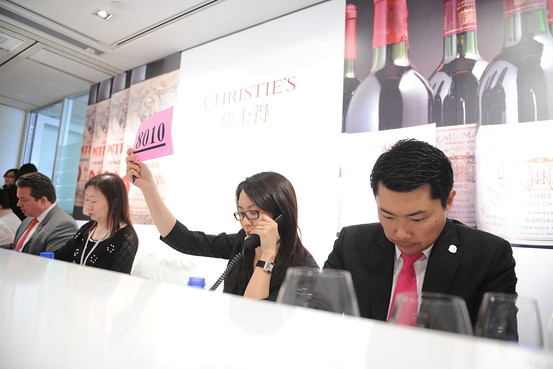
A phone bidder from China took home 300 bottles of Château Lafite-Rothschild, the most expensive single lot this year.
Bundled into a single lot, 300 bottles of Château Lafite-Rothschild sold over the weekend for $539,280 to an anonymous Chinese phone bidder at a Christie’s auction in Hong Kong, making it the most expensive single lot this year and boding well for a slew of autumn sales in the city.
While normal lots in top-tier wine auctions are typically made up of around a case, Lot 44 comprised 25 cases of Lafite from every year between 1981 and 2005, averaging around $1,800 a bottle. The entire two-day sale raised $7.6 million, with Burgundy’s Domaine de la Romanée-Conti, Moët & Chandon champagne from 1911, and Bordeaux’s ultra-rare 1982 Le Pin making up other top slots.
“It was an extraordinary Lafite collection, and the seller actually trades wine for a living,” said Christie’s Charles Curtis, head of wine for Asia, who estimated the vendor received a 20% premium by selling it as a multi-year collection, or vertical. “We had several bidders, and they were all from China, and they are just getting into wine.”
Zachys kicks off next with a two-day sale this weekend at the Mandarin Hotel, forecast to raise $10 million, and joins Christie’s in selling verticals (also called instant collections), albeit on a lesser scale than the 300-bottle Lafite extravaganza. Examples include a set of 48 bottles from various years of Bordeaux’s Château La Mission Haut Brion, and 28 bottles plus a magnum from Napa Valley’s Shafer Vineyards.
These bottles can be used to “host a lavish evening with an incredible wine tasting, expand your palate into truly understanding the depth and breadth of some of the best wineries, or highlight these verticals as a centerpiece in your collection,” says Zachys.
Acker Merrall & Condit is holding a two-day, $10 million-plus sale on Sept. 16 and 17, with Burgundy wines ranking as the most expensive lots. It will sell an extensive array from Champagne’s tiny producer Salon, including a single 1955 bottle valued at up to $3,000 — an unusual offer for Hong Kong, which tends to prefer red wines.
The auction house is also selling sets of highly collectable Château Mouton Rothschild, which selects different artists each year to design its label. Lot 799 offers a single bottle from almost every year between 1958 and 2007, for a top estimate of $45,000.
Similar to other auctions, a champagne brunch awaits bidders attending the Grand Hyatt for Spectrum Wine Auctions’ sale on Sept. 23 and 24, featuring Bordeaux and Burgundy.
Ending the monthlong series of sales is Sotheby’s two-day, $11 million sale in early October, with highlights including a sale of Bordeaux’s “Ultimate Nine” that uses the “Five Star Provenance” system — wines directly from the châteaux, stored in professional storage throughout their lifetime, and kept in original wooden cases with tamper-proof seals.
September
1 2011
Share
Creative Collective - Hong Kong is a magnet for Western creative professionals looking to tap Asia’s booming economy
 VIDEO http://www.vimeo.com/28490574 VIDEO http://www.vimeo.com/28490574
Creative types have long been drawn to Hong Kong’s dynamism, and with a job market that is vibrant across a wide range of sectors, the city is more appealing than ever.
To date, about 32,000 ventures related to creative industries have been established in Hong Kong, employing 176,000 practitioners. Such businesses range from those involved with film, television, music, design and architecture, to those creating comics, animation, games and digital animation.
Initiatives such as Create Hong Kong, a government office launched in 2009 to promote the growth of creative industries, have furthered the sector’s development in recent years. The office is responsible for the administration and management of various funding schemes related to creative industries, among them CreateSmart, DesignSmart and the Film Guarantee Fund. As at end of May 2010, projects worth HK$43 million had been approved for funding.
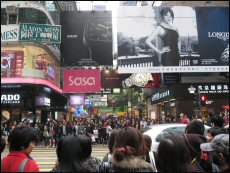
Hong Kong is a magnet for Western creative professionals looking to tap Asia’s booming economy
Among the early movers to identify Hong Kong’s potential was American advertising agency Leo Burnett. The firm was established in Hong Kong in 1965 “with a handful of staff and one client,” according to Lilian Leong, Managing Director of Leo Burnett Hong Kong. Today, the operation has 208 full-time employees. The company is growing at a double-digit rate, delivering creative services not only to the Hong Kong market, but across Greater China and the Asia-Pacific region.
Ms Leong said creative professionals looking to expand their careers are targeting the city because it is at the centre of the world’s most vibrant economy.
“Hong Kong is fortunate enough to be at the intersection of the most important economic forces in the world right now,” she said. “On the one hand, the United States and Europe are battling with recession and debt,” noting that Europe faces the added threat in Portugal, Italy, Greece and Spain.
“The effects from these problems are certainly felt in Hong Kong, but mainland China’s economic future has far more upside. Its continuing development is also helping bring prosperity to a host of other economies in the Asia-Pacific region. “Overall, there’s a sense of positive sentiment and dynamism about the Hong Kong economy that other developed economies are not experiencing.”
Healthy Competition
Lilian Leong, Managing Director, Leo Burnett Hong Kong
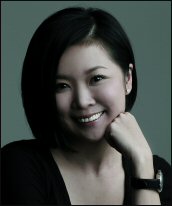
In the current economic climate, upping the ante in terms of marketing and branding has become a commercial imperative of any business, Ms Leong continued. This has been good news for Hong Kong’s advertising sector in particular.
“As the city has developed rapidly over the past 20 years, the advertising industry has grown with it. We’ve seen the scale of the economy grow, bringing more money, more brands, more competition. That’s incredibly healthy.
“We’ve also seen more creative advertising that changes human behaviour. Campaigns are better put together now than they have ever been. The messages have more finesse and more substance. Campaigns now have real appeal on a very human level. There’s a lot of world-class work being done in Hong Kong.”
“An Exciting Market”
Michael Hoare, Reputation Director, Greater China Region, Leo Burnett
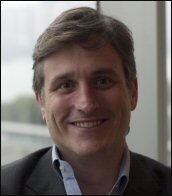
The current vibrancy of the industry drew Australian Michael Hoare to switch from journalism to advertising. The Perth expatriate joined Leo Burnett Hong Kong in April 2011.
“I was attracted to the opportunity to take up a regional role, and to work in a developing market where there is real potential,” Mr Hoare said.
“Professionally, the scope is vast. In my career across Australia, Singapore and Europe, I have never come across such a bunch of go-getters as I found in Hong Kong. Things happen here. It’s a city populated by people who want to get ahead, and are career-driven. Particularly for a white-collar professional from abroad, Hong Kong is an exciting market to be in.”
Mr Hoare said the Hong Kong experience “certainly benefits” his career, especially as a stepping stone to opportunities around the region.
“Hong Kong attracts a lot of blue-chip, top-tier companies that have a global footprint, which you wouldn’t normally have exposure to elsewhere. Hong Kong experience is invaluable in dealing with multinational companies and the lifestyle afforded to expatriates is amazing. It’s a privilege to have this opportunity.”
Big Fish in Small Pond
Candace Campos, Founder, Candace Collective

American designer Candace Campos took advantage of Hong Kong’s “hot opportunities” to start her own business. “I never intended to move to Hong Kong,” explained Ms Campos, founder of Candace Collective, an interiors and graphics business.
“I travelled here three times a year for business, and during those trips people started asking if I would freelance,” Ms Campos said. “I came for a few months to test the market, and had so many job requests I decided to incorporate my business here.”
She moved from California in 2008, and success soon followed. “My first interior renovation made it on the cover of Home Journal and 15 other publications after that.”
Ms Campos believes overseas designers are in demand because the US and European markets are “saturated” with Western design, whereas in Hong Kong, customers can’t get enough. “I bring my influence from the US and it is very well received. I think my interior design style is something fresh and different for the Hong Kong market.”
Noting that she “can’t keep up with the demand,” Ms Campos says she is able to choose which jobs to accept. “In Hong Kong, I feel like a big fish in a small pond – I can stand out with my style. In New York or Los Angeles, I would get lost among everyone else.”
Hong Kong projects on Ms Campos’s resume also help to build her global brand. “When I travel back to the US, people are impressed by what I have created in Hong Kong. The city has clout internationally.”
Her business is primarily interior design, which is where Hong Kong delivers another plus. “Being so close to production in the Chinese mainland means I have access to every material you can think of, and a very short lead time for production. This helps with cost as well.”
Drawn to the Light
Michael Young, Founder, Michael Young Ltd British product designer Michael Young says intuition brought him to Hong Kong. He said he came to the city in 2006 intending to use Hong Kong as an industrial base “because I realised that everything was here.”
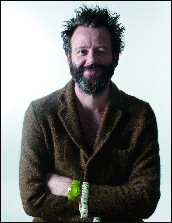
“I landed there one day and stayed at the Peninsula hotel. I was in the pool and looking at the neon signs and it was just obvious to me this was the place to be.”
Since then, Mr Young has collaborated with up-and-coming companies in Hong Kong, as well as international brands that are keen to sell to Asia.
“I love the people and the technology and the speed. I’m fast in my way of working, and Hong Kong offers me all of that.”
August
31 2011
Share
Hong Kong: China’s RMB Center

Speaking at a forum on China’s 12th Five-Year Program, China’s Vice
Premier of the State Council Li Keqiang unveils new economic initiatives to
strengthen Hong Kong’s developing role as the mainland’s renminbi center
Beijing has unveiled a raft of new economic measures to boost Hong Kong’s
status as an international financial centre, and help Hong Kong companies gain a
stronger foothold into the Chinese mainland market. The mainland’s Vice
Premier of the State Council Li Keqiang announced the latest Central Government
initiatives during a visit to Hong Kong earlier this month. Mr Li said it was in
the interests of all concerned that Hong Kong continue “to bring out the
unique advantages it has developed over the years and play its irreplaceable
role in the mainland’s reform, opening-up and modernization drive.”
The new initiatives will further open up the mainland market to Hong Kong’s
services industry. It will also upgrade Hong Kong’s standing as an
international financial capital, expanding Hong Kong’s role as an offshore
renminbi centre.
Green Light for Mainland Equity Investors

More mainland companies will be allowed to sell renminbi bonds in Hong Kong
under new measures announced by the Central Government
Of the measures unveiled, 12 are related to financial services and the
development of the offshore renminbi market. One will allow mainland investors
to invest in Hong Kong stocks through the long-awaited index-tracking Exchange
Traded Fund, which will be launched this year. Another scheme, allowing
companies to settle trade in renminbi in 20 provinces, will be expanded
nationwide.
More mainland companies will also be allowed to sell renminbi bonds in Hong
Kong. Mr Li, during his visit, officiated at the launch of the third issuance of
Rmb20 billion worth of mainland sovereign bonds in Hong Kong, the largest to
date.
Industry representatives believe the move will reinforce Hong Kong’s role as
China’s renminbi centre. “Encouraging more mainland enterprises to issue
yuan bonds in Hong Kong will help diversify yuan-denominated products in the
city,” Standard Chartered Bank (Hong Kong) Chief Executive Benjamin Hung was
quoted in The Standard, a Hong Kong daily newspaper.
“China is speeding up its pace of internationalising the currency by these new
measures,” Andrew Fung, head of treasury and investment at the Hang Seng Bank,
told the South China Morning Post. “Most importantly, the Vice-Premier has
confirmed Hong Kong’s role as an offshore yuan trading centre for China.”
Free Trade by 2015

Vice Premier Li Keqiang checks out the day’s trading results during a visit
to the Hong Kong Stock Exchange
In addition, the latest supplement of the Hong Kong-mainland Closer Economic
Partnership Arrangement, expected to be signed in October, will broaden Hong
Kong’s access to mainland services industries. “The target is to realise
free service trade with Hong Kong by the end of the 12th five-year period,” Mr
Li said at a Hong Kong forum on China’s 12th Five-Year Program. Sectors to be
opened up include banking and insurance, allowing Hong Kong companies to set up
across the border.
“Taken as a whole, this comprehensive range of new measures will provide
substantial opportunities across a wide spectrum of Hong Kong business
activity,” said Hong Kong Chief Executive Donald Tsang. “This will help us
maintain economic growth at a time when global economic conditions are
fragile.”
Services Advantage
Financial Secretary John Tsang said that moves to open up the mainland services
industry offer huge advantages to Hong Kong companies. He noted that Hong
Kong’s services industry makes up 93 per cent of the city’s GDP.
“China lags far behind developed countries by 20 per cent, where the service
industry on average accounts for about 70 per cent,” he said. “For those
companies that want to tap the mainland’s market and help lift the industry
standards higher, there is a huge and long-term opportunity for Hong Kong, as
the services sector is one of our strengths.”
August 20 2011
Share
星島社論: 北京挺港大禮兼重民生特色
中國國務院副總理李克強送給香港一籃子大禮,連串政策和措施,特色是盡量照顧到香港上中下階層,由長遠發展策略重中之重的人民幣離岸中心、惠及中小企和專業人士的開放市場,到與小市民生活息息相關的肉類和蔬果供應,惠及層面廣泛、直接和全面。
身為「十二五」旗手之一的李克強,十七日在公開論壇上,指出香港擁有的種種優勢,在國家「十二五」時期發展的進程中將顯出重要價值。他宣布的三十六項支持香港經濟社會發展的政策措施,大部分都是利用香港的優勢與內地互補,謀求互利雙贏。
此中最明顯的是透過逐步放寬香港和內地人民幣資金的流通、建立在港發行國債的常設機制等連串措施,大幅擴展香港的人民幣離岸中心業務,壯大香港在全球三大國際金融中心中不易取代的特色。香港金融及相關行業明顯受惠,內地則可以利用香港這個較易控制風險的平台,推進人民幣國際化。
對於中小企和專業人士來說,北京以四年後的「十二五」末期,作為內地對香港基本實現服務貿易自由化的目標時間,而今後對外商談自由貿易區時,會更多兼顧香港的利益和訴求。透過這些措施,北京不但進一步向港商和專業人士開放內地市場,為內地引進優質服務,還會協助港商鞏固和發展海外市場,令香港不致因缺乏談判自由貿易區的籌碼而被邊緣化。
連同其他金融和經貿政策措施,李克強今次送的大禮豐富多采。北京早前通過「十二五」規劃綱要,雖然特設專章論及香港,但香港社會並不清楚當中所涉及的廣度和深度。李克強利用這次訪港的機會,權威性闡述「十二五」規劃為港商及港人提供的各方面機遇。
值得注意的是,北京今次宣布的惠港措施,不只涉及長遠重要策略層面,還具體觸及基層民生。這包括確保向香港穩定供應糧食、肉類、蔬果,有助紓緩食品加價壓力;「西氣東輸」提前到明年向港供應天然氣,有助減輕發電空氣污染;讓更多內地高校免試招收香港學生。這些都是可以直接惠及市民的項目。
北京過去的挺港大禮,以開放內地居民到港自由行,最能夠立竿見影讓基層感受到當中的好處。一些策略性項目,例如建立兩地更緊密經貿安排,對香港經濟發展可能更加重要,但是首先受惠的是商界和專業人才,逐漸透過財富的滴漏效應,增加就業機會,惠及基層大眾,要一段時日才見效。
今次李克強的送禮特色,則是盡量照顧各階層的利益,希望升斗市民都能夠直接感受到好處。這次北京在港發行二百億元人民幣國債,就符合這個特色。純粹從經濟效益來計算,北京根本毋須向散戶發債,北京仍然另留五十億元,以一厘六的息率供散戶認購,明顯是不欲讓財團獨享利益,小市民自然樂於可以即時分享到發展人民幣離岸中心的好處。
「十二五」規劃的主要目標是發展經濟,改善民生。香港與北京尋求合作,當然是抓大放小,集中爭取重要領域突破和可以創造互利雙贏的方案,反而北京今次提出的措施,設想的範圍廣泛,反映領導人並非只是被動回應香港訴求,還經過細心研判,比以往注重讓基層分享到國家經濟發展的成果,這些禮物的金錢價值比不上金融上的互利合作,但產生的社會效果,卻隨時會有過之而無不及。
Sing Tao Editorial: Beijing's Gift to Hong Kong focus on the people's livelihood (Chinese to English via Google translate)
Chinese Vice Premier Li Keqiang gift basket sent to Hong Kong, a series of policies and measures, special care of Hong Kong as far as possible on the middle and lower classes, the most important long-term development strategy for the renminbi offshore center for the benefit of SMEs and professionals open market to ordinary people's lives, with meat and vegetables supply for the benefit of the broad direct and comprehensive.
As a "five-second" standard-bearer, one of Li Keqiang, 17 in an open forum, pointed out that Hong Kong has many advantages in the state, "1025" period will show the process of developing an important value. He announced thirty-six support Hong Kong's economic and social development policies and measures, most of them are the use of complementary advantages of Hong Kong and the Mainland, to seek mutual benefit and win-win situation.
Herein the most obvious is through the gradual relaxation of Hong Kong and the flow of renminbi funds, government bonds issued in Hong Kong to establish a permanent mechanism, a series of measures to substantially expand Hong Kong's renminbi offshore center operations, growth of Hong Kong in the three largest international financial center features easy to replace. Hong Kong's financial and related industries benefit significantly, Hong Kong, the mainland can be easier to control risk to use the platform to promote the internationalization of the RMB.
For SMEs and professionals, Beijing to four years after the "five-second" end, as the Mainland to Hong Kong trade in services liberalization, the basic goal of time, and discuss the future of foreign free trade zone, it will further take into account Hong Kong interests and aspirations. Through these measures, Beijing not only to businessmen and professionals to further open the mainland market, the introduction of quality service for the Mainland, Hong Kong will help to consolidate and develop overseas markets, Hong Kong will not negotiate free trade area due to lack of chips have been marginalized.
Together with other financial and trade policy measures, Li Keqiang, this colorful gift sent. Beijing earlier through the "five-second" Plan, although the special chapter deals to Hong Kong, Hong Kong is not clear which covered the breadth and depth. Li Keqiang advantage of this opportunity to visit and authoritative exposition, "second Five-Year Plan" for the Hong Kong and the Hong Kong people of various opportunities.
It is noteworthy that Beijing announced that the benefits of this port measures, involving not only an important long-term strategic level, but also specifically touches the grass-roots people's livelihood. This includes ensuring a steady supply of food to Hong Kong, meat, fruits and vegetables can help to ease pressure on food fare; "natural gas" to Hong Kong early next year, the supply of natural gas will help reduce the generation of air pollution; exemption to allow more mainland colleges and universities to recruit Hong Kong students. These are the people can directly benefit the project.
Beijing last Tinggang gift to open the free exercise of mainland residents to Hong Kong, most of them can feel the immediate benefits to the grassroots. A number of strategic projects, such as the two places closer economic and trade arrangements, Hong Kong's economic development may be more important, but the first to benefit of the business community and professionals, and gradually drip through
财富 effect, increasing employment opportunities and benefit the grassroots, to a time was effective.
Li Keqiang, the gift of this feature, it is best to look after the interests of all strata, hopes ordinary people can directly feel the benefits. The Beijing twenty billion yuan in treasury bonds issued in Hong Kong, on line with this feature. From a purely economic terms, Beijing did not issue bonds to retail investors, Beijing still leave another 55 billion to an interest rate determined for six retail subscription, obviously do not want to let the consortium exclusive interests, ordinary people can naturally be happy to immediately sharing the benefits of renminbi offshore center.
"Twelve Five Year Plan" the main objective is to develop economy and improve people's livelihood. To seek co-operation between Hong Kong and Beijing, of course, encounter, and focus on breakthroughs in key areas for mutually beneficial win-win solution can be created, but Beijing has proposed measures, envisaged a wide range, reflecting not just passively respond to the leaders of Hong Kong demands, but also carefully judged, more than ever to pay attention to the grassroots level to share the results of national economic development, the monetary value of these gifts not as financially beneficial cooperation, but the social effects, but it is worse than at any time.
August 19 2011
Share
Chinese Vice Premier Li Keqiang stuns university with promise to let 1,000 more students and academics study on the mainland
By Ng Kang-chung and Peter So
HKU gets wider path to mainland
China - Vice-Premier Li Keqiang (center) waves yesterday during an appearance at Hong Kong University's centenary celebration.
HKU was the University attended by the founding father of the Modern China Dr
Sun Yat-sen where he obtained his medical degree
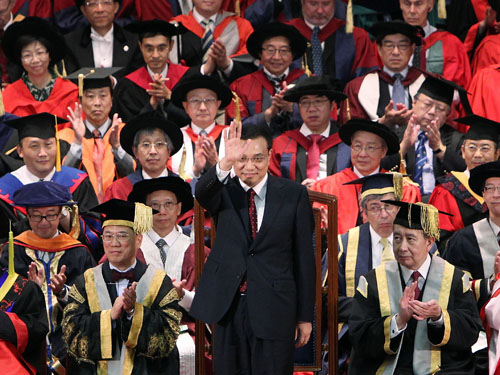
Vice-Premier Li Keqiang (center) waves yesterday during an appearance at Hong Kong University's centenary celebration.
Beijing surprised Hong Kong University during its 100th birthday celebration yesterday with a new
program to dramatically expand opportunities for its students and professors to study on the mainland.
The plan - announced by presumptive premier-in-waiting Li Keqiang during a speech to commemorate the university's centennial - would allow as many as 1,000 students and academics to participate annually in exchange
programs and research projects with mainland educational institutions.
"The central government will set up specific funds to support 1,000 students and teachers of the University of Hong Kong yearly to go to the mainland to study, exchange, and launch scientific research," Li told 600 guests gathered in Loke Yew Hall.
"What is more, the country will also support the launch of comprehensive and in-depth co-operation between other Hong Kong and mainland higher education institutions in order to help teachers and students get a better understanding of the mainland and
familiarize them with the situations of the country," the vice-premier added.
The program, which Li said would start next year, appeared to catch everyone in attendance unaware, even HKU administrators.
Pro-Vice-Chancellor Professor Amy Tsui Bik-may said the university was not given advance word of the announcement. She called it a pleasant surprise because local professors often had difficulty even applying for mainland funds.
"There are already many exchange programs for students and academic staff," Tsui said. "This time, it includes research collaboration. It is also a recognition of the achievements of Hong Kong scholars in scientific research."
The speech was also notable for Li's occasional use of English between praise for the university, where most classes are taught in the language of its British colonial founders. Mainland leaders rarely speak in any tongue other than Chinese.
"HKU is for Hong Kong, attracting talent and educating people to promote Hong Kong's prosperity
(SEHK: 0803) ," said Li, who is widely expected to succeed Premier Wen Jiabao after a 2013 leadership shuffle. "HKU is for China. It has become a key higher-education institution in China, playing an increasingly important role in China's development and its integration with the world."
Li said that he had gained a deeper understanding of Hong Kong by the end of his three-day visit.
"Hong Kong's role in the mainland's economic reform and opening up is irreplaceable," he said, praising Hongkongers as "dedicated and professional", and Hong Kong society as "open, pluralistic and vibrant".
August 19 2011
Share
China's Vice Premier Li Keqiang Unveils Hong Kong Yuan Measures
By Chester Yung and Fiona Law
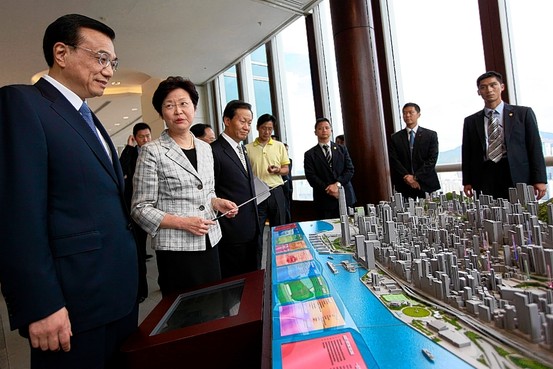
In Beijing's latest move to increase its currency's standing internationally, top Chinese leaders unveiled measures to bolster Hong Kong's status as a yuan-trading center.
On an official visit to Hong Kong, Chinese Vice Premier Li Keqiang on Wednesday announced several initiatives aimed at easing the flow back into mainland China of so-called offshore yuan traded in Hong Kong. He also announced plans to launch funds that would let mainland Chinese investors trade Hong Kong stocks. China's central bank governor, Zhou Xiaochuan, said the range of Chinese companies able to issue yuan debt in the territory would be expanded.
Analysts said the measures could generate even more demand for yuan-denominated assets in Hong Kong, which is part of China but operates under its own laws and with its own currency.
Mr. Li, who was joined in Hong Kong by Mr. Zhou and other high-ranking mainland officials, is widely seen as a leading contender to succeed Premier Wen Jiabao in 2013.
Currently China keeps strict controls on the yuan, also called the renminbi. By serving as a center for trading the yuan outside mainland China, Hong Kong has become a key player in China's push to give its currency more international presence.
Several of Wednesday's initiatives were expected, and it was unclear how quickly any would be implemented. For example, businesses and bankers eagerly await rules allowing proceeds from yuan debt offerings to be plowed back easily into China. Mr. Li suggested Beijing intends to follow through, but didn't say when.
Still, the latest move from China "takes yuan internationalization to the next stage," HSBC Holdings PLC said in a note Wednesday.
"This is the strongest endorsement yet of using Hong Kong as the platform for the increased use of renminbi internationally," said Julia Leung, Hong Kong's undersecretary for financial services and the treasury.
The measures come at a time of uncertain economic outlook for Hong Kong, whose recovery from the 2008 financial crisis has slowed in recent months amid volatility in the U.S. and European markets, compounded by surging inflation and intensifying competition with financial centers elsewhere in Asia.
In recent years, China's central government has implemented a number of policies that have helped boost Hong Kong's economy, in what some critics in Hong Kong call an attempt to quiet demands for greater democracy.
"Political reform is the most pressing issue in Hong Kong," said Albert Ho, chairman of the city's biggest opposition party. "It's a shame we didn't get to hear their thoughts on this front" during the officials' visit.
In his address Wednesday morning, Mr. Li said financial firms in Hong Kong will be allowed to buy domestic Chinese securities with the offshore yuan they hold. The total limit will be 20 billion yuan (US$3.13 billion)—small given the more than 500 billion yuan on deposit in Hong Kong's banking system as of June—but analysts believe it could be increased in the future
Mr. Li also announced plans to allow exchange-traded funds holding Hong Kong-listed stocks to be sold in mainland China, making it easier for mainland investors to gain exposure to Hong Kong's equities market.
"This is significant as, for the first time, a high-ranking Chinese official is endorsing a channel for domestic funds to invest in Hong Kong stocks, which could support the city as a wealth-management center and reinforce its financial-hub status," said Raymond Yeung, senior economist at ANZ Banking Group. It wasn't clear when the Hong Kong ETFs, which have been expected for some time, would actually launch.
Also on Wednesday, People's Bank of China Gov. Zhou Xiaochuan said China will allow nonfinancial companies from China to issue "dim sum" bonds, or yuan bonds issued in Hong Kong. The total issuance allowed for financial and nonfinancial companies this year will be 50 billion
yuan.
August 18 2011
Share
Investment Magnet
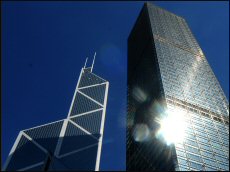
Hong Kong is the world’s third-largest recipient of foreign direct investment, at US$76 billion, according to the latest World Investment Report
Despite a population of just 7.1 million, Hong Kong was the world’s third-largest recipient of foreign direct investment, at US$76 billion in 2010 – a leap from US$52 billion in 2009. Hong Kong has bypassed the United Kingdom, which fell from third place to seventh. The figures are contained in the 2011 World Investment Report, published by the United Nations Commission on Trade and Development (UNCTAD).
For the 12th consecutive year, Hong Kong is Asia’s second-largest recipient of direct foreign investment, just behind the Chinese mainland and far ahead of Singapore, at US$39 billion. Hong Kong-based businesses have also made the city the world’s fifth-largest overseas investor, after the United States, France, Japan and Germany, at US$76 billion in 2010, ahead of the mainland, at US$68 billion. The city’s total stock of inward direct investment was estimated at US$931 billion at the end of 2009, according to UNCTAD, corresponding to 4.4 times its GDP that year.
Benefiting from its close proximity to the mainland, Hong Kong “acts as a very good capital-raising centre,” including for mainland companies, says Simon Galpin, Director-General of Investment Promotion at InvestHK, the government arm responsible for attracting foreign direct investment to the city. “We have had high-profile initial public offerings over the last decade, and when mainland companies list, they transfer assets to be owned by new state entities.”
Going Global
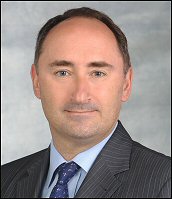
Simon Galpin Director-General of Investment Promotion, InvestHK
InvestHK focuses on mainland companies, Mr Galpin says, “and the pitch we make is: ‘Don’t come to us as the gateway to Hong Kong, but use us as a springboard to go global.”
Much of the investment flowing into Hong Kong goes back to the mainland, in large measure because Hong Kong has a simple, low-tax environment, allowing mainland companies to “mitigate their tax exposure,” says Mr Galpin.
“In every major city on the mainland, the number-one investor is currently Hong Kong. It is coming from indigenous companies, foreign companies investing, using their regional headquarters here.”
The flip side of the coin is that the mainland, whose steadily improving economy has built a growing corps of entrepreneurs, accounts for 36.4 percent of the investment into Hong Kong, followed by the British Virgin Islands, Bermuda and the Cayman Islands. Together, they accounted for another 40.6 of Hong Kong’s percentage, according to UNCTAD. It’s assumed that most, if not all of that money, is from the mainland.
According to an April report by HSBC China Chief Economist Qu Hongbin, the British Virgin Islands and the Caymans received 93 per cent of the mainland’s cumulative outward direct investment into Latin America.
Staying Put in Hong Kong
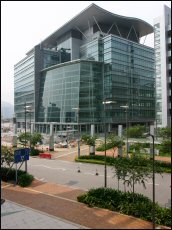
US healthcare technology provider, Hologic, has established a state-of-the art regional training centre at the Hong Kong Science and Technology Park’s dedicated Biotech Centre
Hong Kong benefits not just because it is a gateway to China, but because its regional location and governmental attributes make it the regional business hub of Asia. Global companies have established regional operations in Hong Kong because the English-speaking city boasts one of the world’s best transport links, and because its corporate and income taxes, cumulatively, are the third-lowest in the world.
As an indication of its value as an investment centre, Mr Galpin says funds continue to flow into Hong Kong from Taiwan despite increasing links between Taiwan and the mainland that now allow money to flow directly into the mainland. “A large number of Taiwanese companies still see the benefit of using a holding company structure in Hong Kong to make investments because of the city’s attributes,” he says.
InvestHK, Mr Galpin adds, “is not interested in paper-company holding structures. The thing that drives us is bringing in companies with new expertise, new services that create competition in Hong Kong. We are interested in the jobs that are created from companies setting up here, and the indirect benefits of using local services providers, local accounting firms, public relations.”
Global Regional Hub
The US leads, in terms of the number of regional headquarters that have set up in Hong Kong, with the mainland strong when it comes to opening local offices, according to InvestHK. There are also smaller operations, such as the healthcare technology provider Hologic, which recently established a state-of-the art regional training centre at the Hong Kong Science and Technology Park. The company has invested a further US$10 million in its Hong Kong operations, which were established 10 years ago with a single sales representative and have since grown to be the company’s regional headquarters, employing 20 staff.
“Hong Kong is very close to our biggest markets, Japan and China, so our location and the fact that we share the same time zone enables us to communicate with our customers more effectively,” says Paul Young, Head of Asia Pacific, Hologic. “We can also use Hong Kong as a services centre to send out spare parts and other consumables very efficiently.”
August 17 2011
Share
Hong Kong's Five-Star Teaching Hotel
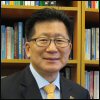
A five-star hotel managed by a team of hospitality professionals – most of them students – opened earlier this year in Hong Kong. Hotel ICON, founded and owned by The Hong Kong Polytechnic University, is a HK$1.3 billion (US$193 million) initiative that serves as a teaching and research hotel, as well as home base for the university’s staff quarters and its School of Hotel and Tourism Management.
Hotel ICON is the brainchild of the school’s dean, Kaye Chon, who was awarded the Ulysses Prize 2011 by the United Nations World Tourism Organisation for his contributions to advancing knowledge in tourism. In Six Questions, Professor Chon explains why Asia is now the centre of gravity for the global tourism industry.
How did Hotel ICON come about?
Hotel management is a practical field. It’s very important that our students study not only theory from books but also apply concepts in the real world. So we came up with this idea of building a teaching and research hotel, one that exemplifies the real world as close as possible. By studying in such an environment, students can learn and apply what they learn in real-life situations.
Second, research is important. The hotel industry is driven by traditions. We are doing a lot of things in the industry because other hotels have done it, without challenging or thinking through them. So we want to provide some new interpretations of hospitality. Third, it will help to professionalise our students. Studying in an upscale environment like this will definitely make a difference in student learning experiences as well as their life experiences.
How does Hotel ICON differ from other hotels?
There are some 20 to 30 universities around the world that have some kind of teaching hotel. But they are used more to accommodate visitors to the universities. A teaching hotel must be something the students can be fully integrated into. It should provide a fully integrated teaching and learning experience in a “real-world” environment, and also offer better opportunities for faculty members to conduct research in the areas of hospitality and tourism.
By Hong Kong standards, it’s a small hotel, with 262 rooms. But it has all the facilities of an upscale hotel. We have a ballroom called Silverbox, three commercially run restaurants, a magnificent Angsana Spa, fitness centre, swimming pool, conference and function space. The training restaurant, called Bristol 1979, was named after the year our school was established. We don’t plan to train our students to become chefs. We want to develop managers, but to become managers they must fully understand what employees do in a hotel and in a restaurant.
What are some of the special features in the hotel?
We tried to think outside the box, but the central theme was a fresh new interpretation of hospitality not bound by tradition. To maximise usage, we have an executive lounge on the top floor that’s used as a breakfast lounge in the morning and a bar in the afternoon. We provide fine Chinese cuisine in a contemporary Chinese restaurant environment – no red dragons – which leads to a wine bar. The wine bar is connected to three private dining rooms, one even with a private kitchen. We’ve observed that there is a group of high-end customers who like the idea of using a nice hotel with a nice view as venue, but who would want to bring their own chef.
I also insisted on having complimentary mini-bars in rooms. The mini-bar concept started in the United States in the 1970s as a way to bring in extra revenue. But in reality, hotels nowadays seldom make money on it. It doesn’t provide convenience to customers but, rather, adds dissatisfaction in many cases. On checking out, they will ask if you used the mini-bar. When you say “no,” they will still send somebody to check your room. The worst thing is if there’s a drink missing, which happens all the time. That’s why we provide complimentary mini-bar, and the customers love it. We offer free Wi-Fi in the rooms as well.
We also have a customer lounge, Timeless Lounge, for travellers on long-haul flights who arrive early in the morning or depart late at night. There was a frequent visitor from Canada who came back three times in a month because he loved the idea.
What can students learn from working at Hotel ICON?
We have a formal internship programme called the Work-Integrated-Education (WIE), through which students can integrate what they learn into the job or vice versa. They work and pick up ideas and apply them in the classroom. After the internship, the students can confidently participate in the class discussions and say, “When I was doing my WIE internship, this was the situation I encountered.”
It’s important for students to understand all aspects of hotel management, such as marketing, finance, human resources management. All of these are important because you are not just running one restaurant or one hotel.
You believe that there’s been a shift in the global hotel industry. Can you explain the idea behind the “Asian Paradigm?”
Historically, hospitality education has had different paradigms. The first was the European paradigm, because Europe was the origin of the hotel industry. In the 19th century and early 20th century, the European paradigm defined quality and excellence.
After the Second World War, the American hotel industry became prosperous and very successful, especially with the international expansion of American brands such as Holiday Inn and Marriott, which expanded internationally and replicated their successes in other countries.
But in the last 10 years or so, Asia has gradually been regarded as a centre of excellence in hospitality and tourism business. More than 80 percent of hotel customers in Asian countries are Asians. The demography has changed. Also, Asian airlines are now the best in the world. You also have the best airports in Asia. If you look at the list of the best hotels in the world, a large number are located in Asia.
The reason why Asia has emerged as the centre of excellence is its strong hospitality culture; that is very conducive to excellent service, which has become an Asian virtue. It’s customer-oriented: you want to make sure that the customer’s well-being is taken care of, not because you’re earning money from them but because it’s part of the culture.
The centre of gravity of the world economy, including tourism, has moved to Asia, with emerging countries such as China a major tourism destination as well as a source market. I believe there will be huge opportunities for a university in Asia to take leadership.
How can Hong Kong play a pivotal role in leading the Asian hospitality industry?
Hong Kong has the best combination of efficiency and a service culture. Hong Kong is also extremely entrepreneurial and business-minded. All these, combined with the traditional Asian virtue, which is respectful, helpful and customer-friendly, has earned Hong Kong very good credits.
At the hotel opening ceremony, I told our students that my dream was to see them someday become general managers and executives, not only in hotels in Hong Kong, but also in London, New York and other world cities. I think this day will come. That’s our school mission.
August 16 2011
Share
Chinese Vice Premier Li Keqiang Signals New Measures to Support Hong Kong
By Chester Yung
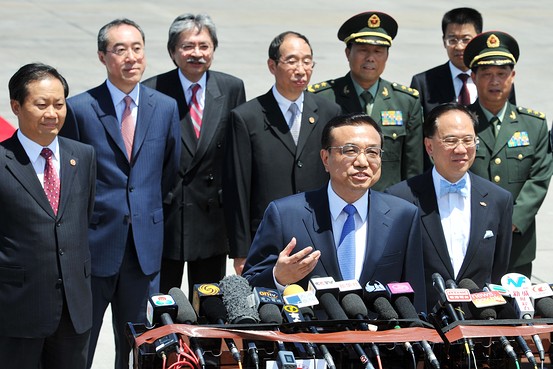
China's Vice Premier Li Keqian addresses the media upon his arrival to Hong Kong on Tuesday. Mr. Li, the expected successor to Premier Wen Jiabao, is making a three-day visit to Hong Kong with plans to speak about economic ties with the territory.
Chinese Vice Premier Li Keqiang kicked off a three-day visit to Hong Kong on Tuesday by announcing plans for fresh measures to back the Chinese territory's economy, which faces an uncertain outlook amid a brewing global confidence crisis.
The visit by Mr. Li, who is seen as a leading contender to succeed Premier Wen Jiabao, comes amid growing public distrust in the Hong Kong government for its inability to slow booming consumer prices and rein in the city's red-hot private housing market.
Chinese government officials have earlier pressed the Hong Kong government, which has its own set of laws and rules distinct from China, to make housing more affordable for the general public.
"I have brought with me new measures...to further support Hong Kong's development...and to deepen economic and trade cooperation between mainland China and Hong Kong," Mr. Li told reporters at the city's international airport.
Mr. Li, who is leading a delegation of top officials that includes People's Bank of China Gov. Zhou Xiaochuan, Minister of Commerce Chen Deming and National Development and Reform Commission Director Zhang Ping, said he will present the measures Wednesday during a speech at a economic forum.
Local media reported earlier that Mr. Li will likely announce measures to boost the offshore yuan trade in Hong Kong, as well as an expanded scope for Chinese yuan trade settlement.
Hong Kong has been developing into a major offshore yuan hub since China removed some restrictions last year on the use and circulation of its currency. The city's push to boost its yuan profile reflects its desire to remain competitive with the emergence of Shanghai's financial and trading markets.
Hong Kong's yuan market has blossomed over the last year, underpinned in large part by strong demand for yuan assets from investors betting on the currency's continued appreciation.
Some analysts and traders are keenly watching Mr. Li's speech Wednesday for streamlined rules that could make it easier to bring yuan funds raised offshore back to the mainland.
Such a move could further diversify the use of the Chinese currency available offshore and encourage more firms to issue yuan-denominated securities in Hong Kong. Currently, China's capital account is strictly controlled, and approvals for yuan remittances into China in the form of foreign direct investment are given only on a case-by-case basis.
August 15 2011
Share
Accounting body to accept American qualifications - Under an agreement US institute will also recognise 30,000 certified accountants from
Hong Kong By Amy Nip
 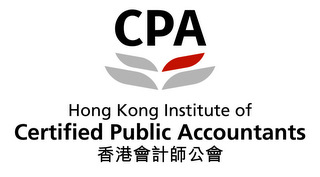
About 370,000 American accountants will have their professional qualifications
recognized in Hong Kong from October. In return, 30,000 certified accountants from Hong Kong will be
recognized in the US by the American Institute of Certified Public Accountants.
A deal has been reached between the US body and the Hong Kong Institute of Certified Public Accountants after five years of negotiation.
"Such arrangements make it much easier for professionals to practise in other regions," Jonathan Ng, the Hong Kong institute's deputy executive director, said.
However, American accountants would still need to sit exams in two subjects, tax and law, to become certified accountants in Hong Kong. They would then need to fulfil a specified period of auditing experience before they could practise in the city. The same rule applies to accountants from Commonwealth countries practising in the city.
Ng said the negotiations had taken so long because different US states had different requirements.
"More American accountants may come to Hong Kong, but strong growth in the mainland market would be able to absorb the increased manpower," said Dr Daniel Ho, an associate professor at Baptist University.
A growing number of professional bodies in Hong Kong face pressure to recognise qualifications from countries outside the Commonwealth.
Cardiologist Dr Lau Yuk-kong took the Medical Council to court over its refusal to recognise his qualification as a fellow of the American College of Cardiology, a credential
recognized in Britain and on the mainland. He won his case last week.
US architectural qualifications are recognized in Hong Kong, but the engineering sector has yet to sign mutual recognition agreements with the US.
The different systems in different states made negotiations more complicated, Hong Kong Institution of Engineers president Chan Fuk-cheung said.
August 10 2011
Seizing the Initiative - Eric Crowley, Commercial Consul of the US Commercial Service, talks up opportunities for Hong Kong companies sparked by US plans to expand exports.
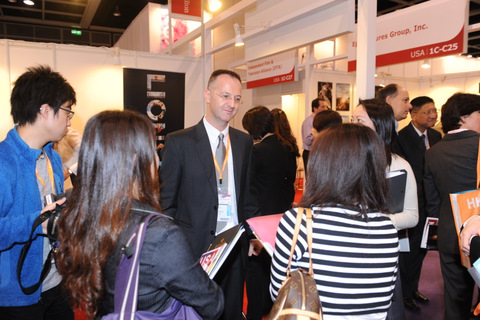
Only one per cent of the 30 million companies in the United States export their products and services abroad. The US government is hoping to change that under the National Export Initiative, which aims to double American exports over the next five years. The US government has identified nine key sectors that it believes US companies have an advantage: creative and entertainment; education and training services; financial services; healthcare, medical and biotechnology; information and communication technology; licensing and professional/business services; renewable energy, environmental; testing and certification services; and value-added food products, such as wines and spirits.
Responding to the US National Export Initiative (NEI), Hong Kong has taken the lead to help US companies find new markets in Asia. The Pacific Bridge Initiative (PBI) encourages US firms to tap Asian markets through Hong Kong. According to Eric Crowley, Commercial Consul of the US Commercial Service at the American Consulate General, the new initiative creates opportunities for Hong Kong companies to partner with US companies entering Asian markets.
What is the US National Export Initiative?
There are five key elements to the NEI. It includes improving trade activities and promotions, so that means more trade shows, trade missions and trade events. It also includes improving access to finance, so that involves giving access to credit and providing insurance for exporting companies. And we are moving barriers to trade – whether it’s tariff barriers, regulatory barriers, all types of subsidy barriers, as well as enforcing trade rules. We are also pursuing global policies to ensure there is a stronger and balanced, sustainable growth on a global basis.
Why are you promoting NEI in Hong Kong?
Most US companies don’t know Hong Kong. Only one per cent of US businesses are engaged in exports, so many don’t know the overseas market. It’s part of our job with the NEI and PBI to educate people about Hong Kong and its opportunities. Hong Kong ranks 12th in the US’ export market. We believe it’s not only a good market in its own right, but it’s also a great platform to the Chinese mainland and markets around the region. There are a lot of reasons why: it’s got great market proximity, it has a very strategic location; you can reach nearly half of the world’s population from Hong Kong, and it has world-class transportation.
What does this mean for US and Hong Kong companies?
The US economy is sluggish, but there are tonnes of opportunities around the world. Through the NEI and PBI, we are doing more outreach events to educate US companies, a lot of them that just focus on the domestic market. The US consumer market accounts for 40 per cent of the total global consumer market. So it’s understandable why US companies were just focused on the domestic market. However, the trend is that other economies around the world are growing faster, and greater competition from abroad no longer makes it efficient for US companies to focus solely on the domestic market.
With the NEI, we are encouraging US companies to focus more on international opportunities. So that’s also an opportunity for Hong Kong companies, because about 99 percent of US businesses that have not been exporting, will look to the overseas market, especially Greater China and the Asia-Pacific region. And they are going to need partners to help them enter those markets.
We provide a range of services, most of them targeted to help US companies export. But we also provide services to Hong Kong companies, including business matchmaking. So if you are looking for a supplier, or a US partner, we can introduce you to an appropriate partner. Also, if you are already importing or distributing or are an agent for US products and services, we can work with you to help you promote the US product and service you represent. We also provide a service called “Industrial America”, so if you are interested in establishing a presence in the US, we can provide information and contacts to help you do that.
Do you see interest growing in exporting among US companies?
Last year, US exports overall grew at about 21 per cent. In Hong Kong, it was even higher. US exports to Hong Kong rose by more than 26 per cent last year. In the first quarter of 2011, US exports grew by 18 per cent globally, so that’s great news, which puts us ahead of schedule.
In Hong Kong, I was amazed to see it grow by 42 per cent in the first quarter of this year. Looking at the categories, the one that saw a huge leap was metals, which jumped by nearly 2,000 per cent, from 90 per cent last year. The large-scale construction going on in the Chinese mainland has sparked the surge in metal demand. Computer and electronics have also grown by eight per cent.
Only about one per cent of US companies export at the moment, and typically, Hong Kong would not be the first place they would explore. Hong Kong is a great place, but they are not aware of the benefits of using Hong Kong as a platform. As we do more outreach and educate people about the benefits using Hong Kong as a hub, I think more and more companies will be interested in coming to Hong Kong.
How was the response from companies that took part in last year’s Eco Asia Expo under the PBI program?
Generally it was very positive. We went from one exhibitor to 37 exhibitors from 2009 to 2010. I talked to various people, including exhibitors, who seemed happy with the companies they were meeting. In term of sales, we went from zero to more than US$700,000 dollars in sales.
Will Hong Kong become a re-export hub for US companies?
It already is. Fifty per cent of US exports goes to and through Hong Kong to the mainland and other markets. That’s how we market Hong Kong: it’s not just a market, more importantly, it’s a hub and a platform for US companies to enter the mainland and Asia Pacific. Its logistics centre, professional business services, and critical mass of support all help US companies do business regionally.
Smart Touch - SmartHK
“Innovation” and “industry upgrade” are synonymous with Conrad Pong’s firm Hong Kong-based Spark Creative Communication, which exhibited at SmartHK at the Guangzhou Jinhan Exhibition Centre in May. His company had already built contacts with many Chinese mainland enterprises that have upgrading and innovation in mind.
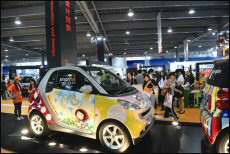
SmartHK, the first joint Hong Kong-Guangdong services promotion event on the mainland was held in Guangzhou in May
One of them was Dongguan firm Kam Tat Lighting, which built a chandelier brand name with help from the Hong Kong company. With so many chandelier brands on the Dongguan market, there was a pressing need to stand out from the crowd, so Mr Pong created a deal that brought in global brand Swarovski to cement the product’s success.
Such services in brand management and design were very much in demand at the event, jointly organised by the Hong Kong Trade Development Council (HKTDC) and Guangdong Province’s Department of Foreign Trade and Economic Co-operation and the Guangdong branch of the China Council for Promotion of International Trade.
About 220 Hong Kong services providers joined the showcase event, the largest mainland fair organised by the HKTDC to promote Hong Kong’s services and technology firms. The exhibition covered 20 services sectors in the areas of design innovation, technology advancement and marketing and management upgrade.
Based on the number of on-site enquiries, “design and branding” was the most popular sector, accounting for 14.7 per cent of the total enquiries, from mostly mainland manufacturers, brand owners and retailers.
A number of mainland enterprises visited all of the booths in the design and branding zone. Aside from comparing prices, mainland enterprises talked to each exhibitor, intent on sourcing a Hong Kong company to help them build their brands. Lengthy discussions were held between companies, covering comparisons of strength and possible synergies, with prospects for partnerships.
Domestic Brands
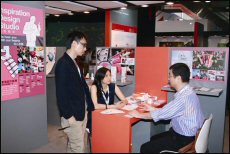
Inspiration Design Studio met manufacturers eager to ride on government policies to help them develop their own brands
Kelvin Wong, Creative Director of Hong Kong’s Inspiration Design Studio, said he was very satisfied with the two-day exhibition, noting that many mainland enterprises visiting his booth were potential new clients. Preliminary agreements were reached with several enterprises. Mr Wong said visitors to his booth were manufacturers hoping to ride on the upgrade opportunities offered by the Central Government’s 12th Five-Year Programme to develop their own brands for the domestic market.
The trend for mainland manufacturers to switch from exports to domestic sales has generated huge demand for services, particularly in brand-building and developing sales networks. With major production experience and confidence in the quality of their products, these manufacturers, however, often don’t possess their own brands. Thus, there is growing awareness among these manufacturers of the need to develop brands that suit the domestic market, creating demand for such services as brand-building, product name and management, trademark development, product promotion and shop design.
Many mainland enterprises with strong production capacity lack sophisticated marketing capabilities, said Mr Wong. Companies, mostly garment and cosmetics enterprises, that enquired at Mr Wong’s booth didn’t know what questions to ask. It was noted that one-stop services from Hong Kong companies were particularly in demand, because they provide a range of expertise that mainland enterprises can coordinate with their own operations.
Mr Wong said his company offers consultancy services to help identify enterprises’ product strengths, fix target markets and position their brands. For companies planning to open retail outlets, it offers such services as identifying the right cities and suitable locations for outlets, shop design and other operational expertise.
“The tasks involved include trademark development, product design, image design, interior design for the shops, marketing and promotion and brand management,” said Mr Wong. “We can work with our peers on these jobs, as a single company may not be able to handle them all.”
International Perspective
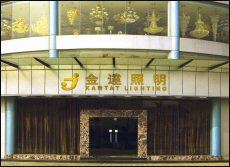
Before and after: Hong Kong’s Spark Creative Commmunications helped Dongguan-based Kam Tat Lighting create a more international image to promote its brand
Mr Pong from Spark Creative Communication said he met businesses in the office equipment and household products sectors, which were also looking to develop their own brands. Many mainland manufacturers still prefer to commission a Hong Kong company to build and manage their brands, he said, because Hong Kong design firms have a broader perspective and are capable of developing international brand names.
In the campaign it developed for the Dongguan firm, Kam Tat changed its chandelier brand name to Riserva to evoke the image of ancient Russian crystal chandeliers. This was later enhanced by co-branding with the world-renowned Swarovski.
Two years later, Riserva has more than 70 specialist stores and even during the financial crisis, the brand maintained 25 per cent annual sales growth. Later, the company also invested Rmb10 million on TV commercials and hired film star Huang Xiaoming to endorse the brand.
With Riserva expanding rapidly on the mainland, Spark Creative Communication appointed top mainland advertising firm Ye Maozhong to take over promotions across the country. Mr Pong noted that brand management is crucial, especially once the brand has returned to the custody of its owner.
Digital Media
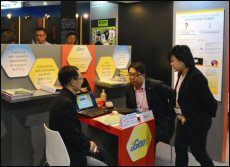
iGen6 new Media specialises in digital-media promotion
Advertising and promotional services also saw robust demand at the fair, with the use of new media a focus. Rex Ma, Managing Director of iGen6 New Media Company Ltd, said the event was an excellent platform for the company to showcase its strengths in digital media promotion. The company established contacts with new clients in Guangzhou and Shenzhen during the exhibition.
Mr Ma said his company’s digital media services are built mainly on an integrated “six dimensional platform,” connecting clients’ websites with other common social networking sites such as Facebook, Twitter and so-called microblogs that are popular on the mainland.
Mr Ma’s company also helps clients conduct opinion polls, implement marketing and promotion plans, as well as manage products online. The mainland’s vast territory and large population give digital promotion channels an effective lead in the marketplace, said Mr Ma. During the two-day exhibition, iGen6 New Media Company linked up with a number of new clients, including real estate and environmental protection technology firms, as well as so-called “old media” manufacturers of consumer products such as garments and leather shoes.
Aug 8 2011
Sogo operator expects Hong Kong to outperform mainland By Celine Sun
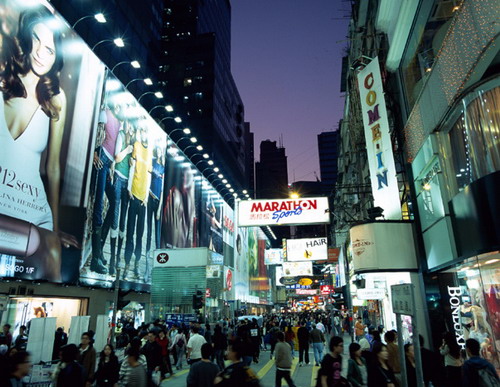
Lifestyle International sees better second half based on surge in tourist arrivals in "Asia's world city"
Lifestyle International Holdings (SEHK: 1212), one of Hong Kong's largest department store operators, expects the Hong Kong retail market to do better than the mainland market in the second half of this year thanks to positive market sentiment and an upsurge in tourist arrivals in the city.
The operator of Hong Kong's Sogo and mainland's Jiuguang department stores posted net profit of HK$807 million for the six months to June, up 30.6 per cent from the same period last year.
Turnover grew 20.6 per cent to HK$2.4 billion for the half-year period.
The company's share price closed down 35 HK cents, or 1.5 per cent, at HK$23.05 yesterday compared with a 2.17 per cent fall in the benchmark Hang Seng Index.
Managing director Thomas Lau Luen-hung said the two Sogo stores in Causeway Bay and Tsim Sha Tsui had seen strong growth, while the retail sector in Hong Kong had also shown remarkable growth this year.
Sales revenue at the two stores rose 23 per cent year on year to HK$4 billion, accounting for 2 per cent of gross retail sales in the city for the period, lifted by rising demand for luxury goods. Same-store sales growth was more than 20 per cent compared with last year.
Meanwhile, Shanghai Jiuguang store, the company's largest branch across the border, achieved 983 million yuan (HK$1.18 billion) in sales revenue in the first half.
However, growth at the shop started to slow down from May as the credit tightening and global economic uncertainties started to bite, the company said.
"We expect the same store sales [at our Shanghai shop] will achieve a low double-digit increase for the rest of the year," Lau said.
The company also operates two stores in Dalian and Suzhou and one shopping mall in Tianjin that was opened last year.
The company declared an interim dividend of 19.2 HK cents per share for the period.
Aug 3 2011 Share on Facebook
Generation Tea
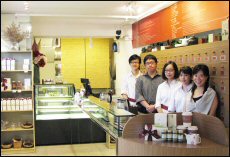
Andrea Chung (far right) opened Leaf Tea Boutique in Hong Kong’s Central business district last year
When Andrea Chung opened Leaf Tea Boutique seven months ago, she envisioned bringing together the different elements of Hong Kong’s tea-drinking culture in one place. After all, said Ms Chung, Hong Kong is in a unique position with its strong population of tea drinkers, who are influenced by their Chinese heritage and British traditions.
“I thought that there was a chance for a place like this, one that has teas from all over the world, prepared nicely in the correct way to bring out the best in taste,” she said from her shop in busy Central.
To stay on top of global tea trends and challenges, Ms Chung will be attending this year’s Hong Kong International Tea Fair, 11-13 August, at the Hong Kong Convention and Exhibition Centre. The fair’s third edition is expected to attract nearly 300 exhibitors from 12 countries and regions.
While Leaf Tea Boutique’s core clientele is people who have some knowledge of tea, Ms Chung said she is trying to attract the younger generation to experience it “properly.”
Fresh Brew

Non-traditional varieties, such as fruit teas, appeal to the younger crowd
“It’s a challenge to get the younger generations interested because first, for young Chinese, tea is something that is old and traditional,” said Ms Chung. “The mentality switch is part of our challenge. We’re trying to build an image that is young, trendy and elegant.”
To help make the tea boutique concept more familiar, the store has borrowed a few ideas from coffee shops: all teas are priced at HK$30 a cup, which is in line with many coffee or coffee-type beverages; a tea bar lines the inside of the shop, where tea is prepared fresh on the spot; and, takeaway and iced options are available for all 40 varieties.
According to Ms Chung, that familiarity helps distinguish her tea house from traditional tea houses, while emphasising the brand’s core values of high-quality tea prepared in the correct manner.
Fruity Teas
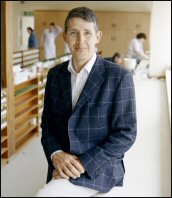
Stephen Twining, Director of Corporate Relations, Twinings Tea
But while the shop concept is important, flavour plays a crucial role in attracting different demographics.
“In terms of the younger generation, they seem to prefer fruit teas, something a bit more ‘fun,’” said Ms Chung. “It’s a balance, but we’ll be introducing more fruity teas.”
Ms Chung’s observation is echoed by Stephen Twining of international tea brand Twinings. A 10th generation member of the famed Twining tea legacy, the company Director said that one of the ways Twining appeals to the younger tea drinker is by offering a wide range of blends.
“Often, the younger tea drinker will start drinking fruit infusions and then move into the classic teas later on,” Mr Twining said. “The young are more open to trying different flavours and so are more adventurous and explore a wide range of flavour and blends.”
Sometimes the opportunity to explore can produce some surprising results. Ms Chung, for example, didn’t expect the South African herbal rooibos tea to be as popular as it has been with local tea drinkers, especially combinations such as blackcurrant rooibos.
To help introduce current and potential clientele to premium teas, Ms Chung has undertaken an extensive education programme as part of her marketing strategy. Ms Chung organises regular tastings in the boutique and has started branching out into the corporate world. A tasting session with employees of the Bank of China exposed then to different and new teas and educated them on its healing benefits.
Afternoon Tea
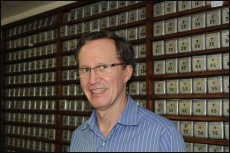
Keith Hutjens, Director of Tea Procurement, Tazo Tea
Ms Chung has also partnered with the luxury lifestyle brand Jo Malone, which introduced a new collection of tea fragrances. Ms Chung’s boutique took part by offering client and press tasting sessions, gaining important brand exposure with an affluent market.
Inter-industry collaborations may be a growing trend to attract new, young customers to tea. Twinings recently collaborated with British fashion designer Alice Temperley to create a limited-edition scarf for their re-launch of their Earl Grey Blend in the UK.
“Afternoon tea, of which Earl Grey tea is a perfect choice, has always been an elegant affair. We then asked Alice Temperley to design us something that might be worn by a lady and Alice came up with the wonderful scarf, with the design to reflect the origins of the blend, and is both elegant and contemporary,” said Mr Twining. “I think it is always good to collaborate with different companies as we should always be open to new ideas and possibilities. While one of the key pillars of Twinings is our expertise, we are always looking outside for inspiration and new ways of thinking and doing things.”
For Keith Hutjens, Director of Tea Procurement for Tazo Tea, getting people of all ages to drink more tea requires an emphasis on flavour, high quality and creativity.
“You create opportunities so that a customer can come into a Starbucks store and easily walk out with a Zen Shaken Lemonade Iced Tea,” said Mr Hutjens. “Or you create an avenue for them, such as a package we did in our stores four years ago, where we took our filter bag teas, put five different flavours together, which all make great iced teas, and put a recipe book in it. [We wanted to say] our Joy Tea, our Om, will not only be good hot, but also good iced.”
Stephen Twining and Keith Hutjens are speakers at the upcoming International Tea Industry Conference during the Hong Kong International Tea Fair, 11-13 August, at the Hong Kong Convention and Exhibition Centre
July 26 2011 Share on Facebook
希拉莉讚揚,香港雖然變了很多,但在「一國兩制」下,仍然是中西方聯繫的橋梁,特別是「公平」、「開放」、「自由」及「透明」四項核心價值始終不變
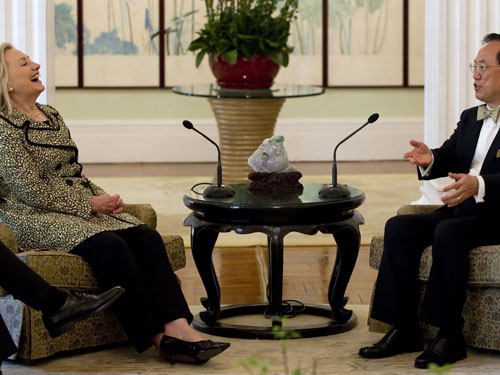
到訪香港不足二十四小時的希拉莉(左),與曾蔭權會面。
莉旋風式訪港不足二十四小時,分別會見行政長官曾蔭權及四名立法會議員;並於美國商會午餐會上,就亞太地區經濟發表演說。希拉莉指,相信美國國會會就調高債務上限的爭議作出正確決定,又指面對全球經濟發展,美國人會學習「少花費、少借貸」,同時要「多儲蓄」,一改以往的高消費模式;美國又會將經濟外交的重點放於東亞及太平洋地區,以達至雙贏局面。
她在演講開首部分已讚揚,香港雖然變了很多,但在「一國兩制」下,仍然是中西方聯繫的橋梁,特別是「公平」、「開放」、「自由」及「透明」四項核心價值始終不變,令香港成為不少外企尋找商機的重要地點:「香港是高透明度社會的見證,並擁有良好管治、法治、新聞自由、司法獨立和活躍的公民社會。這解釋了為甚麼有這麼多人選擇在這裏營商。」
對於國內有關調高債務上限的爭議,希拉莉指,這是個對國內外都有重要影響的決定,又承認國內對此有強烈爭辯,但她有信心美國國會會作出正確決定,並與奧巴馬政府一同改善美國的長遠經濟狀況。
希拉莉又形容,面對全球經濟發展,美國現時正經歷「必須的轉型」,改變過去的高消費模式:「我們一定要『多儲蓄、少花費』,同時也須要減少借貸。這不單止是美國,我們的夥伴也一定要經歷這個轉變,沒有其他方法。」她又指,長遠的經濟增長,須要靠儲蓄率較高的亞洲國家擴大內需,這亦有助美國創造就業及穩定全球經濟。
為了令國內經濟盡早復甦甚至有增長,希拉莉指,美國會將經濟合作列為首要處理的外交政策之一,希望藉此與其他國家達至雙贏局面,其經濟外交重點將會放於東亞及太平洋地區。
外界一直估計美國密謀「重返亞洲」,重拾昔日對亞太地區的影響力,希拉莉不諱言指,亞太區的未來與美國是不可分割的,因為美國是亞太區的常駐勢力,「不只是外交或軍事上的勢力,而是一股常駐的經濟勢力。我們的影響力將長留於此。」
希拉莉於午餐會後轉往深圳,與國務委員戴秉國會面,並於昨晚經本港返回華盛頓,結束為期十一天的亞洲外訪行程。希拉莉是次行程中曾到訪土耳其、希臘、印度及印尼,並以本港作為尾站
希拉莉曾於一九八一年陪同丈夫、時任阿肯色州州長的克林頓訪港;其後克林頓榮升美國總統,她亦在九八年陪同丈夫訪港。十三年後重遊舊地,希拉莉於昨日美商會舉行的午餐會上,以美國國務卿身分發表演說,分享對亞太地區經濟發展的見解。
Reiterating that theme, Clinton lauded Hong Kong as "a testament to the power of transparency, good governance, the rule of law, freedom of the press, an independent judiciary, and a vibrant civil society, all of which help to explain why so many people choose to do business here." Click here to view Video presentation
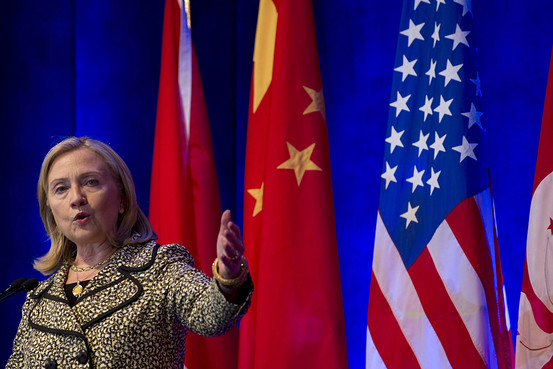
US Sec. of State Hillary Clinton gives a speech at the American Chambers of Commerce in Hong Kong on July 25, 2011. Clinton told Asian business leaders she was confident US lawmakers would reach a deal to avert a debt default.
In Hong Kong yesterday, U.S. Secretary of State Hillary Rodham Clinton publicly addressed several major economic issues, chief among them the ongoing fracas in Washington over raising the U.S. debt ceiling before an August 2 deadline.
In a speech co-organized by several local branches of the U.S. Chamber of Commerce and Asia Society Hong Kong, Clinton conceded that "the political wrangling in Washington is intense right now."
But, she continued, "these kinds of debates have been a constant in our political life throughout the history of our republic. And sometimes, they are messy. ... But this is how an open and democratic society ultimately comes together to reach the right solutions.
"So I am confident that Congress will do the right thing and secure a deal on the debt ceiling, and work with President Obama to take the steps necessary to improve our long-term fiscal outlook."
Clinton's remarks were widely seen here as intended to reassure China. With holdings of more than $1 trillion in U.S. treasury bonds, China is the largest holder of American debt in the world, and has been closely, if quietly, monitoring the U.S. debt ceiling debate.
The Secretary also urged Asian countries to adopt a more multilateral approach in trade and economic matters. She cautioned against a "hodgepodge" of bilateral agreements that could potentially impede true regional integration.
July 23 2011 Share on Facebook
Hong Kong Ex-civil servants to face new rules on jobs - Revised regulations follow case of former housing chief who went to work for property developer
By Fanny W. Y. Fung
The government yesterday announced 30 measures meant to tighten restrictions on post-service jobs for former civil servants, but conceded they couldn't prevent former officials taking jobs that might constitute a reward for services rendered while in office.
Under the measures, which will come into effect in September, officials vetting applications for post-service jobs by former directorate-level officials will be able to take into account likely "public suspicion" that a former official is being given a "deferred reward" by a new employer for decisions made while in office.
Applicants will have to provide information about past dealings with prospective employers, and the advisory committee which vets the applications will be expanded and given a more independent role. Approved applications will be available to view on the government website.
"From a legal point of view, an individual's right to work is a fundamental right guaranteed by the Basic Law and the International Covenant on Economic, Social and Cultural Rights," said Denise Yue Chung-yee, secretary for the civil service, as she unveiled the measures.
"While it is not an absolute right, any restrictions placed upon it must be supported by strong and specific justifications, and must be no more than necessary to achieve the objective intended by the control regime. Otherwise, the administration may be vulnerable to legal challenge."
The measures stem from a row in 2008, when former housing chief Leung Chin-man went to work for a developer. In 2004, when Leung was housing director, the developer's sister company had been in a consortium that bought a housing estate from the government at a discount.
Last year, a government-appointed review committee and a Legislative Council select committee recommended tighter restrictions on post-service jobs. Yesterday, the Civil Service Bureau said it was adopting most of the suggestions, though not one that would lengthen the period for which former officials must seek approval for any new job. For top officials, that period is now three years. It is shorter for junior officials.
Legislator Lee Wing-tat, deputy chairman of the select committee, said he was unhappy the government had rejected longer control periods - which he called the most important reform proposal. "If an official waits for five years until he starts another job, the government policies may well have changed and the confidential information he knows will be outdated by then," Lee said.
Yue said the government had decided against lengthening the control period because it wanted to balance the public interest with individuals' rights, and avoid legal challenges.
"We have to bear in mind that an overly stringent control regime would affect the morale of civil servants, undermine the attractiveness of the civil service for quality individuals, engender recruitment and retention problems, and restrict the productive use of limited human resources in our society," Yue said.
A government source said the Department of Justice had sought legal advice from a Cambridge University law professor and a Queen's counsel in London. Both had warned that lengthening control periods would infringe former officials' legal rights.
MAIN POINTS
Public suspicion of deferred reward to be included in vetting criterion
Applicants must disclose contacts and dealings with prospective employers for the previous three to six years, depending on rank
Approved applications will be posted on the government’s website for public scrutiny
Advisory committee on post-service employment expanded from five to nine
July 21 2011 Share on Facebook
Banks Build Critical Mass in Hong Kong
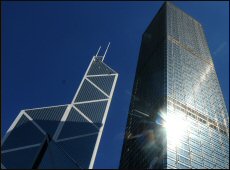
Hong Kong’s banking sector is swelling with international players
RBC Capital Markets, the corporate and investment banking arm of Royal Bank of Canada, recently announced two strategic appointments: Canadian Doug Moore has been appointed to the newly created position of head of RBC Capital Markets, Asia, while Australian Alan Downie, newly appointed Chief Operating Officer, Asia-Pacific for RBC Capital Markets, will relocate from Sydney. The high-level executive reshuffle, in June, follows RBC Capital Markets’ announcement last November of a new trading floor in Hong Kong, doubling its capacity. They reflect what the bank calls “a step change in RBC’s revenue growth in the Asia-Pacific region,” which “will be driven by Hong Kong.”
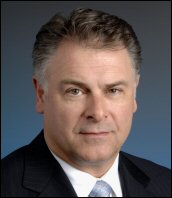
Mark Standish, co-CEO, RBC Capital Markets
Mark Standish, RBC Capital Markets’ co-CEO, said the appointments were in line with the bank’s growth strategy. “We are focused on further expansion of our platform in Asia. The creation of this position [filled by Mr Moore] signifies the importance of the region for RBC Capital Markets, as well as the opportunity we see for distributing our global products.” The appointment of Mr Downie, formerly COO of Australia, is “in line with the firm’s increasing emphasis on the combined region.”
The Hong Kong-Canada Connection
RBC is also leveraging the natural affinity between Canada and Hong Kong. As Canada’s largest global bank, RBC says it is ideally positioned to leverage this connection. It views growth in Hong Kong as an extension of its global business, and a stepping stone to the Chinese mainland. “It is therefore critically important for RBC Capital Markets to be in Hong Kong.”
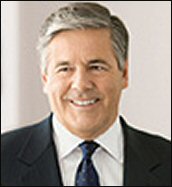
Dr Josef Ackermann, CEO, Deutsche Bank
Other international banks are also expanding in Hong Kong to tap the regional market. The Bank of Tokyo-Mitsubishi UFJ Ltd, a unit of Japan’s biggest publicly traded lender, has announced plans to increase its Hong Kong workforce by 11 per cent in the next three years, to expand private banking and offshore yuan services. “Our top management aims to have 40 per cent of profit coming from overseas markets,” Hidemitsu Otsuka, Executive Officer and Regional Head for Hong Kong at Bank of Tokyo- Mitsubishi UFJ, told Bloomberg. “Among the overseas markets, Asia is the important.”
Pivotal Regional Hub
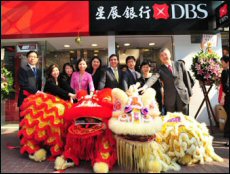
Sebastian Paredes, CEO, DBS Bank (Hong Kong) Ltd (sixth from left), officiates at the opening of the bank’s new service centre for SMEs
Deutsche Bank’s move to the International Commerce Centre earlier this year reflects Hong Kong’s growing importance as a regional hub for the bank and its growing staffing requirements in the city.
At its February opening, Deutsche Bank CEO Dr Josef Ackermann said the base of operations in Hong Kong, its regional hub since 1958, has served as a springboard for its transformation. He highlighted Hong Kong’s business-friendly environment as a major factor in Deutsche Bank's decision to establish a regional hub in the city, and reaffirmed its commitment to the city.
"Hong Kong was the number one market for IPOs globally in 2010, with a record US$57 billion raised, speaking for its global standing. Deutsche Bank is particularly proud to have uniquely played a leading role in all three of the world’s largest IPOs – ICBC, Agricultural Bank of China, and AIA – which successfully listed here in Hong Kong."
DBS Bank (Hong Kong) Ltd has expanded its SME business by opening a new DBS Finance and Enterprise Banking Centre.
Sebastian Paredes, CEO, DBS Bank (Hong Kong) Ltd, described Hong Kong as “our anchor market for DBS' Greater China strategy and loan service in consumer banking,” one of the main focus areas of the bank's growth plans. He added that DBS Bank “remains at the leading position for SME banking services and we hope to establish long-term partnerships with our SME customers, to provide personal support and to seize the business opportunities in Asia together."
Growth through M&A
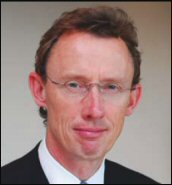
Mark Aedy, Head of Europe, Middle East and Africa Investment Banking, Moelis & Company
Moelis & Company, a New York-headquartered independent investment bank, is also expanding in Hong Kong via acquisition. The acquisition of independent financial advisory firm Asia Pacific Adviser, enhances Moelis & Company's global footprint and further strengthens its Asia-Pacific capabilities, adding an established team in Hong Kong to complement the firm's growing business in the region.
"As a leading global investment bank, it is critical for Moelis & Company to have a strong presence in Asia,” said Mark Aedy, Head of Europe, Middle East and Africa Investment Banking for Moelis & Company. “More than ever, clients are seeking global knowledge and perspectives, and being in Hong Kong significantly enhances our ability to deliver that information to them."
Bids for Bankers
Banks and hedge funds in Hong Kong are increasingly having to offer their staff lucrative counter offers – known as “buybacks” – to stop them leaving for rival firms, says Astbury Marsden, a leading financial services recruitment firm.
Astbury Marsden explains that a rise in demand for qualified banking and hedge fund staff in Hong Kong has meant that three out of four employees looking to switch jobs will now be offered healthy pay rises just to stay with their current employer.
Mark O’Reilly, Managing Director at Astbury Marsden in Asia Pacific, says: “Existing employers will often make aggressive counter offers – including an immediate increase in their base salary of up to 25 per cent. Bidding wars can quickly erupt and in many cases this leads to wages spiralling.”
He said buybacks in Hong Kong are far more competitive than those in London or Europe, where candidates are unlikely to receive counter offers in excess of 15 per cent. This is because of the city’s booming IPO market, with international companies such as Prada and L’Occitane “specifically targeting an IPO in Hong Kong.”
“We are still receiving a steady flow of enquiries from global and European banks who are specifically recruiting London candidates for their Hong Kong offices. Aside from the obvious tax benefits, there are very exciting opportunities for corporate finance and M&A bankers to be involved with a broad range of deals within Asia.”
He observed that banks and hedge funds are giving priority to their Hong Kong offices when deciding on investment in infrastructure and product development.
“Although global banks and hedge funds are generally showing restraint in pay and investment, Hong Kong is getting the lion’s share of operational budgets. Senior management clearly believe they will have the best return from the city.”
July 20 2011 Share on Facebook
Hong Kong is top base for global business - Report finds city's trilingual mix and skilled workforce are factors, as Asian locations dominate ranks, reflecting economic power shift
By Peggy Sito
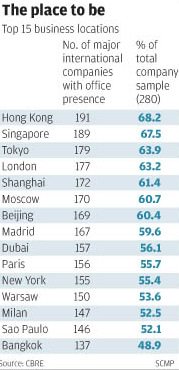 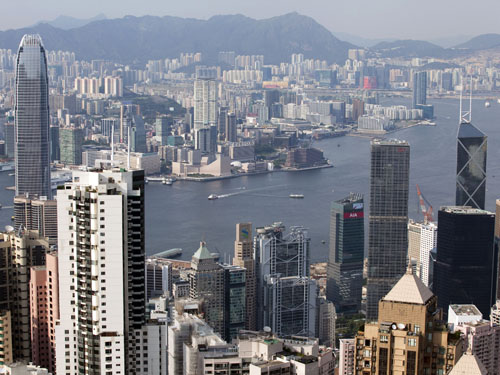
Hong Kong ranks as the most popular location for global businesses, with 68.2 per cent of the world's major international companies having a presence in the city. That finding is contained in the latest "Business Footprints" survey by property consultancy CB Richard Ellis, which also found an increasing trend among global companies to open offices throughout the wider Asian region, reflecting a shift in global economic power.
Asia's dominance in the rankings of the world's leading business hubs was striking, said CBRE, after polling 280 of the world's largest companies in 101 countries and 232 cities in the Asia-Pacific, the Americas, Europe, the Middle East and Africa. The companies were asked about a range of topics, including their favoured locations and expansion strategies.
Hong Kong was closely followed by Singapore (a favoured destination and offshore home to 67.5 per cent of surveyed companies), and then by Tokyo (63.9 per cent). London ranked in fourth place globally, with 63.2 per cent of companies surveyed basing some part of their operations in the British capital; it was the only city in the Western world to be ranked in the top five.
Shanghai (61.4 per cent) ranked fifth as it capitalises on increasing recognition of its status as the financial and business capital of China.
Edward Farrelly, CBRE's director of research for Hong Kong, Macau and Taiwan, said Hong Kong was attractive to international businesses due to its location, lack of foreign ownership restrictions, trilingual mix, and an international and highly skilled workforce. "It is the key gateway city for accessing China and is set to benefit most from the gradual liberalisation of the Chinese financial services markets," he said.
This view that Hong Kong had maintained its attractiveness as an international business hub was echoed by Paul Brough, senior regional partner in the Hong Kong office of KPMG, one of the world's four biggest accountancy, tax advice, and auditing firms
"Hong Kong remains a key location as gateway to China and Southeast Asia," said Brough, who noted that financial services payrolls were the biggest cost and rents were of relatively lower concern.
Salaries of Hong Kong staff are high, but they are productive and hard-working, and the city is therefore still a preferred location for international companies.
Brough said the firm's new global chairman, Michael Andrew, would open his office in Hong Kong when he officially took up the post on October 1. He will be the first of the chairmen of the "Big Four" firms to be stationed in the city and made the decision because of Hong Kong's access to China and Southeast Asia, Brough said.
KPMG will take up five office floors at Hysan (SEHK: 0014) Place after the retail and office tower in Hennessy Road, Causeway Bay, is completed later this year. This office will become the firm's headquarters in the city.
In a separate CBRE research report, office rents rose for the second quarter and demand for prime office space remained strong despite high rents. In the core Central district, rents rose 4.5 per cent and occupier demand drove vacancy rates down to near-record low levels, reaching just 3.8 per cent in Central.
An industry-specific breakdown of office demand in its "Business Footprints" survey indicated that London and New York ranked as the premier locations globally for the banking and finance sector, with 92 per cent of firms having an office in the cities, while Hong Kong was just behind on 88 per cent.
London was also ranked as the most popular location for professional services firms, with Hong Kong again coming a close second.
July 18 2011
Renminbi route - The three 'bridges' - in trade, investment and financial markets - that have to be built before the renminbi becomes an international currency, and the role Hong Kong can play
By Norman Chan

In two years after the launch of the pilot scheme for renminbi cross-border trade settlement, Hong Kong has developed into an offshore renminbi centre of considerable scale. Renminbi deposits in Hong Kong jumped from 60 billion yuan early last year to over 540 billion yuan (HK$650 billion) by the end of May. With this rapidly expanding liquidity, Hong Kong has also become a centre for the issuance of offshore renminbi bonds, or "dim sum" bonds. Sixteen issuers offered bonds worth a total of 36 billion yuan last year, and the figure this year is set to mark a record.
There are two schools of thought on the development of our renminbi offshore business: one believes the renminbi will soon become a major reserve currency, challenging or even replacing the US dollar as an international currency, while the other says the development of our offshore centre should not be too hasty, lest it adversely affect the mainland's macro-economic and monetary management. I think these views call for more elucidation of the current situation.
China's trading partners are all over the world, and enterprises anywhere now have the option to use the renminbi to settle cross-border payments with China. However, the renminbi will be truly internationalised only when it becomes a major settlement currency for international trade and for holdings of foreign reserves by other countries, and when a substantial amount of financial assets denominated in renminbi are held and traded in the international financial markets.
Some people are concerned about the rapid increase in the renminbi deposits in Hong Kong. But, putting things into context, renminbi deposits in Hong Kong amount only to 0.72 per cent of the 77 trillion yuan in renminbi deposits on the mainland. This percentage will remain small even if renminbi deposits here continue to increase.
In the early stage of the currency's internationalisation, it is necessary to have a sufficient amount of renminbi flowing out of the mainland. Otherwise, no offshore market could be formed. Currently, this net outflow of renminbi is achieved mainly through trade, and it is likely to continue for a fairly long time.
With renminbi circulating and being accumulated outside the mainland, there will naturally be demand for offshore renminbi services that banks can provide. Hong Kong's offshore renminbi platform has been able to develop rapidly precisely because of its world-class financial infrastructure, and its long-term role as a gateway for trade and investment between the mainland and the rest of the world.
Hong Kong serves corporations based both in Hong Kong and overseas. Of the renminbi deposits held by corporations, 16 per cent belong to overseas enterprises. I expect more overseas companies will use renminbi for settlement of trade and investment, although not all of them would open accounts in Hong Kong directly; some may choose to open renminbi accounts with the banks in their own countries, which then make use of Hong Kong's renminbi platform.
As renminbi is not freely convertible, the onshore and offshore markets are separate. But the separation should not be absolute. For example, some people have suggested that renminbi funds that have flowed out of the mainland should remain circulating outside the mainland indefinitely. But, this is quite impossible.
At present, renminbi funds that reach offshore markets eventually return to the mainland, even after many rounds of intermediation. This is because there is not yet an economy outside the mainland where renminbi is used so extensively that funds can be accumulated and recycled for use.
Three "bridges" now link the onshore and offshore markets. First, trade items. China's external trade in goods and services can be settled in renminbi and funds can flow rather freely in and out of the mainland for this purpose. This bridge is already very wide and capable of providing smooth passage for China's continuously expanding trade to be settled in renminbi.
Second, direct investment. The People's Bank of China announced new measures in January this year to allow mainland enterprises to remit renminbi out of the mainland for outward direct investments. Foreign enterprises making direct investments on the mainland may also remit renminbi onshore for payments, subject to approval on a case-by-case basis. Hence, this bridge is still under construction. The PBOC has indicated that it is working with authorities on a new set of measures, which can hopefully be introduced within this year. This is an important step to complete the circulation loop of renminbi funds in the offshore market.
Third, financial markets. Linking the capital markets on the mainland with international markets is an important step to gradually remove the restrictions on capital accounts. This must proceed at a measured pace, as there are still many imbalances and uncertainties in the international financial markets. While the offshore markets will develop all kinds of financial products, the mainland is still the primary market where the value of renminbi funds can be preserved or enhanced. Hence, with risks properly controlled, it is necessary to build a link between the onshore and offshore renminbi financial markets in a gradual and orderly manner.
When these bridges become wider and stronger, fund flows between the onshore and offshore renminbi markets would be more or less unrestricted, and that will also be the time the renminbi has essentially become freely convertible and most capital account transactions have been liberalised. At that time, the onshore and offshore markets will be closely linked, and prices in the two markets will broadly converge.
Norman Chan Tak-lam is chief executive of HKMA. This is a translated and abridged version of his commentary on renminbi business development
July 3 2011
Hong Kong: Fifty years no change By Pauline D Loh
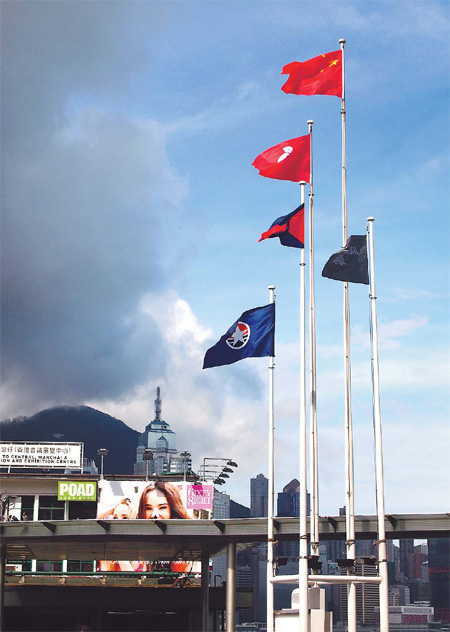
The flags fly high at the Star Ferry end of the Ocean Terminal, each reflecting the elements that make for Hong Kong's success, and witness to its resilience.
Hong Kong is living proof that "one country two systems" has worked. It has also lived up to the promise that it will keep dancing, keep going to the races and keep the stock market alive. Pauline D Loh looks back on the last 14 years. It was an emotional sojourn that started with a tremulous return in 1997 and that evolved into a lead role in the nation building of an economic giant. Hong Kong has come a long way from being a tremulous prodigal returning to the arms of an estranged motherland.
It was not always this easy.
Sam Hui, king of Cantopop in the '80s and '90s, was singing out the melancholy and trepidation buried in Hong Kong hearts at that time.
About to be deserted by her British guardians, the ex-colony was to be returned to China, an unknown presence that seemed to be glowering down at the flamboyant delinquent on its doorstep.
The people of Hong Kong, used to the laissez-faire ways of their colonial masters, were unsure of the future, uncertain of what was to become of them and greatly concerned that Beijing might take away the freedoms they had so taken for granted.
In 1984, the countdown began when China and the United Kingdom signed the Joint Declaration in the Chinese capital, starting the process of a handover of power that would be fully complete by 1997.
Under the Joint Declaration was an assurance by Beijing that it would adopt a "One Country, Two Systems" principle, and that Hong Kong would continue its previous capitalist system and way of life for a period of 50 years after 1997.
In the words of the Chinese leaders, this meant that Hong Kong could "keep dancing, keep going to the races and keep playing the stock exchange" -
舞照跳, 马照跑, 股照炒. But in those immediate years before 1997, the uncertainty in Hong Kong was almost tangible. Those who could were looking for another country to escape to.
Those who could not for various reasons could only hunker down, grit their teeth and expect the worst. It was no coincidence that Sam Hui's songs rocketed off the charts at this time.
In one plaintive melody, he sang of how Hong Kong emigrants felt like misfits in a foreign country with strange landscapes full of tall grasses instead of skyscrapers, where they had to adapt to a new language, new lifestyle, and most of all new food.
In another, he sang of the homesickness of the Hong Kong traveler, where the sight of Mount Fuji brought memories of The Peak, and Hawaii's harbor made him long for the fishing lights along Victoria Harbor.
It was both poetic and poignant.
As is so often the case, the gloomy anticipation was about the only punishment meted out to Hong Kong, although it did struggle to find an acceptable administration.
But as it slowly adapted to life under the red flag, it did receive a wake-up call that made the people look deep into their consciousness and decide who they wanted to be.
For the first time, they had a national identify, rather than just a reputation for being the goose that laid so many golden eggs for a faraway master.
About a quarter of the time has passed since China declared the deadline of "No change for 50 years".
What has taken Hong Kong, and indeed the world, by surprise is this: Although the SAR has noticeably evolved in the interim, it is mainland China that has undergone the sea change as it enthusiastically embraced economic reforms that have propelled it to the top of the world economics class, so to speak.
Much of the success story in this unique political integration stems from two main factors. One is the innate resilience and pragmatism of the Hong Kong people and their determined ability to adapt, and the second, equally important, is the tolerance and space Beijing has given this special administrative region so far. In the words of one of the SAR's leading architects: Where else in China can you find demonstrations being held every weekend right under the noses of the SAR administration?
July 1 2011
Hong Kong Rank World's Most Competitive Economy
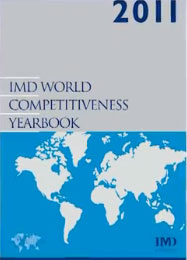
Hong Kong, together with the U.S., has been ranked the world’s most competitive economy by the Swiss-based International Institute for Management Development (IMD) in its World Competitiveness Yearbook 2011 newly issued on May 18, 2011. It is the first time Hong Kong has been accorded the top accolade.
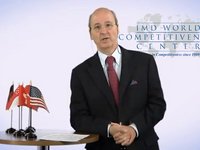 Video: The World Competitiveness Rankings 2011 - Hong Kong Rank#1 with United States Video: The World Competitiveness Rankings 2011 - Hong Kong Rank#1 with United States
Welcoming the results, Hong Kong Commissioner for Economic & Trade Affairs, USA, Mr. Donald Tong, said: “We are glad to note IMD’s acknowledgement of our strengths in having struck a sound balance between government efficiency and business efficiency.”
“Our Government will continue to implement measures necessary to preserve and enhance our competitiveness on various fronts,” Mr. Tong added.
According to IMD, the key factors underpinning Hong Kong’s success are openness to trade, investment and business legislation; sound fiscal policy; mature institutional framework; well-functioning financial market; and global city image.
Of the four main pillars being scored, Hong Kong’s scores for “government efficiency” and “economic performance” remain 1st and 4th respectively, while the scores rise from 2nd to 1st in “business efficiency” and from 23rd to 21st in “infrastructure”.
Analyzed by sub-factor, Hong Kong’s ranking has improved significantly in “domestic economy” (from 25th to 18th) under the “economic performance” pillar; “institutional framework” (from 13th to 2nd) under the “government efficiency” pillar; “productivity and efficiency” (from 11th to 6th) and “management practices” (from 14th to 9th) under the “business efficiency” pillar. Sub-factors with improvement are also seen in “employment” (from 22nd to 21st) under the “economic performance” pillar; “business legislation” (from 2nd to 1st) under the “government efficiency” pillar; “attitudes and values” (from 3rd to 1st) under the “business efficiency” pillar; and “basic infrastructure” (from 27th to 25th) and “health and environment” (from 24th to 23rd) under the “infrastructure” pillar.
Background information
The IMD is a business school in Lausanne, Switzerland. It has been publishing the World Competitiveness Yearbook annually since 1989. It ranked the ability of economies across the world to create and maintain an environment that sustains the competitiveness of enterprises therein. A total of 59 economies have been selected by IMD for its current round of world competitiveness study.
June 29 2011
Jockeying for Growth - three out of four Hong Kong CFOs surveyed expect growth to accelerate in the coming months

Lisa Vehrenkamp, Senior Vice President and General Manager, Global Commercial Card, American Express, Japan, Asia Pacific & Australia
Data from the newly released American Express/CFO Research Global Business & Spending Monitor show that optimism globally is at its highest level in four years. In Hong Kong, sentiment is stronger: three out of four Hong Kong CFOs surveyed expect growth to accelerate in the coming months.
The survey found that more than three-quarters of Hong Kong respondents anticipate top-line growth over the next 12 months, including 24 per cent who expect substantial revenue growth. It revealed that, following a period of prudence, many companies are sitting on large cash surpluses and are preparing to spend it.
“Finance executives are finally moving away from budget cuts and opening up the company coffers to drive growth,” said Lisa Vehrenkamp, Senior Vice President and General Manager, Global Commercial Card, American Express, Japan, Asia Pacific and Australia. “We will see a thriving deal-making environment and greater spending to win and retain customers as businesses jockey for position in a recovering economy.”
Hong Kong Stands Out
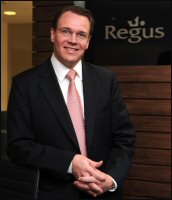
Hans Leijten, Regional Vice President-Greater China, Regus
The latest Regus Business Confidence Index is similarly upbeat, reporting that a positive outlook from Hong Kong business is now being matched “by real results.” In Hong Kong, where more than three-fifths of companies reported healthy profit (67 per cent) as well as a rise in revenues (72 per cent), the confidence index is higher than the global average.
“Business confidence has grown since 2010, but is now accompanied in Hong Kong by reports that revenues and profits are increasing in line with expectations expressed in last year's index,” said Hans Leijten, Regus’ Regional Vice President for East Asia. Based on the opinion of more than 17,000 companies across 80 countries, the Regus report also revealed that departmental spending is on the rise.
According to the fourth annual American Express monitor, 79 per cent of Hong Kong respondents expect modest to strong economic expansion over the next 12 months – above the global average of 75 per cent. The pace of that expected growth is also significantly higher: in Hong Kong, 73 per cent see economic growth accelerating in the second or third quarter of 2011, against a global median of 54 per cent.
Ms Vehrenkamp said it’s not surprising that CFOs in Hong Kong are more optimistic about the time and pace of economic growth than their global counterparts. “As Hong Kong’s economy continues to improve, we believe that CFOs here plan to increase spending to capitalise on the improving economy.”
Time to Spend
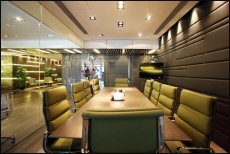
A Regus meeting room at the International Commerce Centre, Hong Kong
With favorable conditions and companies cashed-up, all indicators points to a renewed willingness to loosen the fiscal purse strings, according to Ms Vehrenkamp.
“Most surveyed finance executives say their companies have been experiencing strong cash flow over the past year, and a majority – 71 per cent for Hong Kong and 62 per cent overall – report that they have been pursuing a deliberate cash preservation strategy. With many companies now sitting on large cash stockpiles, finance executives have plans to put this capital to work.”
Deal-making tops the list of how companies will spend their surplus. Eighty-four per cent of Hong Kong finance executives, compared to 69 per cent of all respondents, expect to focus aggressively on acquisitions. Capital spending, which typically includes outlays for such items as real estate and machinery, is also a top priority. In Hong Kong, 86 per cent of respondents have aggressive investment plans for that category over the next 12 months.
The recession is also prompting investment caution among companies. Hong Kong executives were above the global average in their intent to conduct rigorous due diligence of mergers and acquisitions (M&A) opportunities (81 per cent, against the global average of 76 per cent). Most will also require a more detailed business case to increase spending on headcount and operating activities, as well as analysing capital investments more fully.
“Lessons learned in the downturn are shaping today’s corporate spending strategies for the better,” said Ms Vehrenkamp. “Finance executives are maintaining discipline and carefully weighing each investment. In areas ranging from M&A to headcount to service, companies are looking closely at the justification for spending, laying the foundation for more sustainable expansion.”
On the Road Again
As economic prospects improve, however, nearly half (46 per cent) of Hong Kong finance executives will invest in business development activities to capitalise on the healthier business environment. In Hong Kong, hiring is also expected to increase in sales (53 per cent), human resources and other administration (42 per cent), marketing (41 per cent), information technology (37 per cent) and customer service (32 per cent).
This optimism has also reignited the business travel plans of many finance executives, about half of whom will invest more in travel this year to help drive revenue growth. “Meetings, whether with existing or potential customers, vendors or suppliers, remain vital to business negotiation and development,” Ms Vehrenkamp said. “According to the American Express survey, 37 per cent of Hong Kong financial executives plan to increase budget for meetings with new or potential clients, whereas 34 per cent are willing to spend for meeting with suppliers and vendors. This again reflects that they are loosening their purse strings for revenue-generating activities.”
Expansion Starts Here
The “real results” noted by workplace solutions company Regus in its Business Confidence Index are evident in the company’s own operations in Hong Kong, where it runs 11 business centres. Hans Leijten, Regional Vice President-Greater China, reported a 25 per cent increase in inquiries, year-on-year.
“This increase has come from both overseas and local clients, and across a wide variety of sectors. Companies of every size use our centres, and many of them are start-ups looking to build their business here in Hong Kong or international businesses moving into Asia. For example, in our new Causeway Bay Times Square location, which just opened in May, we have many such customers, from a high-end international jewellery firm establishing its first Asian retail business to a start-up that distributes healthcare products in Europe and the US." Regus is experiencing a “huge demand,” he said. “Not just for serviced offices, but also for virtual offices that allow companies to quickly set themselves up in a prestigious location.”
He said Hong Kong remains one of the most attractive destinations for businesses moving into Asia, and is “a hot spot for expats drawn by a combination of its dynamic economy and bustling cosmopolitan ambiance.
“For any international business person looking to set up a new enterprise or expand into Asia, Hong Kong is an obvious choice,” Mr Leijten said. “It is easy and simple to establish a company here, thanks to government support for business registration and the wealth of business services and workplace options.”
June 25 2011
HK granted US$300m qualified investor quota
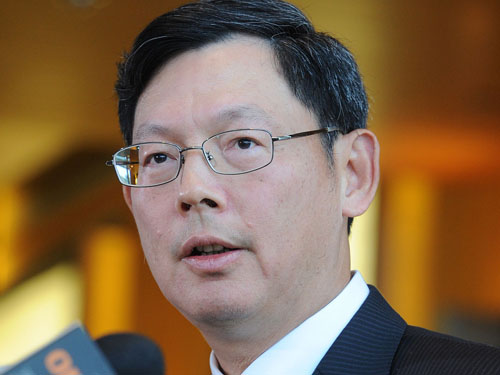
The Hong Kong Monetary Authority said it received a US$300 million quota to invest in stocks and bonds on the mainland, giving the city's de facto central bank the opportunity to diversify its US$273 billion in reserves. The HKMA is working on details of how it will invest in the mainland's financial markets, chief executive Norman Chan Tak-lam (pictured) said yesterday.
The China Securities Regulatory Commission granted the HKMA a license to join the Qualified Foreign Institutional Investor programme last year.
Asia's central banks want to diversify their growing foreign-exchange reserves into yuan-denominated debt issued by China's government, Philippine central bank governor Amando Tetangco said in April.
The Hong Kong government won't rule out including the yuan in its reserves in the future, Secretary for Financial Services and the Treasury Chan Ka-keung said this week.
"It's sensible for the HKMA to diversify its reserves into currencies other than the US dollar," Daiwa Capital Markets economist Kevin Lai said. "The quota is not that huge, but enough for the current testing phase. The HKMA will probably invest in products with less risk, like bonds."
Chan also said he expected Beijing to announce new rules on yuan-denominated foreign direct investment by the end of this year.
This would help develop the offshore yuan market in Hong Kong, he said.
Bank Negara Malaysia, Government of Singapore Investment Corp and Abu Dhabi Investment Authority are among sovereign wealth managers that have QFII permits.
June 23 2011
Exports: Recovery with Headwinds
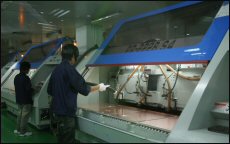
Asia remains a major electronics production centre, with a detailed division of production processes and transportation of parts and components among manufacturing bases
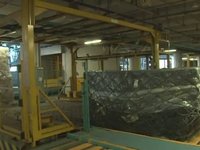 Video
Presentation - Hong Kong's external trade will rise 12 per cent in 2011, predicts HKTDC Chief Economist Edward Leung. That's down from a 25 per cent leap for this year's first quarter. Leung says the electronics sector should perform well with sales of smart devices. US and EU markets should perform better, as should the Chinese mainland high-growth consumer sector. Video
Presentation - Hong Kong's external trade will rise 12 per cent in 2011, predicts HKTDC Chief Economist Edward Leung. That's down from a 25 per cent leap for this year's first quarter. Leung says the electronics sector should perform well with sales of smart devices. US and EU markets should perform better, as should the Chinese mainland high-growth consumer sector.
It was, by many measures, an extraordinary leap in difficult conditions. Hong Kong exports soared 25 per cent in the first quarter of 2011, even though production costs were surging, with export unit prices up 7.6 per cent. There was also gathering inflation, while factors such as the Japanese disasters and escalating civil unrest in the Middle East were poised to make an impact in the second quarter and beyond.
The good news for exporters is that signs suggest the global economy will continue to be in good shape, notably for commodity exporters and Asian countries with large domestic markets, such as the Chinese mainland, India and Indonesia.
Given the better-than-expected performance so far this year, Hong Kong’s total exports are now forecast to grow by 12 per cent in 2011, against the eight per cent rise earlier predicted.
There is, however, little room for complacency. The Japanese earthquake and associated disasters could affect one per cent of Hong Kong’s total exports for 2011, while sales hit by the crisis in the Middle East and African region (MENA) could amount to 0.6 per cent of total exports.
In addition, soaring production costs, triggered by spiralling raw material costs and gyrating wages on the mainland, could well remain a major challenge for Hong Kong exporters.
Hong Kong’s merchandise performance was again above expectations for the first three months of 2011. Total exports were driven by solid increases of 25 per cent for re-exports and 12 per cent for domestic exports.
This exceptional performance was achieved despite a high base for comparison, and rebounded strongly from a modest 14 per cent growth in the final quarter of 2010, following increases of more than 20 per cent in the previous three quarters.
The showing was supported by burgeoning intra-Asian trade. Sales to the mainland, which constituted 54 per cent of Hong Kong exports, climbed 28 per cent, with hearty demand for machinery and semi-manufacturing, notably electronics parts and components for export processing production.
There was also sustained export growth in the region, reflected by greater demand for capital goods and production inputs. Sales to traditional markets were more moderate, although double-digit increases were still recorded. The European Union, spearheaded by Germany, registered a commendable 14 per cent rise. The United States, for its part, demonstrated a 13 per cent increase. Exports to Japan, where growth should have been hit by the fallout from the earthquake, still rose by 11 per cent in the first quarter.
Growth Engine
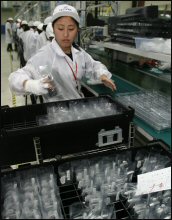
Soaring mainland wages have substantially boosted production costs
Electronics, which jumped 29 per cent in the first quarter of 2011, to account for 57 per cent of Hong Kong’s total exports, remained the primary engine of growth. The global demand for electronics was stronger than earlier forecast.
The strength of the world electronics market was clearly evident, with first-quarter earnings from giant multinationals such as Apple (with its sizzling iPhone demand) and Intel (due to a voracious appetite for personal computers) beating out analysts’ expectations.
Asia remains a major electronics production hub, with a detailed division of production processes and transportation of parts and components among manufacturing bases; these were factors that boosted intra-regional trade, injecting much-needed vitality into Hong Kong exports.
Electronics aside, timepieces and jewellery grew 25 per cent and 18 per cent respectively, while clothing, up eight per cent, and toys, inching up two per cent, were laggards among major product categories. What’s more, escalating unit values of Hong Kong exports have significantly contributed to the faster-than-expected sales expansion. In spite of sustained overseas demand, consumer adherence to value for money continued to drag prices.
Nevertheless, towering input costs have bloated export prices. Hong Kong exporters have not been able to pass on all cost increases to overseas buyers. For example, crude oil and gold prices, on the back of unabated global demand and loose monetary conditions with a relatively weak US dollar, displayed respective increases of some 10 per cent since the beginning of the year – despite sharply lower commodity prices recently.
In most cases, lofty price increases have translated into much higher input costs and, hence, more expensive finished products, with supply disruptions of certain electronics parts and components from Japan only adding to the woes.
Significantly, soaring labour costs on the mainland have substantially raised production costs. To attract migrant workers, Hong Kong manufacturers must increase wages and other benefits, further raising production costs.
According to a survey by the Hong Kong Trade Development Council, 98 per cent of respondents saw higher labour costs on the mainland in the second quarter of 2011, vis-à-vis 78 per cent in the first quarter of 2011 and 74 per cent in the final quarter of 2010.
A strong renminbi, which has appreciated by more than four per cent against the US dollar since last June, has compounded the problem. To a certain extent, these increased costs have been translated into a higher unit value of Hong Kong exports – up 7.6 per cent in the first three months of 2011, against a 4.7 per cent rise last year.
Global Outlook
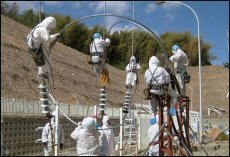
The Japan disaster earlier this year and the political unrest in the Middle East have cast a pall over the global outlook in the medium term
A sustained recovery of overseas markets is certainly good news for Hong Kong exporters. In traditional markets, the US is set to lead the pack. In the EU, some core members, especially Germany, will see decent growth despite the lingering sovereign debt crisis.
Resurgence in many emerging economies should also stay strong. Holding particular promise are commodity exporters, as well as Asian countries with a huge domestic market, notably the mainland.
Yet the disaster in Japan and the political unrest in MENA have cast a pall over the medium-term outlook. World economic growth, according to the International Monetary Fund, is expected to stand at 4.4 per cent in 2011 and 4.5 per cent in 2012, after growing by five per cent last year.
In the US, massive monetary and fiscal support, including the bond-purchase programmes and extension of tax cuts and social benefits, is leading to financial stability and rallies in stock prices, which contribute in turn to improved consumer and business sentiment.
Against this backdrop, there are signs that both consumption and corporate earnings are advancing, while joblessness has begun to edge down, although the unemployment rate is still high by historical standards.
The housing market, on the other hand, remains sluggish, and high gasoline prices are eroding spending power. This means that consumers will likely remain conservative, especially when the extended fiscal and monetary expansion fades.
These likely developments presage a better sales outlook for products that offer value for money. Clouded by the hovering sovereign debt crisis, the EU is expected to stay on a slower lane, with a two-speed recovery prevailing. On the one hand, there will likely be sturdy growth for some core members.
A case in point is Germany, where strength in manufacturing and exports is filtering through to the domestic sector. On the other hand, the Eurozone’s peripheral economies, hampered by austerity moves to contain current and fiscal imbalances, are expected to remain fragile for the foreseeable future.
Japanese Fallout
Developments in Japan are even worse, due mainly to the March earthquake, the country’s most powerful on record. But even before the quake, the Japanese economy was set to slow noticeably because of entrenched deflationary pressure, alongside weakening exports amid a strong yen. The cost of the powerful quake, tsunami and nuclear fallout could top US$300 billion, slashing the country’s GDP in 2011 by between two and three percentage points.
Still, developing Asia should continue to lead the world recovery, although inflationary pressure stands out as the major concern. Significantly, the mainland is expected to see growth remain healthy this year and next despite monetary tightening to prevent overheating. Its 12th Five-Year Programme (FYP), approved by the National People’s Congress in March, will offer new dimensions for Hong Kong companies. The programme foresees that economic growth in the years ahead will be driven more by domestic demand, particularly private consumption, than by exports and inward investment.
Hong Kong, as a brand showcase and trendsetter, is expected to benefit from a growing and increasingly sophisticated mainland consumer market.
While the mainland will invest much more in R&D in the next five years and move to upgrade technology to meet FYP targets, it will need to acquire the necessary technology. Hong Kong’s role as a technology marketplace should flourish as a consequence.
Hong Kong must also look to other regional markets for sales expansion. Various Asian governments, fearing surging inflation, are tightening their monetary grip to ensure macroeconomic stability and medium-term growth. Yet the economic environment should remain generally favourable, helped by sustained domestic demand and continued export expansion. Intra-regional trade in general, and demand from the mainland in particular, will remain a key stimulus to other Asian economies.
Consumer spending, in the meantime, should remain robust amid the region’s strong economic fundamentals. In tandem with developing Asia, other fledgling economies are likely to record varying degrees of recovery. Broadly speaking, market opportunities will be buoyed by an expansion of their consumer markets, although rising inflation is weighing on consumption.
In Latin America, commodity exporters such as Brazil and Chile should benefit from higher commodity prices. The outlook for Mexico, which is closely tied to the US economy, is expected to be upbeat.
In contrast, Central and Eastern Europe should remain a weaker area in the global growth picture because of its close integration with the EU. Outside the EU, Turkey, with a better macroeconomic environment, may have better prospects, while Russia is expected to gain from firming oil and commodity prices.
For MENA, high crude prices should strengthen the economic health of oil exporters. Yet this positive development is overshadowed by a wave of political unrest that has spread through the region since the beginning of the year. The unrest has negative consequences for the regional economies. It also has an indirect impact on the global recovery because of higher oil prices, given that MENA accounts for about one-third of the world supply.
Hong Kong Outlook
While Hong Kong exports should continue to expand vigorously for the rest of 2011, the pace of growth is expected to moderate somewhat from the surge of the first quarter.
Looking ahead, the growth of Hong Kong exports should remain decent through 2012, although there are plenty of risks and challenges ahead.
Electronics Jump-starts Trade
Hong Kong exports of electronics products grew by a better-than-expected 29 per cent during the first quarter, following 28 per cent growth in 2010. This was thanks to the solid demand from the Chinese mainland, which absorbed more than 60 per cent of Hong Kong’s total electronics exports, notably for inputs for export processing production.
Other Asian economies saw Hong Kong exports, mainly parts and components, expand on the back of a regional revival in export production.
What the Consumer Wants
Sales to other major markets, including the US and the EU, have also performed well, given the sustained resurgence of consumer demand for electronics.
The world electronics market has been fuelled by trendy products such as iPhones and iPads, which have stimulated demand for tablets and smartphones, as well as complementary products and accessories.
Electronics exports have been assisted by a steady demand for the replacement and upgrading of computers and telecom equipment, given the stronger consumer and business sentiment.
Sales of audiovisual (AV) equipment have been assisted by the popularity of large-screen TVs and digital devices, although competition in the market has become fierce.
The sustained demand for consumer electronics continues to boost the derived demand for parts and components, prolonging the upturn of the global electronics cycle.
For the rest of 2011 and probably 2012, electronics exports will perform well, in view of the continued demand for trendy digital products. Exports of parts and components, especially re-exports of semiconductors, will be boosted by further expansion of the mainland’s processing production.
Exports of AV products and parts, however, will be less robust, as fierce competition cuts prices. The market for AV equipment will be less energetic than for IT and telecom products. Products with more advanced and green features will likely be better received. If anything, the shortage of components and materials following the Japan earthquake will slow Hong Kong exports. For now, some players have been able to secure certain supplies from alternative sources, notwithstanding longer delivery lead times and higher purchasing costs.
As to household electrical appliances, Hong Kong exports managed to expand by 20 per cent last year and 22 per cent in the first quarter of 2011.
But exports in the year ahead are expected to slow. Sales of household electrical appliances will be constrained by intensified price competition and weaker consumer sentiment in Japan. To complicate matters, the popularity of trendy IT and telecom products may further erode the discretionary demand for electrical appliances.
June 22 2011
A Little Less than Luxury
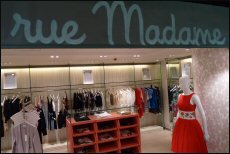
Rue Madame, a boutique stocking Parisian fashion targeting the mid-market consumer, opened in two prime locations in Hong Kong
Hong Kong is a bastion for big-name shopping, attracting the well-heeled set from around the world. Visitor numbers jumped to 36 million in 2010, up nearly 22 per cent over the previous year, according to the Hong Kong Tourism Board. The visitors, the majority of them shoppers from the Chinese mainland, spent about HK$210 billion. Visitor numbers are forecast to reach nearly 40 million this year.
Mainland tourists have been key in sustaining Hong Kong retail sales. Each weekend, they line up outside shops like the Louis Vuitton flagship on Canton Road, a designer shopping Mecca, waiting to be allowed into the store. Just doors away, more stand patiently behind velvet ropes at Dior and Channel, Tiffany and Gucci.
Recent trends, however, suggest a growing opportunity for fashion brands targeting mid-market consumers. In recent years, mid-priced brands such as Sweden’s H&M and Spain's Zara and Mango, have joined high-end names in Hong Kong's mega-malls. In April, it was reported that United States retailer Abercrombie and Fitch won a bidding war for a colonial-style space in Central's Pedder Building, a prime retail spot minutes away from British mid-priced chain M&S. Abercrombie and Fitch will replace one of Hong Kong's most successful fashion houses, Shanghai Tang, owned by Swiss luxury group Richemont. The 12,500-square-foot space will launch the casual-wear brand, with the company reportedly paying an area record HK$7 million a month in rent.
The ABC Look

Valerie Wilson Trower, Stylesight’s Trend Director for Asia
The company parlays a clean-cut collegiate look, comprising T-shirts, hooded-sweatshirts and cotton shorts, a style that's already been adopted by Hong Kong's younger generation. “We've had a very strong 'ABC' or American-born-Chinese look over the last four years,” says Valerie Wilson Trower, Trend Director for Asia at trend analysis and forecaster Stylesight. “It's a very LA look. If I can describe it, it would be hoop earrings, long layers, denim shorts and cowboy boots, worn even though it's July,” says Ms Wilson Trower. Interestingly, she says, girls that have been raised and educated in Hong Kong rather than the US, also wear the look. “Their boyfriends find it attractive,” she says.
The move isn't a total shoe-in for Abercrombie and Fitch, says Ms Wilson Trower. “In Hong Kong, it's girls who wear the look, while in the US they sell more to guys. We'll see if the guys pick up on A&F, too.”
Hong Kong shoppers are well-travelled, sophisticated and informed, says Ariane Zagury, who opened Rue Madame, a boutique stocking Parisian fashions, located in two prestigious locations: IFC Mall in Central and Lee Gardens in Causeway Bay. Rue Madame targets the mid-market consumer. “Most of them are well-informed; they read fashion magazines and fashion blogs. I would say that customers in Hong Kong are very sophisticated and have a very good eye for fashion,” she says. Accordingly, they are becoming less reliant on wearing splashy labels.
Statement Pieces
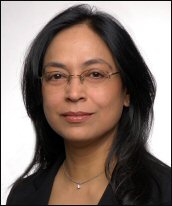
Radha Chadha, Brand Director, Chadha Strategy Consulting
While the nouveau riche, with a penchant for status-flashing luxury goods, is a dominant demographic on the mainland, there is increasing room for a varied retail mix, says Brand Director Radha Chadha of Chadha Strategy Consulting, and author of The Cult of the Luxury Brand. Mid-level executives, or junior salarymen, those on more modest budgets, buy big-ticket statement pieces like bags and accessories, but mix those items with mid-market and high-street brands.
“I call it scrimp and splurge,” says Ms Chadha. “The bag makes a statement, some shoes make a statement, the watch makes a statement and jewellery, if it's branded, makes a statement,” says Ms Chadha. “This is how they splurge. Secretaries will definitely have a nice bag, but the rest will be modestly priced brands,” she says.
Some second-generation high-net-worth individuals are moving away from the most well-known brands after having grown up around them. If their parents bought into brands as they first appeared on the mainland 20 years ago, the offspring are increasingly looking for new or exclusive brands, says Ms Chadha. Historically, luxury brands were used as a way to show wealth or status. But the younger generation no longer feels the need to use clothing and accessories to prove their worth and, while still wanting to spend, look for less obviously branded goods. Their parents may also be looking to move on from such introductory brands, searching for new, unique labels, often those they first encounter on trips overseas.
Both groups offer opportunity out of the sphere of the big luxury houses. “It's not a big sub-set, but it is a growing subset,” she says, adding that, as it grows, “you have an absolute need for brands that are smaller.”
Retail Springboard
Hong Kong can serve as an ideal entry into the mainland market. Mainland consumers favour brands that portray an international image, and Hong Kong's glamorous shopping malls can work like a gallery space for labels seeking exposure. In December 2010 to February 2011, more than 13,000 mainland tourists visited the K11 mall in Tsim Sha Tsui, an upscale mall that opened in 2009. The mall has run more than 300 tailored shopping tours for mainland tourists to encourage patronage.
Last year, Warrantex Group, a Hong Kong-based retailing and distribution company, opened Bruuns Bazaar in another new mall, Isquare, also in Tsim Sha Tsui. Bruuns is a Danish company that produces simply designed clothing in neutral palettes, well-suited to Asian skin-tones, says Warrantex founder Yardley Wong. A store presence in Hong Kong is useful for creating brand recognition among mainland consumers, and can be used as a springboard, she says.
“China is our main focus. We want the store here to showcase products and concepts and also show people that we are an international brand,” she says. The company has already moved the concept into outlets in Beijing and Shanghai.
Smaller businesses need to be creative and generate excitement, says Ms Wong. As more mainland residents travel abroad and witness creative retail spaces in Europe's shopping capitals, they will want similar experiences replicated at home. “In China, they easily accept new concepts, and they like new things,” says Ms Wong.
Retailers who can accommodate Asian size and fit in their designs, whose use of fabric and styles responds to the seasons and whose design suits Asian
coloring, will hold extra market appeal, experts say.
Just as Hong Kong and mainland-based retailers and distributors look for brands, many European and US labels are looking to break into this lucrative region. Laura Li, who opened Gizzy and Nacho, a Hong Kong-based online fashion boutique that stocks Spanish, Australian, Hong Kong and US labels, began trading to appeal to a growing Hong Kong demographic hunting alternatives to mainstream offerings. Ms Li says she scours blogs, magazines and showrooms looking for unique items and gets enthusiastic responses from those she targets. “Brands I approach all get very excited when I tell them I am buying for Hong Kong, Asia or China – this is the region everyone wants to be in now.”
June 15 2011
Fast-Track Growth for Hong Kong
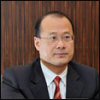
Buoyant Asian economies, and the Central Government’s focus on boosting domestic consumption represent key opportunities for Hong Kong companies, according to Dr Jonathon Choi, Chairman of the Chinese General Chamber of Commerce. In Six Questions, Dr Choi also spells out the promise of the Central Government’s new Five-Year
Program.
How has Hong Kong’s business environment fared so far this year?
Hong Kong’s economy increased by 7.2 per cent in the first quarter, the fifth consecutive quarter of higher-than-average growth in the last 10 years. Every sector posted significant recovery, thanks to an improving consumer market and rising visitor numbers, boosting our domestic economy. This reflects the remarkable growth of our services sector.
The strong economic growth on the Chinese mainland is boosting production and export activities in the region. Hong Kong’s total exports jumped 16.8 per cent in the first quarter, with exporting companies receiving more orders.
The surging mainland economy is stimulating strong growth in cross-border finance. Mainland demand for our financial, business and professional services continued to expand, leading to a 9.1 per cent rise in our services output in the first quarter.
What are some of the external factors that could affect Hong Kong’s business for the rest of the year?
Under the quantitative monetary easing policy in Europe and the United States, the global economy is expected to continue facing inflationary pressures and asset price rises. Mainland consumer prices rose 5.4 percent, year-on-year, in March, while Hong Kong's composite consumer price index shot up 4.6 per cent. Energy, commodity and asset prices are facing upward pressure, because of strong economic performance. I believe inflation will remain high. For Hong Kong businesses, inflation will push up employee wages and, together with such factors as the rising renminbi, raw material and energy prices, will pose challenges ahead.
In spite of Asia’s satisfactory economic performance and recovery in Europe and the United States, the Eurozone’s sovereign debt problems, the gradual tightening of macroeconomic policies in Asia, and the political instability in the Middle East and North Africa, all bring uncertainties to business.
Moreover, the impact of Japan’s earthquake and nuclear incident will gradually affect the supply chain, which may affect Hong Kong’s foreign trade, thus slowing down export growth in the coming quarters.
Fortunately, the national economy is rapidly growing, supported by the mainland’s 12th Five-Year
Program, which is devoted to modern services industry development and expanding domestic demand, providing Hong Kong companies huge business opportunities to explore the mainland market.
What’s in it for Hong Kong in the Central Government’s 12th Five-Year
Program?
The new Five-Year Program mainly focuses on the shift to a domestic-driven economy, as well as the structural transition to modern services. Hong Kong has many advantages in these areas and should seize opportunities through a number of policies on domestic consumption and urbanisation. The mainland agriculture and industrial sectors have been doing very well, so the focus now has started to tilt to the services sector. For Hong Kong companies, it’s time to think carefully of how to take advantage and discover new opportunities.
The appreciation of the renminbi has brought many benefits to Hong Kong. If the trend continues, I think there will be more and more mainland tourists coming to Hong Kong, boosting consumption and investment. Sectors such as tourism, retail, food, properties and the stock market will all benefit. But it is also important to be cautious about their side effects – rising interest rates. A strong renminbi might be helpful for consumption, but it also leads to higher cost on the mainland, which ultimately results in higher inflation in Hong Kong. So it’s a balancing act.
What are the specific opportunities for Hong Kong companies from the Five-Year
Program?
The 11th Five-Year Programme emphasised “one country, two systems.” But China and Hong Kong cannot be seen separately in the new plan. I think it sends the message that the integration between Hong Kong and the mainland is a win-win game, which is why I feel Hong Kong people and companies favour the scheme. Hong Kong is trying to completely integrate itself into the Five-Year Programme and is thinking about how to make it happen.
The new plan has identified Hong Kong as the offshore and renminbi settlement
center, with Shanghai as an onshore centre, a position that benefits Hong Kong. Hong Kong, meanwhile, will collaborate with Guangdong on Pearl River Delta port projects in Qianhai, Hengqin and Nansha. Hong Kong needs to take advantage of the incentive policies introduced in these areas. Cooperation with the Pearl Delta region spans infrastructural, governmental and industrial projects. In addition, Guangdong-Hong Kong collaboration remains the top priority within a broader picture that includes reaching out to the Yangtze River Delta region. Hong Kong will enjoy advantages from having rich experience in modern services, including finance, carrier, logistics and information services. Hong Kong also has many professional lawyers, auditing professionals, doctors, architects and surveyors, who all speak for our competitiveness.
What are the challenges facing Hong Kong companies?
The challenges come with the changing world. Both national and private mainland enterprises have broadened their vision, looking not only at the domestic market and its 1.3 billion people, but also trying to conquer the global market. They spare no effort to break into the overseas market by having more competitive professionals with global views. And the strategy for them is to be based in Beijing to manage business on the mainland and, in Hong Kong, to look for international opportunities.
What suggestions have you made to the Hong Kong Government to cement Hong Kong’s value?
We are very concerned about the 12th Five-Year Program. Hong Kong needs to figure out its position in the Central Government’s plan. Many countries such as Japan have similar blueprints to guide the direction of the country’s economic growth. Considering Hong Kong’s position as an international city, we should further develop relationships with ASEAN member countries. The question for us now is how to partner with ASEAN countries. China and ASEAN countries have created the “10+1” model, and Hong Kong should not be excluded. What role can Hong Kong play without being excluded? We need to do more research.
Hong Kong companies have a strong presence in ASEAN countries and have a deep knowledge of the region. The high-speed-train project linking China’s Yunnan Province with Myanmar and Pakistan to Phnom Penh in Cambodia will strengthen relations with ASEAN economies. If it does not take these into consideration, Hong Kong will likely be
marginalized. It is extremely crucial for Hong Kong to have a vision of how to take advantage of opportunities presented by these inter-country transport link projects.
June 14 2011
Getting with the Program - Guangdong-Hong Kong cooperation
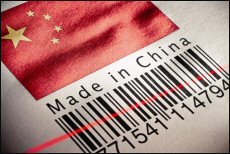
Guangdong-Hong Kong cooperation during the latest Five-Year-Program should be a process of market integration, a move from manufacturing to marketing in the PRD
The period of the 12th Five-Year Program (FYP) will be crucial in the transformation of the Chinese economy and society in general. The plan promises to usher in a people-centred, consumer-oriented era for the country as a whole.
The transition from “made in China” to “made for China” will be at the heart of the new
program. This involves building “a domestic market ranked as one of the largest in the world” – a goal formally endorsed at the Fifth Plenary Session of the 17th CPC Central Committee.
Long-term development demands the emergence of a large middle-income group. Only then will China offer the basis for sustainable development. This is a key reason why expanding domestic demand has become the primary task of the 12th FYP.
Path Ahead
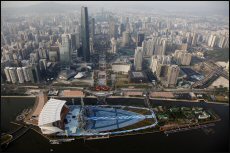
In pursuing PRD integration, the market system will eventually have to be compatible with the Hong Kong system
Despite its huge potential, China’s domestic market faces institutional development hurdles. The China market is highly controlled and
characterized by high transaction costs.
“Made in China” owed its rise over the past three decades to the international market rather than the local one. The “front shop, back factory” model, which gave Guangdong-Hong Kong cooperation its great economic benefits and competitive edge, was actually a combination of advantages enjoyed by the Pearl River Delta (PRD), with its low production costs and a multinational-dominated international market and supply chain.
Even now, Guangdong-Hong Kong cooperation has yet to shake off this basic pattern and penetrate the PRD local market. This is true for PRD-based manufacturing started by Hong Kong manufacturers, as it also is for PRD services based on the Closer Economic Partnership Arrangement (CEPA).
Thanks to PRD manufacturing upgrades in recent years, tremendous headway has been made in extending the local industrial chain. Virtually all production materials used in traditional industries are made in China.
The main markets for these “made in China” intermediate products, however, are outside, rather than inside, China. This makes China the biggest source of imports for “made-in-China” raw materials and supplies. But re-imports of mainland origin have accounted for more than 20 per cent of Guangdong’s imports since 2000. That percentage exceeded 25 per cent in Dongguan.
As to PRD services promoted by CEPA, apart from real estate developers, 60 per cent of Hong Kong-invested services providers are engaged in logistics, freight forwarding and other activities in the service of manufacturing in the PRD. These Hong Kong services providers have yet to gain substantial access to the PRD market. Guangdong-Hong Kong cooperation is still based on external markets and is an export-oriented economic integration. The PRD and Hong Kong are still two separate markets.
Market Integration
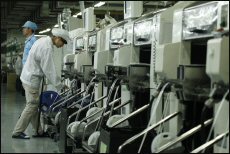
Guangdong-Hong Kong cooperation during the 12th FYP period should see a move from PRD manufacturing to PRD marketing
Market integration should be the logical progression of Guangdong-Hong Kong cooperation during the 12th FYP period. This would mean moving from PRD manufacturing (made in China) to PRD marketing (marketed in China).
There will also be a transition from export-oriented economic integration to real integration of local and overseas markets; that is, market integration in a substantial sense. Seen from the long-term prospects of development in the Greater PRD, the rise of Hong Kong and Guangdong as a major city cluster requires not just world-class manufacturing and trade, but also an internationally competitive market system. That system has to be free and open, featuring the integration of internal and external markets and world-class manufacturing, logistics and consumption.
Market integration has to include a number of key features. First, there has to be a unified process of commodity inspection and certification for manufacturing in the PRD. That will provide a process-driven means for a transition from manufacturing to becoming a market, ultimately achieving the integration of the PRD consumer market.
There should also be unified market access for PRD services industries in order to achieve the integration of a services market. Finally, unified rules are required for the PRD market, including standards for goods and services and a system of market regulation.
The Hong Kong Model
To achieve these objectives, other tasks need to be kept in mind, including deepening the domestic market’s structural reform. This involves lifting government economic controls and eliminating unreasonable market rules, which are the fundamental reasons for high transaction costs. It is also necessary, eventually, to make the market system compatible with the Hong Kong system.
Guangdong as a pilot province should take the lead in building an efficient market system with low transaction costs, combining internal and external markets in cooperation with Hong Kong. This represents a great opportunity for a cooperative transition in the Guangdong-Hong Kong relationship and, at the same time, its biggest challenge.
June 10 2011
Sitting Pretty: ART Hong Kong
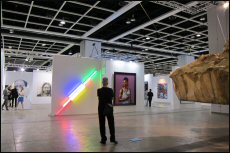
ART HK 11, which attracted 260 galleries from 38 countries and regions, will be integrated into the Art Basel brand
The crowds were a telling sign. Another was the number of exhibitors attending the fourth edition of the Hong Kong International Art Fair (Art HK 11). The four-day event, 26-29 May, at the Hong Kong Convention and Exhibition Centre, attracted 260 galleries from 38 countries and regions.
In just a few short years, ART HK has emerged as the region’s leading international contemporary art fair, raising the city’s status as an international arts hub.
“Hong Kong is uniquely placed because it’s the world’s third-largest art market by auction turnover,” said Fair Director Magnus Renfrew. “Its shared Western history, the English language, as well as tax advantages, are strong reasons” for Hong Kong to remain the regional centre for the international arts market, he added.
New to this year’s fair were top international galleries L&M Arts, Victoria Miro Gallery and New York-based Marian Goodman Gallery. They were among the 168 leading modern-art dealers who took part in this year’s ART HK. Other well-known art dealers, including London gallery White Cube, also returned this year, showcasing work by English artist Damien Hirst and other leading contemporary artists.
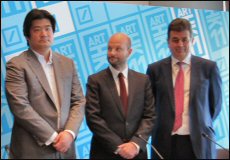
ART HK Director Magnus Renfrew (center) is flanked by Richard Chang (left), ART HK Advisory Group member and Director of Tira Holdings, and Tim Etchells, CEO of Asian Art Fairs Ltd
Some of the highlights at this year’s event included Asia One, a new section dedicated to solo presentations by Asian artists. Galleries from Turkey, the Middle East, the Indian sub-continent, Australia and New Zealand, as well as north, east and Southeast Asia were represented. The Art Futures section, showcasing work by emerging artists represented by 45 of the world’s best new galleries, was also expanded.
Art Basel Comes to Asia
The popularity of ART HK reflects the growing importance of Asia to the international art market. To underscore that, a deal was announced last month for Swiss MCH Group, organisers of Art Basel and Art Basel Miami, to acquire a majority stake in ART HK. The sale, which takes effect in July, means that ART HK will eventually be integrated into the Art Basel brand.
“We considered this long and hard,” said Tim Etchells, CEO of Asian Art Fairs Ltd, which owns ART HK. “The Basel brand is so strong that this gives us the opportunity to take the fair to the next stage. Art Basel will bring its unrivalled experience of running the two most important art shows worldwide to our existing expertise and know-how in Hong Kong.”
Perfect Fit

Pablo Picasso’s Buste d’Homme (1969) was featured at ART HK 11 by New York-based Acquavella Galleries
The news was no surprise to those in the industry, many of whom believe the partnership makes sense. “It’s a perfect fit,” said Ben Brown, owner of London-based Ben Brown Fine Arts, and one of the first exhibitors at ART HK. “I think that Basel would do a good job with it, and I hope that Art Basel will retain a very strong element of Asia and Asian culture in the fair.”
Asian art exhibitors voiced similar sentiments, including Indonesia’s Arkgalerie, which returned for its second showing. “Art HK remains a strong regional arts hub. We made many important contacts when we exhibited for the first time last year,” said Arkgalerie Manager Putri Ayu Pratiwi. “When we heard the news, we thought it would open doors to a wider set of contacts. But we still hope the new owners will keep the fair’s identity.”
MCH has pledged to preserve ART HK’s Asian flavour. “With our acquisition, we will be able to build on their know-how, while at the same time, channelling our own extensive expertise in the art world,” said Rene Kamm, CEO of the MCH Group.
“We have no intention of doing a ‘copy-and-paste’ fair in Hong Kong,” Marc Spiegler, co-director of Art Basel and Art Basel Miami Beach, told the Financial Times. “Each of our shows has to have a unique core.”
Moving East

Hong Kong artist South Ho’s Into the Light VI (2008) was showcased at the new Art Futures section by Blindspot Gallery
To time ART HK with the dates of Art Basel and Art Basel Miami Beach, future editions will take place in early spring. Next year's show, however, will again be held in May after an earlier decision to hold the 2012 edition in February was scrapped because it would have been too close to the Chinese new year holiday.
“May has been a good time, coinciding with the major auctions,” said Mr Renfrew, who will remain the show’s director next year. “But February puts it squarely in between Basel Miami and Basel in June. It’s been thought that the new schedule would create a third peak in the Hong Kong art season. Auction houses might create a new season [as a result].”
With last week’s record-breaking sale of Lotus and Mandarin Ducks (1947) by the late Chinese painter Chang Dai-chien for US$24.5 million at the latest Hong Kong Sotheby’s auction, it’s not surprising that the Western art market is taking notice.
Philip Dodd, Advisory Group member, and former Director of ICA London and Creative Director of China Now Festival 2008, summed up the general sentiment within the industry: “The world is moving East, and Hong Kong is simply an important sign of the times.”
June 3 2011
Hong Kong’s Biggest Auction: The Take Away
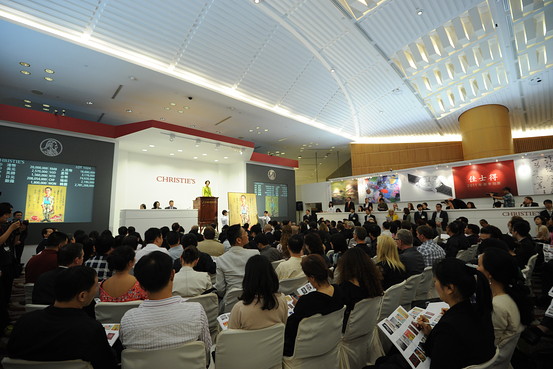
After six days of Christie’s auctions in Hong Kong, the final tally is in: Buyers spent 3.65 billion Hong Kong dollars (US$469.2 million) on fine wines, antiques, jewelry, watches and art, making it the biggest sale in Hong Kong auction history.
The auction surpassed its presale estimate of HK$2.4 billion, selling 88% of its lots. The sales value was 59% higher from Christie’s spring sales a year ago. (Both Christie’s and rival auction house Sotheby’s typically group their big sales of collectibles into multiday events that occur twice a year.) Sotheby’s, for its part, sold HK$3.49 billion during its week of spring sales in April.
Who was buying? And what did they buy? Here is a recap of what happened over the past six days:
1. China’s buying, of course.
As with previous sales of recent years, the largest contingent of buyers were Chinese. The auction house said clients from Greater China—mainland China, Taiwan and Hong Kong—were responsible for 70% of the total sale value of the auctions.
Indeed, China overtook the U.S. as the world’s most valuable art market last year, according to trade publication Artprice, and the strong sales at the Christie’s event, including contemporary Asian art, proved that the appetite for art remains strong. Hong Kong last year became the largest auction market for fine wines, overtaking New York and London. Christie’s eight-hour sale of Chateau Latour wine on Friday saw the auction house’s highest average lot value to date, at HK$152,000.
2. Ceramics are most popular, followed by contemporary art.
Four sales Thursday composed of mostly precious Chinese porcelains drew the most money, selling a combined total of HK$829.7 million. The top sale of the day was a Falangcai “kui dragons” bowl from the Qianlong period (1736-1795), which sold for HK$60 million, well over its presale high estimate of HK$15 million.
Sales of contemporary art was the next highest-selling category, bringing in HK$761.5 million. The top lot sold: Zao Wou-Ki’s “2.11.50,” for HK$41 million.
3. There are limits to Chinese spending.
While some items went well over their high estimate, the most prized and anticipated lot, an antique Chinese vase from the 18th century, failed to sell. The revolving double vase attracted some bidding interest, but didn’t breach the reserve price of HK$240 million. In April, Sotheby’s faced a similar fate when its top lot, a HK$180 million Falangcai vase, failed to sell at auction.
4. Latour is the new Lafite.
The first sale of the six-day event was a wine auction featuring bottles from Château Latour. All 392 lots sold and 95% of them went over their high estimate, bringing in HK$59.7 million. In October, a record Sotheby’s sale of bottles of Château Lafite-Rothschild brought in HK$65.4 million HK$5.4 million for its 284 lots. Latour is quickly becoming an equally important trophy label for Chinese collectors.
5. Filipino art: The new hot thing?
The sale of Southeast Asian modern and contemporary art wasn’t the most popular section of the spring sales event –76% of the lots sold and it garnered just HK$49 million, though some of the works sold for far above their estimates. But the sale set records for lesser-known Filipino artists such as José John Santos III and Patricia Eustaquio. In fact, 95% of lots by Filipino artists sold, including Mr. Santos’s “Paper Dolls,” which fetched HK$1.1 million from an Asian collector, almost 10 times the high estimate of HK$120,000.
June 2 2011
Beef Stakes
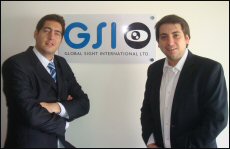
Romulo Gonzalez Johansen (left) and business partner Hernan Caetano Das Pedras set up Hong Kong-based Global Sight International to promote Argentinean food products in Asia
Romulo Gonzalez and his business partner and childhood friend, Hernan Caetano Das Pedras, set up Global Sight International (GSI) in Hong Kong in 2009 to promote Argentina’s food products.
“We started with beef because we already had a brand. People know about Argentinean beef,” said Mr Gonzales Johansen. But unlike Europe, he said, Asia remains an untapped market for Argentinean products.
“Our aim is to create a company that provides Argentinean and South American food to Asia. We do not deal with brokers. We buy direct from Argentinean producers to supply hotels and restaurants.” He said the company is also in discussions to supply Argentinean beef and wine to the city’s upscale supermarkets.
According to Mr Gonzales Johansen, Argentinean beef is “different,” because of the way cattle is raised in the country, where cows outnumber people. He said few beef-producing countries have the luxury of raising cows as they do in Argentina, where “each cow has the space of a football field to roam and graze.
“What we need to change is the belief in Asia that cows naturally eat grain. Grain-fed beef is fatty, marbly, which makes it tender, but is not healthy; it’s full of fat. Argentina has lean beef because cows are grass fed. We have to educate people here about that fact, which takes time.”
One of the ways they’re helping to promote their products is by holding blind tests. “We’ve found that consumers come away surprised that Argentinean beef was actually one of their top choices.”
Business Pioneers

A choice cut of Argentinean ribeye steak
Mr Gonzales Johansen was inspired to set up GSI after frequent business trips to the Chinese mainland exposed him to Asia’s commercial potential.
“In Argentina, and elsewhere in South America, Hong Kong is like a new market to us. That’s why we chose this part of the world to set up our business,” Mr Caetano Das Pedras said. “It would be easier to go to Europe to start our business, because they know about our products, our beef. But we’re interested in starting to promote our produce and tradition in this part of the world.”
By being among the first from their home country to set up business in Hong Kong, the two are showing the way for a growing number of Argentinean businesses interested in exploring Asia from Hong Kong. To cater to that trend, the partners, with government support, set up the Argentina Chamber of Commerce in Hong Kong last October.
Playing by the Rules
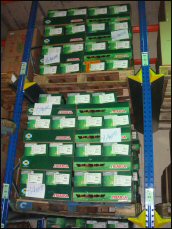
Premium beef is sourced direct from Argentinean producers for delivery to Hong Kong hotels and restaurants
“International business people prefer to do business in Hong Kong, where the rules are clear, and people feel safer doing business from here,” Mr Gonzales Johansen said. He noted that while the mainland is an attractive market, “Hong Kong is like the office of China, where everybody comes to play by the clear rules.
A chef by training, Mr Caetano Das Pedras has been instrumental in educating people in the industry about the special qualities of Argentinean beef.
“It helps that I can speak the same language as the industry, teaching chefs how to prepare traditional Argentinean food, especially beef,” said Mr Caetano Das Pedras. “For instance, it’s best to use charcoal when grilling steak because it brings out the flavour. But that’s more difficult to do in Hong Kong restaurants, which typically use a gas grill.” Another tip: “Argentinean beef is best seasoned only with salt and pepper.”
The company has also begun focusing on importing Argentinean wine, including the country’s popular Malbec and Torrontes wines. “Hong Kong is a really competitive wine market. You have no taxes, you can find wines from every wine-producing world, so there are many players already set up,” said Mr Gonzales Johansen. “But we’re not trying to compete with the big players. We’re trying to bring nice wines, boutique wines that we think are great. Wine goes hand in hand with beef, and we know Argentinean wine is growing in Asia,” he said.
By setting up in Hong Kong, the partners believe they are well-positioned to eventually enter the mainland market, where authorities are poised to allow Argentinean beef imports.
“In China each year, there are about 40 million people new consumers being created, which is equivalent to the population of Argentina. And as the society keeps growing, so will their spending power,” he said.
“But you are what you eat. Even if you can afford the best cars or fashion brands, that doesn’t matter if your food is still of poor quality. And this market will start demanding the best products. That’s the opportunity for our country – to be able to supply high quality and natural products.”
June 1 2011
Flying High
Hong Kong’s role in the region’s rapidly growing market for commercial and private aviation was evident at the Asian Business Aviation trade event, held in the city in March. Organisers report that the 11 manufacturers, which had 22 jets on display, took orders worth about US$10 billion on the first day alone.
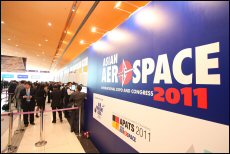
More than half the world’s commercial fleet were represented at Asian Aerospace in Hong Kong in March
Held alongside Asia’s premier commercial aviation event, Asian Aerospace, trade visitors were up 130 per cent on the previous show two years earlier, and they included more than 500 delegates from Chinese mainland airlines. The global airline representation exceeded 100 carriers, which operate over 11,000 aircraft, accounting for more than half the world's commercial fleet.
The event’s success supports figures from independent private aircraft data service, JetNet, which reported double-digit growth of private planes in Asia-Pacfic region, year-on-year, since 2005, with China recording the highest growth.

Mike Walsh, Chief Executive, Asia Jet
Mike Walsh, Chief Executive of Hong Kong-based operator Asia Jet, said Hong Kong offers a convenient and cost-effective location for aviation businesses and their clients. He said this explains why “everyone is trying Hong Kong first, looking to get into China.”
Tax Benefits – and More
Notably, importing aircraft into tax-exempt Hong Kong avoids a 23 per cent tax on the total asset that’s applied on the mainland. But Hong Kong offers other benefits as well, Mr Walsh said.
He cited ease of access and no cabotage issues, as Hong Kong is an island, and every flight in and out of Hong Kong is currently international. “The tax regime is flexible, and the Hong Kong Civil Aviation Department is experienced in accepting general aviation at its airport. Hiring and attracting pilots and crews is easier than on the mainland, where there is a lack of pilots,” added Mr Walsh. “And unless you are like us and have associated your company with a mainland airline as your strategic partner, it is difficult to get the staff required to run a successful operation in China. So Hong Kong is definitely the right platform.”
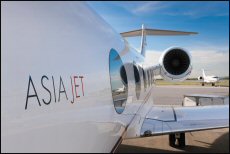
Asia Jet is preparing to add new aircraft to its fleet
Asia Jet is a Hong Kong-registered company established in 2008 under parent company, BVI-held Asia Jet Partners Holdings. It began trading in March 2009, with the launch of the Asia Jet Card Program, the first dedicated Jet Card business in Asia.
Currently, Asia Jet operates a fleet of Gulfstream G-200s, a G4, CL-605 and Hawker 800. Mr Walsh said that, within the next four months, there will be an additional G-150, G-200 and Citation XLS+, all “brand-new aircraft straight from the manufacturers,” including two that are the first of their kind for the region. Asia Jet services include on-demand charter service, block charter (the Jet Card Program), and an ownership programme, in which clients purchase a share of an aircraft.
Flying Limousines
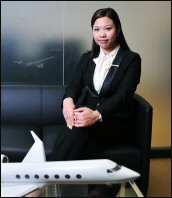
Jackie Wu, Chief Operating Officer, Hong Kong Jet
Hong Kong Jet, a subsidiary of HNA Group, the fourth-biggest aviation group on the mainland, opened in Hong Kong in 2009. Its first aircraft will be delivered in June. Chief Operating Officer Jackie Wu said growing demand was the reason behind the move.
“We’ve witnessed a 50 per cent growth of business jets in Hong Kong in the past two years, and forecast another 50 per cent growth by 2012. The strong demand is reflected in requests regarding chartering, aircraft management and aircraft acquisition.”
Ms Wu said that Chinese clients account for 30 per cent of all charter enquiries received by the company, and 50 per cent of the aircraft acquisition enquiries.
“Riding on the economy boom of China, entrepreneurs in Hong Kong fly more frequently to explore business opportunities and meet business partners on the mainland,” she said. “They need personalised and flexible transportation tools to accomplish their plans. Entrepreneurs choose private jets over commercial airlines, as it saves time from security checks, long waiting periods, unexpected delays and indirect flights. They may have many meetings in different cities in a day. They take private jets as their own air limousines.”
Ms Wu added that private jet ownership is rising for similar reasons as chartering, especially for wealthy mainland buyers for whom it is a status symbol. “Basing an aircraft in Hong Kong is convenient, as it can accommodate jets in different registration and provide the necessary flexibility. The city is a hub for corporates that would like to develop business in China.”
Expertise on Hand
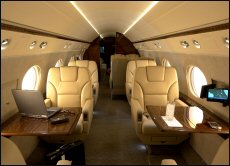
The interior of the Gulfstream G550, the world’s most advanced business aircraft, to be operated by Hong Kong Jet
While agreeing that the absence of import tax is a major incentive for the private aviation business, Ms Wu emphasised Hong Kong’s other advantages.
“Geographically, Hong Kong is a gateway to the China market, possessing well-developed facilities, with comparatively flexible registration procedures and more expertise on hand,” she said. “There are more new private jet operators in the market and aircraft manufacturers setting up branch offices in Hong Kong. We foresee a very positive potential development in Hong Kong.”

Hong Kong Jet’s first aircraft will be delivered in June
Jeff Lowe, Director of Sales and Marketing for Hong Kong-based jet management company Business Aviation Asia Ltd (BAA), agreed that growth in Hong Kong “has been extraordinary over the past five years.” He recalled that, in 1997, there was only one private jet in Hong Kong – a pre-owned Hawker 700 belonging to businessman Sir Michael Kadoorie. Today there are closer to 60.
“In Greater China – the mainland, Hong Kong, Macau and Taiwan – there were an estimated 54 business jets at the end of 2007; today there’s an estimated. 177. That’s 123 more over 3.5 years – 35 per year – so that’s at least 65 per cent growth per year if you assume the same growth per year.” He said BAA will add another 13 to 15 aircraft to its fleet this year.
MAY 27 2011
Hong Kong's New West Kowloon Cultural District Authority CEO Named for the US$2.8 billion project
An Australian has been named to take over as chief executive of the multibillion-dollar West Kowloon Cultural District Authority, which has been plagued with delays and an executive reshuffling.
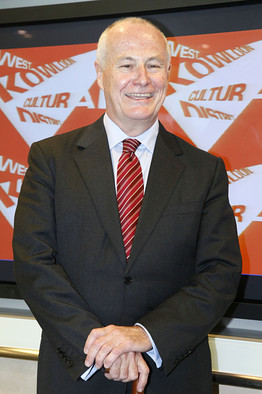
Michael Lynch, the 60-year-old former chief executive of the Sydney Opera House and South Bank arts complex in London, has signed a three-year contract for the top position at the Cultural Authority. He will assume his duties in Hong Kong on July 25, authority Chairman Henry Tang said Friday.
Mr. Lynch fills the vacancy created when Graham Sheffield stepped down as chief executive of the 21.6 billion Hong Kong dollar government project (US$2.8 billion) in January, citing health reasons.
Plans for the district now seem to be moving forward. In March, the cultural authority selected a design by architect by Norman Foster and his firm, Foster + Partners, dubbed “City Park” for the 40-hectare waterfront arts complex. The other two proposed plans, one by Hong Kong firm Rocco Design Architects Ltd. and the other by Office for Metropolitan Architecture, led by Dutch architect Rem Koolhaas, may also be integrated into the design.
Indeed, Mr. Lynch, who is currently board director of the Australian Broadcasting Corp., said he intends to see construction begin by the time his three-year contract expires. After three years, the board will decide whether to offer to extend his term.
“This is the biggest and most complex art project in the world,” he said. “We’re about to move into ‘do’ phase rather than ‘talk’ phase.”
As for the type of programming he hopes to attract to the district, he says it “needs to reflect the art forms people are interested in,” adding that “freedom of expression is the mantra for what we’d be doing.”
May 26 2011
Lesson in cold, hard cash for aspiring Harrow pupils - Initial batch of debentures sells out more than a year before HK branch of top English school will open
- estimate total cost in excess of US$129,000,000 By
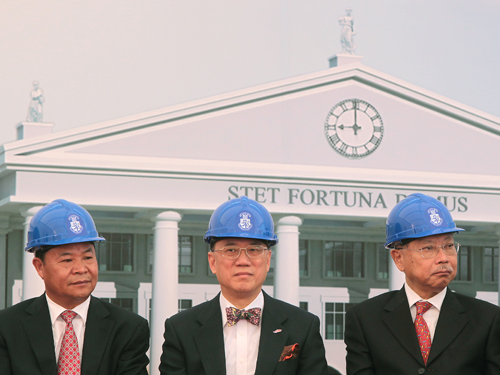
Foreign Affairs commissioner Lu Xinhua, Chief Executive Donald Tsang Yam-kuen, education secretary Michael Suen Ming-yeung and Heung Yee Kuk chairman Lau Wong-fat at a Harrow stone-laying yesterday.
Money is no object for parents aspiring to have their children attend the Harrow International School.

The school's top executives yesterday said the first batch of HK$600,000 each
(US$77,430) debentures had sold out. But the HK$3 million (US$387,096) capital certificates, which give candidates top priority, were still available. Parents can also choose to pay an annual levy of HK$50,000
(US$6,451) on top of school fees, which is proposed will range from HK$106,600
(US$13,755) to HK$145,000 (US$18,710). The school's English parent counts Lord Byron and Winston Churchill among its alumni.
Harrow International chief operating officer Mark Hensman said the prices - among the highest in a city known for its expensive international schools - were necessary because the co-ed boarding school was completely self-funded.
But he stressed that the school was "a school for everybody" instead of "only for elites and the wealthy". The school plans to open in September next year.
So far, more than 1,000 parents have expressed interest in having their children enrolled. Hong Kong branch headmaster Mel Mrowiec said 300 children had been tested so far, with some awarded a place. He said scholarships, to come from 10 per cent of fee income as well as private donations, would be provided to children who showed leadership potential.
Henderson Land (SEHK: 0012) vice-chairman Peter Lee Ka-kit is among private donors who contributed an unspecified amount to the school. Lee said he hoped that good students from grass-root families, as well as his three sons born through surrogacy, could attend the school.
Hensman stressed that all children must pass admission tests regardless of how much their parents have paid the school.
Shopping in Hong Kong becomes a matter of necessity for mainlanders customers
By Anita Lam
The strong yuan and rising food prices are sending mainland tour groups to the city's retailers in search of soap and noodles - as well as luxury goods
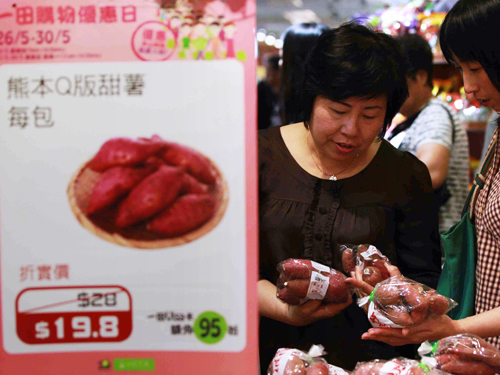
Shoppers at YATA in Sha Tin, which expects mainlanders to account for 15 per cent of sales this year.
Throngs of mainland tour groups are a common sight at luxury retailers in Hong Kong's shopping malls, but they are now coming to the city for their daily needs, too.
The strong yuan and soaring food prices have prompted some marketing agents to organise shopping tours targeting staple items such as noodles, frying pans and bed linen rather than the usual designer gowns and hand-made wristwatches.
Li Ying, a Guangzhou-based executive with Panasonic, who joined a one-day shopping tour to the YATA department store in Sha Tin yesterday, said she planned to spend 8,000 yuan (HK$9,575) on goods ranging from skin-care products and bed linen to Japanese soya sauce, cooking oil and crackers.
"It may sound a bit weird that I should carry such bulky and low-value goods all the way back home, but really, some of these goods cost twice as much in Guangzhou."
Another woman, who gave her name only as "Ms Chung", said she visited Hong Kong nearly every month, picking up merchandise that included noodles, baby formula, diapers and cooking utensils, and spending up to 10,000 yuan a trip.
"With the difference in rates and sales offered by stores, we make 20 per cent savings on prices, and of course the goods are of better quality," she said.
While inflation in the mainland rose 5 per cent last month, food prices rose 11 per cent.
Albert Hung, a marketing agent for China's Unionpay card, who organised yesterday's trip, said they would organise more if they proved to be popular.
Daniel Chong Wai-chung, managing director of YATA Department Store, which launched its biannual five-day sale yesterday, said mainland clients' contribution to total sales is expected to reach 15 per cent this year, from 8 per cent last year.
While the city abounds with anecdotes of big-spending mainlanders, some tourists said the stories are often exaggerated.
Four members from the tour group said they planned to spend or usually spent HK$8,000 to HK$10,000 during their shopping trips, but one of them, Liang Luisi, an accountant earning 3,000 yuan a month, admitted she had been told to say so. "The travel agent told me to tell the media that I planned to spend a few thousand yuan here," Liang said. "But I may not actually spend that much."
Liang, a first-time visitor to Hong Kong, said she had been drawn to the tour after seeing friends bringing back shampoo and skin-care products that she had not seen in Guangzhou. But she did not find the shoes and handbags particularly cheap.
A Hong Kong Tourism Board survey found that only about 1.5 per cent of the 60,000 mainlanders spend HK$50,000 or more during a day visit to the city.
May 25, 2011
A Hands-On Hotel Internship By Amy Ma
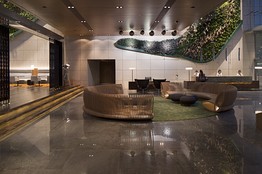
Richard Hatter, the general manager for Hong Kong’s Hotel ICON, says his first internship wasn’t a great learning experience: six months of sitting behind a desk as a cashier for the Intercontinental Hotel in Portland Square, London.
But the newest flock of interns at Hotel ICON, who begin their stint in July and stay until November, won’t have to suffer those bottom-of-the-ladder experiences. This is because the hotel, which had its soft opening on April 29, is owned by their school, Hong Kong Polytechnic University. Two hundred students will be chosen as interns from the undergraduate class of 2,000. On a regular basis, the hotel is run by 300
non-student, full-time staff.
“We don’t want the interns to be waiters or spend their summer at the copy machine,” says Mr. Hatter. “We want them to develop real skills.” He recently invited 700 “mystery shoppers” from various backgrounds to have a stay in the hotel and test the staff with demands ranging from room service at odd hours to delivering their luggage to special locations, and plans to have a new group for his interns.
While other hotel-management programs tend to have franchise agreements with universities, Hotel ICON is in fact an integrated campus of sorts wholly owned and developed by the school. It comprises three sections: a 36-unit apartment complex for faculty; two basements and eight floors of classrooms, libraries, and study space for students; and a 262-room hotel.
Three of the rooms in the hotel are designated “prototype rooms,” and students can try their hand at designing them. Each room has its own theme: lifestyle, technology and design. “You can literally go in and change the carpeting or sheets to a different texture, or add in your art pieces,” says Mr. Hatter. “At the end of their stay, your guests can give you instant feedback and what worked and what didn’t.”
The rest of the hotel, however, has designers that are far from amateur. Along with big international names like Terence Conran – who created the executive club floor and the Above & Beyond Chinese restaurant – and Patrick Blanc – who is responsible for a “green wall” of 8,000 live plants — there’s also a selection of local Hong Kong talent. Hong Kong fashion designer Barney Cheng created the staff uniforms. And fashion designer Vivienne Tam – a graduate of the Hong Kong Polytechnic University – put her mind behind the honeymoon suite.
“The most important thing here is that ICON is a self-sustaining hotel, and not just a simulated environment,” says Mr. Hatter. “We can’t very well teach people about hotels without running a successful one.”
May 24 2011
IPOs Power Job Boom in Hong Kong

Hong Kong's booming IPO market is having a direct effect on job growth
Nick Lambe, Managing Director, Morgan McKinley Hong Kong, describes a job market he hasn’t seen since before the global financial crisis. “We have seen very strong hiring activity in Hong Kong within the corporate finance space so far this year, with the majority of hires being at the analyst and associate levels. There are already more senior roles at VP (vice-president) and director levels starting to come online, as organisations continue to build their teams and compete for top talent.”
Mr Lambe says this is “a direct result” of Hong Kong’s booming IPO market, the world’s largest by fund-raising size in 2010, with a record HK$445 billion raised, according to accounting firm PwC. Even with the mega-listings that made history last year, he expects the trend to continue as Chinese mainland companies continue to drive IPO activity in Hong Kong.
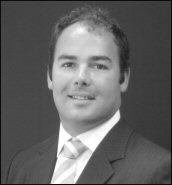
Nick Lambe, Managing Director, Morgan McKinley Hong Kong
“The Hong Kong Stock Exchange has become a hub for cross-border IPO activity, leading to a shortage of professionals in the local market,” Mr Lambe says. “Top investment banks are therefore competing heavily to secure individuals, either locally or from further afield. Individuals with experience at top-tier organisations, and native or fluent Mandarin speakers, are particularly sought after.
He notes that professionals with strong financial modelling skills, Ivy League education or equivalent, with strong deal experience, are in high demand, while areas such as Equity Capital Markets and research are particularly hot areas at the moment.
Luxury Brands Lead the Way
Mr Lambe says these IPO-related positions are indicative of a strong market in Greater China. “Examples of this are particularly prevalent within the luxury goods sector, where organisations are looking to access the financial markets to help fund business growth in the Greater China region.”
Mr Lambe was referring to luxury Italian brand Prada’s decision to launch its Initial Public Offering in Hong Kong, and widespread speculation that other European brands may follow in positioning themselves at the gateway to China, the world's fastest-growing market for luxury goods. Last year, French cosmetics and skincare brand L’Occitane International chose Hong Kong over Paris for its global IPO, making history as the first French company to list in Hong Kong. Last month, upscale American handbag and accessories maker Coach and luxury shoe group Jimmy Choo emerged as the latest global brands to consider a Hong Kong listing. According to a report by Thomson Reuters publication IFR, New York-based Coach Inc is in preliminary talks with several investment banks.
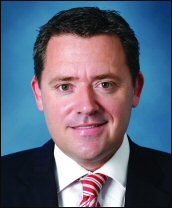
Anthony Thompson, Managing Director of Michael Page, Hong Kong and Southern China
The Wall Street Journal also reported in March that the list of global brands planning to list in Hong Kong is swelling. The report cited commodities trader Glencore International of Switzerland, Italy’s Ducati Motor Holding and luggage maker Samsonite among the names that are considering applying for a Hong Kong listing or have recently gained listing approval.
Recruiters Busy
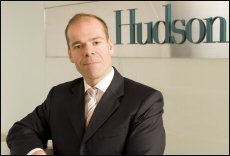
James Carss, Executive General Manager, Hudson Hong Kong
Other recruiters also report a flow-on effect to the city’s job market. “The boom in IPOs and the resurgence of M&A activity are certainly keeping the Hong Kong consulting industry busy and impacting hiring decisions,” says Phil Shirley, Greater China M&A Business Leader at Mercer. “We're seeing a lot of interest in due diligence services, executive remuneration advice and consulting around cultural change relating to these transactions. We also notice our clients beefing up their corporate strategy teams and adding M&A expertise to functional areas."
A recent Michael Page International survey also forecasts a continued strengthening of the professional labour market in Hong Kong this year. “This positive hiring outlook is aligned with high levels of business confidence after a strong recovery in 2010,” the report found. Anthony Thompson, Managing Director of Michael Page, Hong Kong and Southern China, says demand for senior-level professionals with proven experience in initial public offerings is a trend “evident across a range of sectors that include consumer, property and mining.”
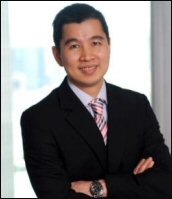
TY Lee, Manager – Front Office Division, Robert Walters Hong Kong
James Carss, Executive General Manager, Hudson Hong Kong, says the booming IPO market is “definitely having an effect” on the city’s job growth. “Mainland Chinese candidates with the necessary deal experience, as well as Western candidates with good Asian cross-border deal exposure are in high demand in Hong Kong. “ Mr Carss says employers want people who can hit the ground running. “They don’t have time to bring them up through the ranks. Instead, they are looking to other parts of the world for lateral moves to start working on deals.”
Job Magnet
TY Lee, Manager – Front Office Division, at Robert Walters Hong Kong, says Hong Kong’s hot job market is nothing new. “Hong Kong has always been the prominent financial hub of Asia,” he says. “With the booming IPO market, we see a lot of demand for bankers with relevant IPO and investment banking experience, especially those with good experience in China and with Mandarin-speaking ability. Besides the demand for front-line investment bankers, the IPO boom has also created jobs for middle- and back-office professionals who can support these bankers.”
May 23, 2011
Milan Station: Even Its Stock Draws Shoppers
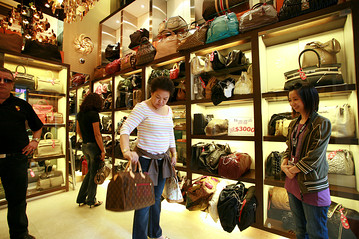
Hong Kongers love shopping — for equities as much as handbags. The latest evidence is the intial public offering of Milan Station, which has given them a chance to indulge both passions in one go.
Shares in Milan Station, a retailer of second-hand high-end fashion items with operations in Hong Kong, Macau and China, soared as much as 77% on its first day of trading on Monday. The Hang Seng Index was down more than 1%.
The last time an IPO was this well received by retail investors was in 2006, when Tianjin Port Development Holdings Ltd.’s retail offering was 1,702 times covered.
As Dow Jones Newswires reports, the tiny IPO, which raised just HK$271 million (US$34.9 million), was 2,179.5 times oversubscribed by retail investors. That triggered the option to increase the retail tranche to 50% of the IPO from 10% originally.
Milan Station’s IPO is riding on a wave of brand-name IPOs in Hong Kong, including Prada SpA and Samsonite, but the company has a special place in the hearts of tai tais , Hong Kong’s wealthy ladies of leisure , and those who aspire to be one. It’s popularized the business model of buying used fashion items and re-selling them, giving mere mortals the chance at carrying a Hermes Birkin bag, even if it’s going to be so-last-season.
May 19 2011
Full steam - or fry - ahead - Choosing the best dim sum restaurant in Hong Kong is no easy matter
By Susan Jung susan.jung@scmp.com
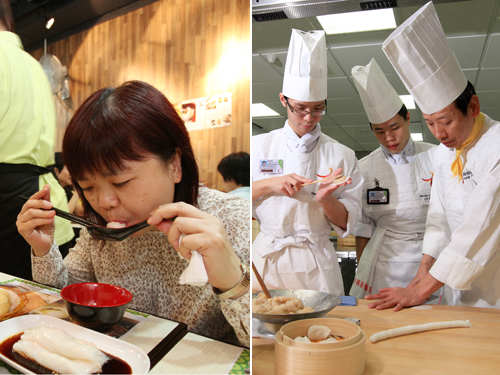
From left: Tucking in at Tim Ho Wan restaurant in Mong Kok while students learn the art at the ChineseCuisine Training Institute.
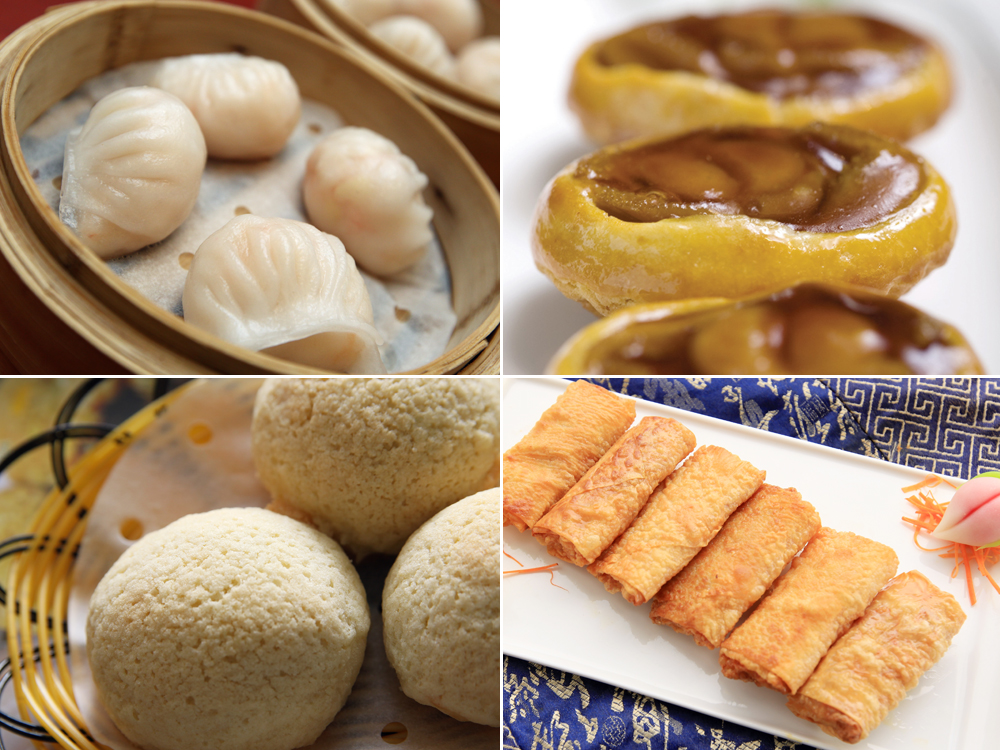
Clockwise from top left: Steamed dumplings with prawns and leaf amaranth at Fook Lam Moon; Abalone puffs at the Four Season Hotel's Lung King Heen; Deep-fried beancurd skin roll at the Chinese Cuisine Training Institute; and Baked bun with barbecue pork at Tim Ho Wan
Dim sum provokes passionate debate in Hong Kong. When I took a poll among my foodie friends about which restaurants I should visit for this story, the suggestions came fast and furious, sparking discussion about whether we should just go for "the best" or also include places that are local institutions.
Arguments about these steamed, fried or baked morsels might seem petty, but it takes years for dim sum chefs to perfect their craft.
Chan Chun-hung, who worked as a dim sum chef at places such as the Kowloon Shangri-La and Luk Yu Tea House before becoming senior instructor in Southern Chinese food preparation at the Chinese Cuisine Training Institute in Pokfulam, says that it takes about eight to 10 years to become a good dim sum chef. A trainee must learn to make seven types of dough, from fermented dough for char siu bao to egg wrappers for sui gau (water dumplings).
"The hardest thing to learn is dumpling skins - they need to be delicate," says Chan. "There are certain criteria when making dim sum, for instance, har gau [shrimp dumplings] must have a skin that's chewy, and it must be filled with fresh shrimp. The shape must be uniform, with a minimum of nine to 10 pleats."
Dim sum is the most technical and delicate component of the CCTI's two-year training course, says Peter Lo Hon-fai, programme manager of culinary training.
Lo differentiates between the dim sum as made in its spiritual home - southern China - and dim sum served in the north, where the cooking techniques are limited to poaching, pan-frying and steaming.
"There's more variety in southern dim sum, with some techniques that are learned from the west, such as baking," he says, adding that deep-fried dim sum is the most difficult. "With steaming, the temperature is fixed, but with frying, there are different types of wrappers and they need different levels of heat."
Most of us think of the food first when we go out for dim sum, or yum cha, as it's also known. But it started off as something to accompany tea.
"Tea drinking has a long history in China - it came before dim sum," says Lo. "People started to eat food with tea, because tea is good for the digestion. The food became smaller and smaller, so it's now one bite food. It wasn't meant to be a full meal - it's breakfast, afternoon tea or a snack."
Today, though, most people treat it as a full meal and there are specialist dim sum shops that serve it all day.
For this story, I visited restaurants across the spectrum - from traditional and inexpensive to modern and luxurious, and a few places in between. Some of the best are listed below, but remember, this only touches the surface of what's available in Hong Kong.
May 19 2011
The Age of Innovation
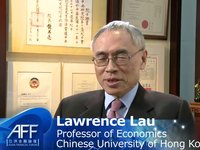 video presentation http://www.vimeo.com/23909476 video presentation http://www.vimeo.com/23909476
Lawrence Lau is Professor of Economic Development at Stanford University, Professor of Economics at the Chinese University of Hong Kong and Chairman of CIC International (Hong Kong) Co Ltd, a wholly-owned subsidiary of China Investment Corporation, the sovereign wealth fund of China. In Six Questions, Mr Lau talks about Hong Kong’s role in the development of branding and innovation on the mainland.
What lies ahead for the Chinese economy?
As you can tell from the 12th Five-Year Plan, China is going to change in two directions at least. One is to change from an export-oriented economy to an economy focusing on its own internal market, which is huge.
I think the second thing is, if you really look at what has happened in the last 30 years, Chinese growth has basically been driven by growth in inputs; but that can’t continue for too much longer. So I think China will be shifting to growth much more driven by technical progress and innovation.
Do you see the Chinese mainland being the consumer society of the future?
I think it would be for the next 30 years. They’re at that stage where they begin to want things: cars, watches, television sets, you name it. I think it’s coming. In some sense, it has already happened in the major urban centres in China.
Consumers are seen as a low component of economic growth on the mainland. Do you see that changing?
I think that’s really based on a misunderstanding. People say China is export-oriented but, in fact, the proportion of exports to GDP isn’t that large, at about 30 per cent. What is more important is that the domestic value-added to the domestic measure of content is very low. You take something like the iPad, supposedly made in China. Let’s say the wholesale [value] is about US$500 [per unit], do you know what the value-added is in China? It’s less than US$15. The basic chips are, of course, owned and produced by Apple, while the liquid crystal display, the LED, is made in Japan, South Korea or Taiwan. Chinese value-added is very small.
So is building brands on the mainland important?
If you want to sell to 1.3 billion consumers, you cannot do without brands. There are some very successful brands, but they maybe not well known outside China. One is called Kangshifu (Master Kong), and it makes instant noodles. It used to be a very small, obscure firm in Taiwan, and went to the [Chinese mainland] more than 10 years ago. The firm developed the brand, spent money on advertising. Kangshifu now has 40 per cent of the Chinese instant noodles market. So it’s happening. Other foreign brands that are doing well would be McDonald’s and Starbucks, as well as a lot of Hong Kong and Taiwan brands moving in.
Would developing Chinese brands ultimately push out foreign brands?
They could, although Coca-Cola would probably stay there forever. But more importantly, some brands are branching out, such as Haier, which is doing very well in many parts of the world. For China, a little bit like the United States, you can capture your own market first and then, using that as a base, push out.
Where does Hong Kong stand when it comes to branding on the mainland?
I think Hong Kong can play a role, because people in Hong Kong have much more contact with the rest of the world. They are more current with what’s going on, so they could play a very important role in design, in advertising and in helping to establish brands.
May 18, 2011

Hong Kong Film Festival, Fox studios offer new movie award By Clarence Tsui
Winner gets HK$100,000 prize plus Hollywood deal in bid to promote independent Chinese-language films
The Hong Kong International Film Festival has joined forces with a major American studio in offering a new award aimed at promoting independent Chinese-language films.
The winning project gets a shot at Hollywood funding.
The Fox Chinese Film Development Award, announced at a Cannes Film Festival press conference this week, is a collaboration between the Hong Kong film festival's Hong Kong-Asia Film Financing Forum and Fox International Productions of the United States.
The annual award will be open to Chinese-language film projects that have yet to secure financing or sales representatives. A shortlist of five projects will be drawn up after the call for entries ends on October 30.
The winner will be announced during the film-financing forum in March 2012.
Roger Garcia, the Hong Kong festival's executive director, said the top prize would include HK$100,000 in cash and a first-look development deal with the American studio.
The president of Fox International Productions, Sanford Panitch, said the award would allow what he sees as an emerging class of commercially minded Chinese filmmakers to "have a safe garden to grow in".
The studio's initiative is largely seen as part of its major push into the mainland Chinese market. Fox has already released two Chinese-language co-productions, Hot Summer Days in 2009 and The Butcher, The Chef and the Swordsman last year. Production began in March for Love in Space, a sequel to Hot Summer Days. Panitch said on Monday that the studio was working on its fourth Chinese-language production, but declined to reveal details.
One of the award's eligibility criteria is the applicant project's "high possibility" of being adapted into a Chinese-language film. Panitch said that means the award "will need to be sensitive to the realities of censorship" on the mainland, where screenplays and films must be submitted for official approval before production or release.
"Our tastes and instincts of what we want to achieve matched that of Sarft," said Panitch, referring to Beijing's State Administration of Radio, Film and Television.
The award will be selected by a panel comprising a Fox executive, a festival representative, academics and film industry figures. Panitch said the studio would probably nominate its head of productions and development in Greater China, Carrie Wong, for the jury.
May 13 2011
Why Chinese Buyers Want Hong Kong Homes By Jason Chow
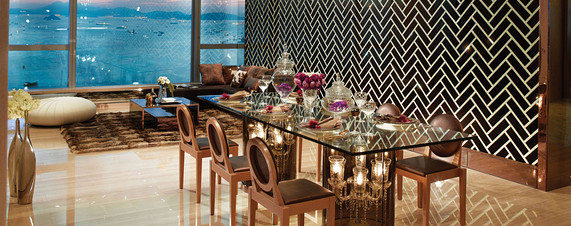
Developers of this show flat in the Cullinan are trying to appeal to rich mainland Chinese property buyers.
China’s rich are snapping up properties all around the world, with all the cities in the world from which to choose, why is Hong Kong so popular?
It has to do with the rule of buying what you know: Hong Kong is the most popular destination for Chinese tourists – it’s nearby and it’s a city where many speak Mandarin. What’s more, the rising yuan goes a long way in Hong Kong, a special administrative region that remains nominally under Chinese rule but whose currency is pegged to the U.S. dollar.
Samson Law, managing director of Sotheby’s real-estate division, adds that China’s recent measures to cool its property market—including limits on multiple-home ownership and higher interest rates—have prompted wealthy Chinese investors look outside the country.
“What’s the next step after China? Hong Kong,” he says. “Then later, they’ll look to buy overseas, in London, New York or in Australia.”
The surging demand from China, especially for luxury properties, has prompted the high-end real-estate divisions of Sotheby’s and Christie’s to set up Hong Kong offices. These buyers aren’t buying just any homes —they’re buying the most expensive in town: In Hong Kong, buyers from China make up 28% of the transactions for properties that are priced at 12 million Hong Kong dollars (US$1.5 million) and higher.
Apparently, Chinese shoppers are most interested in luxury addresses—the Peak and the southern side of Hong Kong Island are top choices for those with sky-high budgets. Neighborhoods with convenient transportation links back to China rank high as well, Mr. Law says. West Kowloon is prized because it sits above an Airport Express station, for instance, and Hung Hom is close to the train terminus that links Hong Kong to Shenzhen and Guangzhou.
The developers of the Imperial Cullinan, a luxury development in West Kowloon, seem to know what Chinese buyers want. The group recently launched a marketing road show in Shenzhen to publicize its four-bedroom condos. Many of the apartments feature sweeping views of Victoria Harbour and two kitchens: one enclosed kitchen with a gas-fired cook top for Chinese cooking and an open Western-style kitchen with an induction stove.
According to Joseph Tsang, managing director of Jones Lang Lasalle, Chinese buyers also value new developments over old, and are looking for capital appreciation rather than rental income.
“These buyers never flip the property and they seldom lease them out,” he says. “They’re not aiming for yield. They’d rather just leave them empty. They just want to park some of their money in Hong Kong.”
Property prices in Hong Kong, fueled by record-low interest rates and the strong demand from China, have reached historic highs, pushing past their previous 1997 peaks. The average price for a house rose 24% last year alone after surging 30% in 2009. Hong Kong’s government has considered several cooling measures in recent months and interest rates are expected to rise later this year, which could bring prices down.
While mainland buyers make up the overwhelming majority of overseas players in the Hong Kong real-estate market, shoppers from other countries are buying as well. Home sales are brisk in Discovery Bay, a small car-free community on Lantau Island that is accessible by ferry and popular among expatriates. According to Christine King, director of the real-estate agency Headland Homes, 90% of them are going to mostly Western expatriates.
During the 1990s and early 2000s, many expatriates—mostly from the U.K. and Australia—were transferred to Hong Kong by their employers and assumed they would spend a maximum of three years in the city before moving home, Ms. King said. But many have chosen to retire in Hong Kong because the taxes are much lower than in their home countries.
“Before, none of the expats would buy,” she said. “They couldn’t get their head around it. But now, people are seeing Hong Kong as home and they see the sense in it.”
May 12 2011
Hong Kong Start-up Support for tech-related start-ups
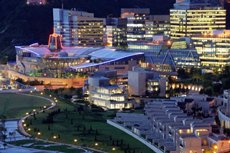 State-of-the-art facilities at Hong Kong Cyberport attract tech-related start-ups State-of-the-art facilities at Hong Kong Cyberport attract tech-related start-ups
Setting up a new company can be a daunting business. But for entrepreneurs thinking of taking the plunge, Hong Kong is about as welcoming an environment as they'll find. That's partly because of the ease of setting up and running a company in the city, and the broad range of reasonably priced professional services available. But it's also due to the wealth of information, advice, even financial help provided by the government and local trade bodies.
Hong Kong's business-friendly environment makes setting up a company a cinch, according to one local entrepreneur. "The whole process was pretty painless," says Jimmy Gao, founder of QTrack.hk. Set up last year, the company sells its own proprietary customer-management system aimed, initially, at the restaurant industry. "It was all up and running in five to six days."
Mike Ko, founder of time-based online event-searching business timable, adds that straightforward procedures for business registration, taxation and audit meant he didn’t need fulltime professional help to set up his company.
One-Stop Shop
But more important still is the raft of services available specifically for start-up businesses. The Hong Kong Trade Development Council's (HKTDC) Entrepreneur Day, 20-21 May, is just one of the many forums in which new and potential business owners can get information and take advantage of networking opportunities.
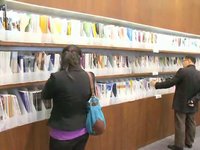 Video Presentation (5 minutes) http://www.vimeo.com/23635771 Video Presentation (5 minutes) http://www.vimeo.com/23635771
Another is the HKTDC's SME Resource Centre, which was launched last September. Located in the Hong Kong Convention and Exhibition Centre, the 15,000 square-feet venue is a "one-stop resource centre, especially for start-ups," said the HKTDC's Senior Manager, Customer Service, Katherine Lo. It houses a trade library of 8,000 business publications and reference material, including business directories, market reports and trade-fair catalogues. It also offers access to Kompass and other electronic business databases, which are usually out of the financial reach of start-ups.
The SME Centre also features meeting rooms and other facilities available to small businesses. It offers workshops on a range of themes, including entrepreneurship and doing business in China. SMEs can also take advantage of the centre’s advisory services, one focusing on general SME issues, the other on the Chinese mainland. Government officials from Guangdong, Beijing, Shanghai and Fujian are based in its offices, and meetings can be arranged as part of the service.
Saving Time and Money
Cedric Delzenne, who used the SME Resource Centre extensively to launch his online fashion retail business Shop des Créateurs, last October, says he found the China business information particularly helpful.
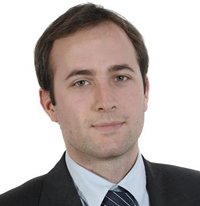
Cedric Delzenne used the HKTDC SME Resource Centre extensively to launch his online fashion retail business, Shop des Créateurs, last October
"Creating my own company was something I'd had in mind for a long time, and when I moved to Hong Kong, I quickly realised it was the perfect place to do this," says Mr Delzenne, a former management consultant in his native France. "Because of the people I was able to meet, it was easy to concentrate on the business and make it grow rather than spending time on administration. I was even able to apply for an investment visa myself," he says.
"Being in Hong Kong didn’t only save time, it also saved money, because I had a limited budget for the launch, and I was able to spend it on a top-notch website rather than on lawyers and so on. Hong Kong is also a very good place for web developers. I was very pleased with what I got; for the same site in Europe, I think I'd have had to pay twice as much."
He adds that the French Chamber of Commerce also helped to connect him with useful contacts through events, something that's common at the city's many other national chambers. There are also a number of
organizations that cater specifically to start-ups, providing everything from networking get-togethers to office space, including BootHK and StartUpshk, which has been running the popular Start-Up Saturday events (now moved to Mondays).
Incubating Business
The Hong Kong Government's Trade and Industry Department also provides small businesses, including start-ups, with free business information and consultation services. The Support and Consultation Centre for SMEs offers the services in collaboration with 100 industrial and trade organisations, professional bodies and other government departments.
Located in Kowloon, the centre offers a start-up information service, including requirements on government licences and permits, methodology in drafting business plans, market information, costing and expenditure analyses. There's also a business advisory service for prospective entrepreneurs and free SME seminars and workshops.
For IT-related start-ups, Hong Kong Cyberport provides low-cost grade-A office space, and high-bandwidth Internet access. Its Digital Media Centre includes media production facilities for small companies. It also provides funding: unconditional grants of HK$100,000 to entrepreneurs. "All you need is a good business idea," says Cyberport Chief Technology officer David Chung.
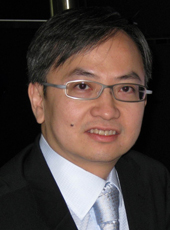 David Chung, Chief Technology officer, Hong Kong Cyberport David Chung, Chief Technology officer, Hong Kong Cyberport
Its incubation program, which is currently helping about 50 companies, can provide additional subsidies of up to HK$300,000, plus two years' free rent. Companies receiving support from the
program don't have to base themselves at Cyberport. There's a similar incubation programme on offer at the Hong Kong Science and Technology Parks.
Cyberport is also setting up an office in Shanghai, and offering office space there as part of a soft-landing program for Hong Kong businesses looking to tackle the mainland market.
In addition, the Vocational Training Council runs a Business Start-up Centre to provide office facilities and administrative assistance to new businesses, while the Hong Kong Productivity Council (HKPC) runs several programs aimed at helping small businesses improve their efficiency. "For entrepreneurs, they have to learn how to eliminate waste, control expenses and cut unnecessary costs," says Ricky Leung, Principal Consultant in the HKPC's business management division. The body also helps business with branding, by matching new businesses with royalty-free work from local designers. "For entrepreneurs, it's quite difficult to put a lot of money into advertising and promotion," says Mr Leung.
May 11 2011
America Gains From Chinese Investment - These companies, like the Japanese before, are creating jobs and growth in the U.S.
By Daniel Rosen and Thilo Hanemann
Traditional macroeconomic issues usually dominate U.S.-China economic conferences such as the Strategic and Economic Dialogue (the "S&ED") held in Washington this week: exchange rates, trade disputes, market access and the like. But beyond the familiar laundry list, a new topic has burst on the scene: direct investment by Chinese firms in the United States.
Between now and 2020, we expect Chinese firms to deploy between $1 trillion and $2 trillion of direct investments abroad. Americans could be a major beneficiary of this—if anti-China sentiment in Washington and around the country does not bring down the curtain just as the show is starting.
China started investing overseas in a big way in the mid-2000s, almost entirely in the natural resources sector. Chinese firms made some attempts to invest in the U.S.—notably CNOOC's failed bid for oil company Unocal in 2005—but through 2008, such forays were few and far between. Since 2009 that story has begun to change. In a new study, we find that over the past two years direct investment expenses by Chinese firms in America have grown more than 130% a year.
In 2010 alone, Chinese firms spent more than $5 billion in America on a combination of 25 "greenfield" projects built from scratch and 34 acquisitions of existing companies. While China still accounts for only a tiny share of total foreign direct investment in the U.S., Chinese firms are today invested in at least 35 of 50 states and an upward trend is clearly underway.
It is not politics but profit that is driving the vast majority of Chinese firms to invest in the U.S. With over-investment leading to excess capacity in much of industrial China, Chinese companies increasingly see greater profit opportunities across the Pacific.
The shift of China's growth model toward domestic consumption and increasingly intense competition at home forces Chinese firms to upgrade their technology; capture the higher levels of the value chain they traditionally conceded to foreign partners; and augment their managerial skills and staff base to remain globally competitive. Investments abroad are a way to do all this.
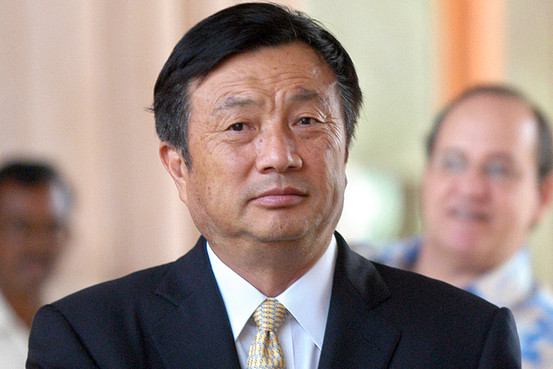
Ren Zhengfei, CEO and managing director of Huawei Technologies.
China's gain could also be America's gain, as demonstrated by an earlier round of Asian investments: Japanese firms had a difficult start in the U.S. in the 1980s, as they were greeted with skepticism and fear. Today, Japanese firms employ almost 700,000 Americans with an annual payroll of nearly $50 billion.
Yet, as with Japan, the high growth of Chinese investment—albeit from a tiny base—is already sparking a political firestorm in the U.S. Recent controversies have flared around various investments by telecommunications equipment supplier Huawei, as well as
steel maker Anshan in a Mississippi rebar plant, and the acquisition of small aircraft maker Cirrus by a Chinese state-owned company.
There is a clear danger that anti-China reactions will only grow louder as the numbers increase, and even result in more restrictive terms for firms from China. Such a closed-door policy would be bad for Chinese firms. It would also be tragic for American communities to lose the jobs, innovation and tax revenue additional investment dollars could create.
Preventing a bilateral investment shut-down will require effort by both sides. In America, clearer thinking on national-security issues is important. The inter-agency Committee on Foreign Investment in the United States review process is generally working well to vet deals for security threats, but a hyperbolic tone emanating from Congress and others on this issue is toxic. Congress and the White House together must send a clear bipartisan signal that Chinese investment is welcome in the U.S., lest Chinese investors take their checkbooks to less hot-headed countries.
China also has ways to help its cause. It's little wonder deals get bogged down in Washington, given the non-transparent, politically influenced nature of many Chinese companies. Improving governance within companies will help this. So will regulatory changes to brighten the line between government and companies. For instance, a clearer separation between regulators and the firms they oversee would send a good signal.
China must recognize that its restrictions on American direct investment affect the political mood in Washington. Beijing maintains barriers to foreign investors in many sectors, such as telecommunications or financial services, and U.S. negotiators are working to remove those hurdles. China can help sustain openness to Chinese investment abroad by continuing to reform its inward investment rules.
That said, however, it is critical that Washington not play a tit-for-tat game with Chinese investment. America has tried to keep politics out of the foreign-investment screening process not to do foreigners a favor, but because openness to investment is good for American firms, workers, communities and the economy as a whole.
That logic applied to Japan in the 1980s, and it holds with China today. Now would be a terrible time for the U.S. to drop its own successful principle. If we do, we risk Chinese firms setting up plants in Ontario instead of Michigan, or Juarez instead of El Paso.
Messrs. Rosen and Hanemann are partners at the Rhodium Group, a New York-based advisory firm, and authors of the new study: "An American Open Door? Maximizing Benefits from Chinese Direct Investment in the U.S."
May 7 2011
Pearl perch set to make a splash By Ada Lee
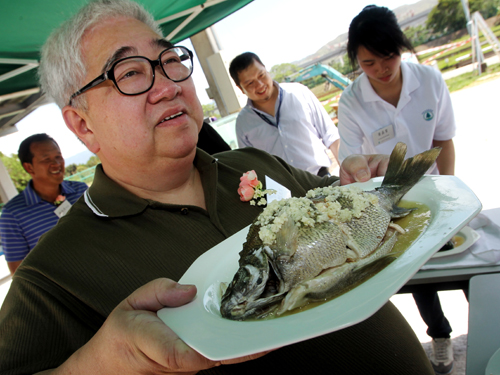 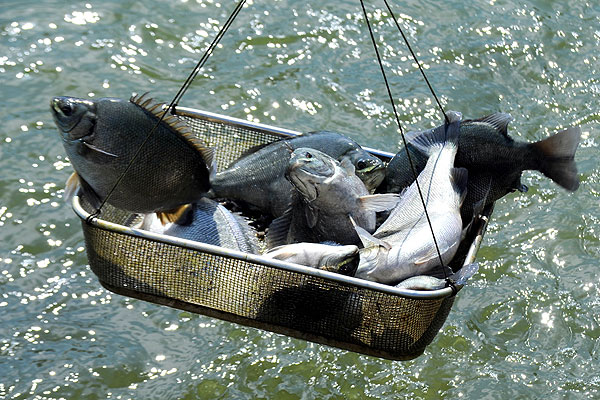
Food critic Leung Man-to gets ready to taste a pearl perch at a fisheries department event yesterday in Yuen Long.
A round-bellied fish with a small head and black spots is making a return to Hong Kong's supermarkets, but anyone who wants one will have to pay a relatively high price.
The pearl perch, with properties said to promote growth and help stave off cancer, will cost HK$60
(US$7.75) to HK$70 (US$9.03) a catty (600 grams), double the cost of the popular grey mullet.
Native to Australia, it was first brought to Hong Kong from Queensland nine years ago, but the high cost of its fry and difficulties in breeding it discouraged some fish farms, and supplies have been inconsistent.
But a breakthrough last year made it possible to provide a stable supply to the market in the coming years, the Agriculture, Fisheries and Conservation Department said.
The aim is to bring 300,000 of the freshwater species to the market each year starting with the first batch of 3,000 in mid-May, and the Fish Marketing Organisation expects them to sell well despite the price.
"Even when the supply was unstable, we got calls from the public asking when the fish would be available again," the organisation's market manager, Henry Yip Hin-wai, said.
The fish is high in Omega-3 fatty acids, which are essential to normal growth and, according to some studies, can help reduce prostate tumour growth.
The department first bred the fish successfully in 2007 in co-operation with several fish farms, but many were eaten by birds and other fish before they reached marketable size.
John Lee Hong, who has farmed pearl perch for a couple of years, said they cost 10 times more to rear than other freshwater varieties, and farmers were still looking for ways to reduce the costs. He said they ate a lot and were picky about their food.
"In the two weeks after birth, they need to be fed constantly for 18 hours a day, and they only eat live food," Lee said.
The fish also had to be taken care of round the clock in the first few weeks, because they would kill each other even when they were only two days old.
But they grow quickly. While a grey mullet needs a year to grow to a marketable size of 600 grams, a pearl perch needs only half that, fish farmer Lai Loi-chau said.
Lai said about a dozen farms were now growing the fish and about 100 were needed to provide a stable supply. "We can achieve that by the end of the year," he said.
May 3 2011
World's highest hotel opens in Hong Kong
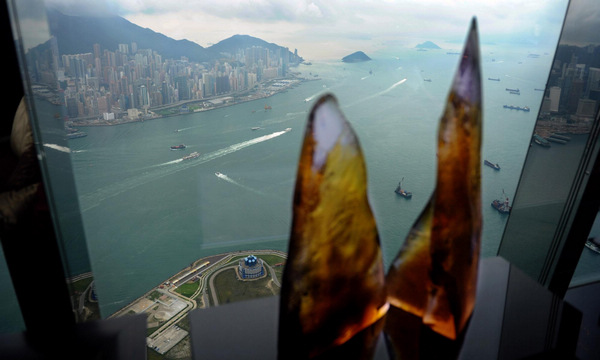 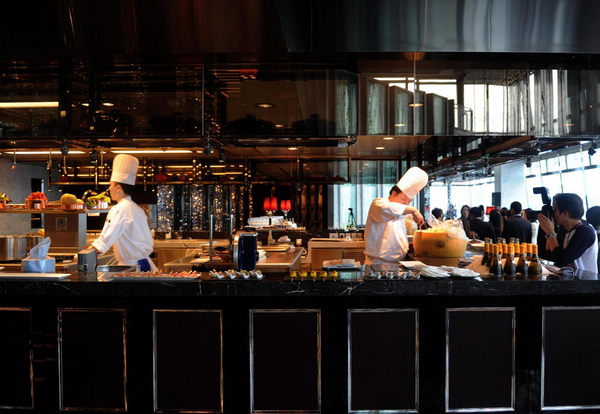
The Ritz-Carlton Hong Kong, a luxurious hotel located on the top of the city's tallest building, held its opening ceremony on Tuesday, claiming its title as the world's highest hotel.
The 312-room hotel, occupying the 102 to 118 floors of International Commerce Center (ICC), a 490-meter high building developed by Sun Hung Kai, the largest property developer in the city, is the 75th in a series of Ritz-Carlton's globally growing luxury hotels, and the 16th in Asia.
The opening of the Kowloon-based hotel marks the comeback of the Ritz-Carlton in Hong Kong, after the group closed operations in its former location in the Central in February of 2008.
With the return of the Ritz-Carlton, guests and visitors could have a bird's-eye view of the stunning city scenes, said John Tsang, financial secretary of the city government, while addressing in the opening ceremony.
Room price of the hotel starts from 6,000 HK dollars ($771. 3) per night for a deluxe suite, while the presidential suite will cost about 100,000 HK dollars per night, the hotel said.
The Ritz-Carlton Hotel Company is currently running 7 hotels in the Chinese mainland cities of Beijing, Shanghai, Guangzhou, Shenzhen and Sanya.
ICC, the 118-floor skyscraper sitting in West Kowloon, was completed in 2010. As the fourth highest building in the world, ICC contains a observation deck on the 100th floor, called "Sky 100", which opened to the public in April this year.
May 2 2011
Scourge of sharks not just Hong Kong's soup treat By Zuleika Sedgley
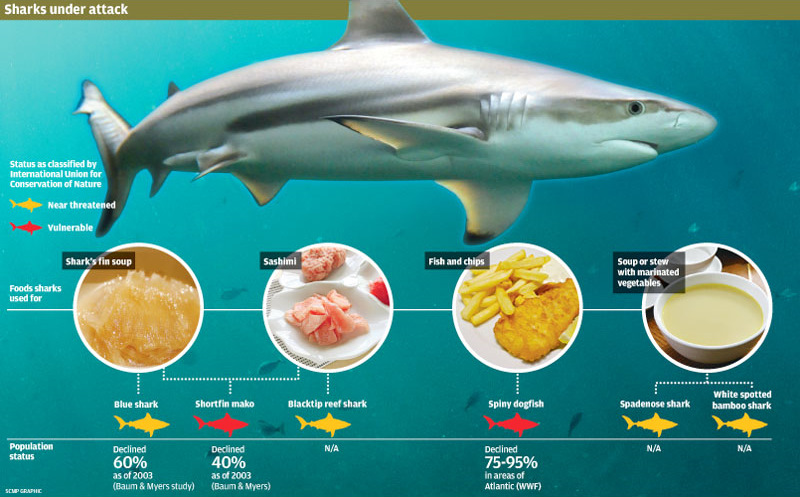
The Chinese love of shark's fin soup gets all the blame. But fish and chips in Britain and Australia, shark sashimi in Japan, and shark-based products in Taiwan contribute significantly to depletion of shark populations, diverse studies show.
Greenpeace estimates 100 million sharks are killed every year, 35 million to 70 million of them for their fins. While this confirms the impact of demand for shark fin, a lot of sharks end up elsewhere - in culturally diverse kitchens cooking for diners often unaware of what they are eating.
Take the English meal fish and chips. Although cod is the species most often used, a popular alternative is called skate or rock salmon. These names keep many diners ignorant of the fact they are eating spiny dogfish shark, a species that since 2006 has been listed as vulnerable on the International Union for Conservation of Nature Red List for Endangered Species.
The extraordinary demand for this species of small shark - Europe consumes 20,000 tonnes a year, with the lion's share eaten by Britain - has seen the northeast Atlantic population decrease by 95 per cent.
Britain has passed its taste for dogfish fish and chips to many former colonies. In the Australian state of Victoria, dogfish is the most common species used for fish and chips, hiding behind a different name, flake.
Sharks are used in other dishes elsewhere. A 1997 report by the wildlife trade monitoring network Traffic says shark meat is used in Taiwan to produce minced fish products, including fish balls, fish cakes, fish sausages, tempura and artificial crab.
This is also the case in Hong Kong, according to Stan Shea Kwok-ho, project co-ordinator for Bloom HK, a conservation group. "I spoke to local fish ball producers and they said they sometimes used the meat of sharks that are fished locally for fish balls because it is inexpensive," he said.
"The meat of these sharks is also boiled to make soup and is stewed with marinated vegetables."
In Japan, diners indulge in same no sashimi, thinly sliced raw shortfin mako or blacktip reef sharks - both on the IUCN red list, respectively, as vulnerable and near threatened.
Recent education campaigns to discourage diners from eating shark fin have begun to change attitudes among Chinese. Some, like local activist Rachel Tang Hoi-yan, now even reject the idea of shark's fin soup as part of Chinese culture.
Tang, whose Facebook page "Say no to shark fin" has more than 8,000 followers, most of whom are Chinese, changed her thinking on the delicacy after learning of the finning industry.
"I don't think that eating shark fin has anything to do with Chinese culture, it is all about status," she said. "Traditional Chinese culture does not support it. Confucianism encouraged benevolence and to live within your means, it rejected extravagance. Similarly Taoism instructed us to go with the flow of nature and not against it. What does either have to do with eating shark fin?"
April 28 2011
Hong Kong's Polytechnic University (PolyU) US$200 million training hotel ready to open its doors
By Amy Nip
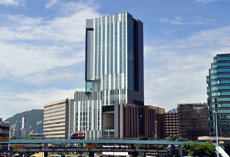  
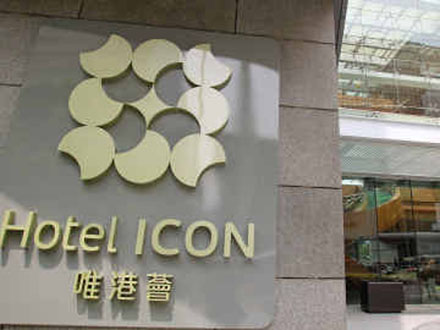
A controversial Polytechnic University (PolyU) training hotel that was given a multimillion dollar discount on land use transfer fees will open to guests tomorrow - and its rates will be similar to conventional hotels nearby.
The redeveloped former university staff quarters site in Tsim Sha Tsui boasts a 28-storey complex comprising three parts: a school of hotel and tourism management that takes up the first nine levels, housing for some university staff and the Hotel Icon.
Some hoteliers voiced concerns about unfair competition after the government charged the university a nominal land use transfer fee of HK$1,000 instead of the estimated market rate of up to HK$300 (US$38.71) million.
But PolyU executive vice-president Nicholas Yang played down the competition concerns yesterday, saying the hotel was not designed to compete, but to train people for the industry. Macau has a similar training facility open to the public for many years.
Rates for the HK$850 (US$109.68) million hotel's 262 rooms would be close to market levels, he said. "We don't want to undercharge," he said.
A standard room will cost about HK$1,900 (US$245) from tomorrow. Hotel Nikko, which is near Hotel Icon, charged HK$2,090
(US$270) for a standard room yesterday, while the Kowloon Shangri-La Hotel charged
HK$2,700 (US$348).
The complex cost a total of HK$1.3 billion (US$168 million) to build, half of it contributed by the university and the remainder funded by a bank loan. Unlike a hotel set up in Sha Tin in a joint project by Chinese University and Hyatt Regency, PolyU's hotel is not funded by any hotel brands.
"We would like to train students who are flexible enough to serve any hotels ... Being a non-profit organisation, any surplus will be invested back to education," Yang said.
As well as 262 rooms, the hotel has two restaurants, a lounge, a spa and a swimming pool. Yang expected the hotel to have a positive cash flow in two to five years and to break even on the overall project in 25 years.
Professor Kaye Chon Kye-sung, dean of the school of hotel and tourism management, said the hotel was targeting customers "who would not mind trying something fresh". Teaching hospitals were popular because they guaranteed better service and management, an approach Hotel Icon would pursue, Chon said.
With the limited number of hotel rooms, the teaching hotel would position itself as a boutique hotel offering "value for money", he said.
Chon also expected the hotel to ride on the booming tourism industry; hotels are 95 per cent occupied in peak seasons.
April 27 2011
Keeping Supply Chains Open
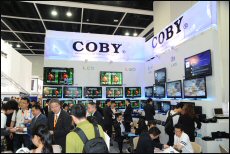
Demand for the latest electronic products is as strong as ever as highlighted by the record turnout at this month’s HKTDC Hong Kong Electronics Fair
As thousands of exhibitors and buyers converged in Hong Kong for the HKTDC Spring Electronics Fair earlier this month, the impact of last month’s devastating earthquake in Japan continued to reverberate within the industry. Japan is a major supplier of electronics parts and components, accounting for about 20 per cent of the global supply semiconductors.
"We are not affected at the moment, but there will be some indirect impact from the earthquake,” said Eddie Ng, President of Speed Digital Ltd. The Hong Kong-based multimedia, audio-visual manufacturer sources some material in Japan for their products.
"For example, we've seen prices surge for some internal memory storage camera components in the first week after the earthquake. But since then, prices have been declining because everybody knows there are other places to go," Mr Ng said, noting that his company has identified places such as Taiwan and South Korea as places to source for material.
Korean electronics giant Samsung, likewise, believes there will be no adverse impact on its business. “We have very strong supplementary management and all key division and core technology are located in our headquarters in South Korea,” said Alex Chung, Chief Operating Officer of Samsung Electronics Hong Kong. “A lot of our manufacturing is dispersed in the United States, Europe, China and Southeast Asia, so I believe the impact for us is limited.”
Global Supply Chain
 watch the 5 minutes short video http://www.vimeo.com/22964333 watch the 5 minutes short video http://www.vimeo.com/22964333
For Japan, though, economists expect the country’s economic growth could fall between two to three per cent, with the full effects of the disaster to be felt in the second quarter. The impact of rolling power shortages and damaged factories, as well as crippled domestic supply chains, are forecast to cut Japan’s industrial production for March by at least 10 per cent.
In its initial assessment of the impact of Japan’s earthquake to the global supply chain, a Hong Kong Trade Development Council study forecasts that a protracted economic disruption would overshadow global economic growth and international trade, especially in light of Japan’s significant role in the global supply chain.
A major supplier of electronics parts and components, Japan produces about 20 per cent of the global supply of semiconductors, more than 40 per cent of the worldwide NAND flash memory used in many laptops, smartphones and iPad. NAND supplier Toshiba alone produces about one-third of the global supply. While production has been affected by power shortages and other factors, many of the production facilities are not located in the most severely damaged areas. The overall supply, therefore, is expected to be affected only modestly once the situation returns to normal.

Aftershocks from Japan’s 9.0 magnitude quake last month are expected to affect the global
supply chain in the second quarter
Hong Kong companies, as well as manufacturers in neighboring economies including South Korea, Taiwan and the Chinese mainland, depend on Japanese supplies such as LCD glass, chip equipment, silicon wafers and other items, which are used to produce semiconductors and panel displays. The impact on those companies will become acute once their inventories run out. Other affected items include optical films, laser diodes, and lithium-ion rechargeable batteries. The watch and clock industry stands to be affected as well as Japan is a key supplier of watch movements.
Based on feedback from Hong Kong companies in various industries, parts and components supply for high-end electronics, as well as toys and watches requiring electronic input, will be affected in varying degrees. Although it may not be easy to find identical supplies from other sources, some commonly used parts and components alternatives may be found, but will require more time and money.
Shift from Consumer to Capital Goods

Business as usual: Christopher Fellner, Filter Products Group, Mitsubishi Paper Mills Ltd, which was among several Japanese companies that exhibited at the HKTDC Hong Kong Electronics Fair earlier this month
With reconstruction estimated by the Japanese government to cost no less than US$300 billion over the next few years, Japan’s demand composition will likely shift in favour of capital goods, which will come at the expense of consumer goods.
Hong Kong companies expect Japanese importers to slash the size of buying orders and to delay procurement as they assess the quake’s effect on domestic demand. Demand for imported capital goods and raw materials may also be cut due to disruptions on business and manufacturing activities, but will increase once massive reconstruction gets underway.
Production disruptions in Japan will negatively affect Hong Kong’s re-export business over the next few months, given the uncertainty over electricity supply and interruptions to the supply chain, in particular parts and components. This means that many factories may not be able to quickly resume production to their normal capacity. Hong Kong's exports of consumer goods to the market would be most affected, followed by imports of electronic parts and components from Japan for re-exports.
Still, Japanese suppliers are intent on keeping the supply chains open. At least half a dozen Japanese exhibitors participated in this month’s Electronics Fair, including Mitsubishi Paper Mills Ltd. The paper manufacturer sustained minor damage in three of its factories in Japan. The worst hit, in Aomori Prefecture, is expected to be back in operation as early as the end of this month.
“We’re going back to full production step by step,” said Christopher Fellner, who’s with Mitsubishi’s paper filter products division. “It’s pretty much business as usual. Our filter papers are manufactured in our factory in Shenzhen. For other paper products, Mr Fellner said there’s still plenty of stock, “so we don’t expect any shortage.”
Mr Fellner pointed out that despite the tragedy, it was important to carry on with operations. “We’re not that hard affected by the earthquake, so we need to assure our stakeholders, our customers that everything is business as usual and we’re happy to be in Hong Kong.”
April 23 2011
Sun Yat-sen tours woo 'golden week' visitors to Hong Kong
By Amy Nip
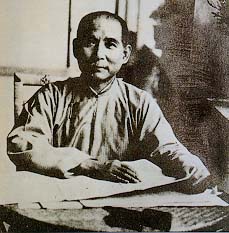
As high-rolling Hainan province tempts tourists with tax-free shopping, Hong Kong has gone highbrow in the battle for visitors by offering a Dr Sun Yat-sen tour.
As part of this year's celebrations of the 100th anniversary of the 1911 revolution, the Tourism Board is touting themed tours retracing the steps of the founding father of modern China for the upcoming "golden week" national holiday.
Sun was educated in Hong Kong and described the city as his "intellectual birthplace".
Tourists can choose between stops including the Sun Yat-sen Historical Trail, Dr Sun Yat-sen Museum in Central and Sun Yat-sen Memorial Park in Sheung Wan.
Or they can enjoy the exhibition "Centenary of China's 1911 Revolution" at the Museum of History in Tsim Sha Tsui before enjoying a night's stay on a Star Cruises (SEHK: 0678) ship.
Some 300,000 promotional text messages will be sent to mobile phone users in southern China.
The board expects an increase of up to 15 per cent in mainland visitors for the May 1 to 3 holiday. About 80,000 people are expected to visit each day, Tourism Board executive director Anthony Lau Chun-hon said. This year so far, visitor numbers have increased by 14 per cent to 11.3 million. The number of mainland visitors rose 19 per cent to 7.3 million.
Hainan province started a pilot tax-rebate programme yesterday, attracting over 15,000 customers to Sanya's only tax-free store. However, Lau said it was unlikely to have a big impact on Hong Kong.
"Hainan appeals to mainland tourists as they don't need any permits to go there. However, the range of products in the tax-free store is limited," Lau said.
The fall in the number of Japanese visitors since the earthquake in the country has also started to diminish, Lau said, as business travellers stuck to their plans.
It was too early to say whether Hong Kong would pick up visitors from elsewhere who had planned to go to Japan, Lau said.
A beautiful relationship - The growing ties between Hong Kong and Italy revolve around a shared sense of style
By Stewart Hawkins
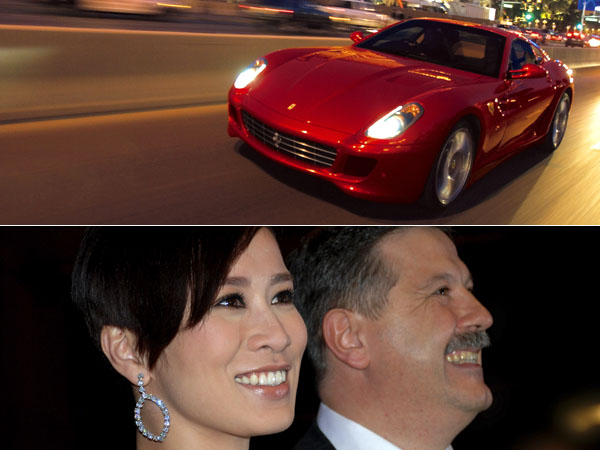
The latest Ferrari 599. (Below): Italian Trade Commissioner Romano Baruzzi with Charmine Sheh (who was draped in approximately HK$10 million worth of jewels
by Gorgoglione) at the Hong Kong International Jewellery Show.
Italian Trade Commissioner to Hong Kong and Macau, Romano Baruzzi, won't allow his guests to be served a double espresso. "You can have a single," he says, "then another one if you like after that - but you must drink it hot - don't let it get cold."
And this is at an 11am business meeting in his office in the Central Plaza tower with its stunning view of the harbour. You can only imagine the exacting standards he sets for coffee consumption after dinner.
The weekend before our meeting the affable, gregarious Baruzzi hosted a fashion parade and dinner at the Hong Kong Convention and Exhibition centre celebrating the fact 130 Italian companies were exhibiting at the Hong Kong International Jewellery Show and that Italy was a Partner Country in the event.
It was a glittering affair both literally - as work by the Italian exhibitors was displayed on catwalk models dressed in simple black and white dresses - and figuratively, with plenty of high profile guests including actor and former Ms Hong Kong Charmine Sheh.
After the show Baruzzi made the most of photo opportunities with Sheh (who was draped in approximately HK$10 million worth of jewels by Gorgoglione) and the guests chowed down on an array of Italian delicacies.
A certain cynicism can be prevalent at many of these events. There is no shortage of high-end entertainment being proffered in this city, but the enthusiasm of this A-list crowd for the goods on offer was unmistakable. And this was a standing buffet which by many comparisons can be a rather modest form of hospitality.
What happened at this event serves to illustrate the certain love affair this city has developed with Italian culture (a culture whose refinement, exactitude, and seemingly ironic love of La Dolce Vita, is demonstrated by Baruzzi's simple passion for drinking coffee PROPERLY) which began more than two decades ago.
It's a relationship which has spawned billions of dollars in trade and exponential growth in that trade in recent years.
But while the numbers tell the story they also reveal a tale of two Chinas.
Italy is a net importer from the PRC but a net exporter to the Hong Kong SAR.
In 2010 the trade interchange between China and Italy was more than US$40 billion. Exports from Italy to China were approximately US$11 billion.
"If you consider China the balance (of trade) is negative for our country," Baruzzi said.
"If you consider the export from Italy to Hong Kong the situation is different.
"For us this is extremely important. If you check the (export figure) from Italy to Hong Kong in 2010 (it) was about US$5.4 billion which equals around 50 per cent of the total export from Italy to China.
"The situation is different in Hong Kong because Hong Kong can buy a lot for re-export. Most of the products from Italy are bought for re-export to China and other countries around HK."
This export figure added to the fact Italy imported US$3.6 billion from Hong Kong in the past year makes it the third biggest European trader with Hong Kong after Germany and the UK.
And the growth in this trade has been extraordinary. Exports from Italy to Hong Kong increased 31 per cent since 2009.

It probably comes as little surprise to anyone who follows trends in this town that more than 60 percent of the value of the Italian exports to the SAR are in the luxury goods sector - apparel, jewellery (US$530 million last year) and footwear in the main followed fairly closely by luxury motor cars and high end design.
From Italy to China 45 per cent of the value is in electrical machinery. There is also considerable trade being done in the automotive sector but mainly at the mass market end - the relationship with Fiat being a case in point. Baruzzi said the Italians are also making inroads into bio and nano technology, green technologies and the aerospace sector.
There are more than 2,300 Italian companies doing business with China but still many Italian companies have their headquarters here in Hong Kong he said. "Hong Kong is a safe place to do business," he said. "In Hong Kong it is easier to talk in English and forge links with a local company and, through them, do business in China."
But he conceded the bigger Italian companies are starting to deal directly with China. The proportion of companies based in Hong Kong is "interesting when you consider Hong Kong is only a dot in the world market whereas China is a very big country," Baruzzi said.
He maintains many mainlanders prefer to come to Hong Kong to shop.
One of the reasons is the lower tax here but also he says the likelihood of being sold fake goods is much less.
"Last year HK had 30 million visitors - 80 per cent came from the mainland," he said.
And it's the mainland where much of the future growth will come from for his country.
With economic growth in Italy and Europe tracing not much more than zero per cent the Chinese market with its strong and rapid development is a tempting place.
"We are only at the beginning of the potential of what that market can absorb and because now (Chinese) people are starting to travel a lot, they know more and are asking to have more luxury products, not only from Italy," he said.
In China the majority of Italian companies are based in the Beijing, Shanghai and Guangdong areas. Recent growth in trade has meant many companies are also looking at second and third tier cities.
"In 2010 we had 60 per cent more Italian companies with investment in China when compared with 2000," he said.
"This generated more than 60,000 jobs and more than €5 billion in turn over."
To its older markets - Europe and North America - Italy traditionally exported food but when the country started to look east, new opportunities had to be found.
For instance seven per cent of the total production of Ferrari is sold in Asia.
Baruzzi points out it's probably not possible to sell any more because of the 24 to 36 month wait list to take delivery of a new vehicle. But he relates a telling anecdote.
"When we launched the last Ferrari car here in Hong Kong it was 2008 (and the city) was in full financial crisis," he said.
"There were 18 people round the table and except for me and the Consul General all the local people - 16 of them - bought the Ferrari car. And they had to wait 36 months."
When asked how he thinks the Italian companies are faring against their traditional rivals in the Hong Kong luxury goods market - the French - Baruzzi is diplomatic but uncompromising.
"There is space for everyone in this market," he said.
"But when you're talking luxury products (particularly in fashion) I think in the minds of the local people ... I think they think 'Italy'."
April 20 2011
Insuring the Future
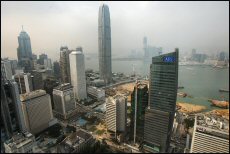 Expansion in Hong Kong enables global insurers to tap potential in the Asian region Expansion in Hong Kong enables global insurers to tap potential in the Asian region
Marsh, one of the world’s leading insurance brokers, is marching to the Hong Kong beat, opening an office in the city last year. The July 2010 opening of Bowring Marsh, the company’s specialist international placement broker, expanded the firm’s footprint in Asia at the coalface of market demand.
“Greater China is a significant focus for Marsh, and the rapid development of insurance markets in the region makes it a prime location to access capacity for inward international business,” said Nick Bacon, CEO of Bowring Marsh. “We are able to meet that growing demand more effectively, and develop specialist product offerings from the Hong Kong market to support clients across Asia. It also enables us to serve the growing needs of our Marsh retail operations, now the largest in Hong Kong, after the acquisition of HSBC Insurance Brokers Ltd.”
Specializing in property, earthquake, business interruption and casualty risks, Bowring Marsh’s Hong Kong office provides placement support for business coming out of Greater China and access to international markets for global Marsh clients, especially from the Pacific and Middle East regions.
Untapped Potential
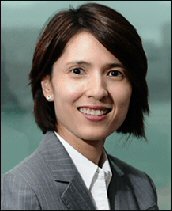 Karen Lieu, CEO, Marsh Hong Kong Karen Lieu, CEO, Marsh Hong Kong
In the Asian section of its 2011 Global Insurance Market Report, Marsh notes that Hong Kong has emerged as a hub for an industry ripe for growth.
“Local and foreign insurers are competing vigorously to capture market share, as more businesses understand the importance of risk management and look to buy insurance,” said Karen Lieu, CEO of Marsh’s Hong Kong operations. “The market in general is unsaturated and untapped, leaving plenty of room for insurers to grow their business.”
She added that with Asia representing “a powerful alternative for insurance placement,” hubs such as Hong Kong are seeing increasing inward business from the West. “This has created an interesting dynamic tension between Asian markets and traditional European markets, once again benefiting insurance buyers.”
A Growing Force
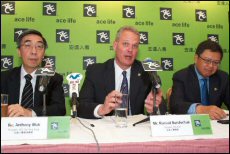 Officially launching the ACE Life Hong Kong operation are (left to right): Anthony Mak, President, ACE Life Hong Kong; Russell Bundschuh, President, ACE Life; and Saloon Tham, Regional President-Asia Pacific, ACE Life Officially launching the ACE Life Hong Kong operation are (left to right): Anthony Mak, President, ACE Life Hong Kong; Russell Bundschuh, President, ACE Life; and Saloon Tham, Regional President-Asia Pacific, ACE Life
Inward investors using the Hong Kong and Greater China insurance market include ACE Life, part of the New York-listed ACE Group of insurance and reinsurance companies. This month, ACE launched its newest operation in Hong Kong via its acquisition of New York Life Hong Kong.
Anthony Mak, President, ACE Life Hong Kong, said the life insurance specialist intends to expand its agency force from the current 1,000 agents to 2,500 in the next three to five years. He said the Asia-Pacific has been identified as a major strategic growth region for the ACE Group, “and Hong Kong is one of our key growth markets.”
Saloon Tham, Regional President of ACE Life in Asia-Pacific, said it was important to seize promising growth opportunities for the expanding ACE Life franchise in the Asia-Pacific, which currently encompasses the Chinese mainland, Taiwan, Vietnam, Thailand and Indonesia. “ACE Life Hong Kong, working with our existing general insurance operations, ACE Insurance, will enhance our competitive edge and strengthen ACE’s overall ability to meet the local market’s insurance needs more effectively.”
Strategic Step
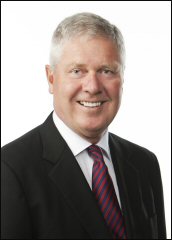 Brian Mitchell, Chairman, Bravura Solutions Brian Mitchell, Chairman, Bravura Solutions
Bravura Solutions Ltd of Australia has recently relocated to an upgraded office in Hong Kong to support continued growth in the life insurance, pensions and funds management markets in Asia. “Strengthening our operations in Hong Kong is an important step in our global development and will enable us to drive new business in Asia,” said Chairman Brian Mitchell.
Bravura supplies its Sonata-branded software solutions to life insurance, pension and wealth-management companies. With Hong Kong experiencing dramatic growth in these industries, Mr Mitchell believes there is market demand for solutions that will help firms face increasing competition and pressure to reduce costs, improve efficiency and increase their speed to market while providing enhanced services.
“As the market slowly recovers from the recent global financial crisis, we are pleased to see increasing levels of interest in the region,” he said. “This year, we have already added sales headcount in Hong Kong and expect to add more in the balance of the year to support opportunities in the region, along with our growing Asian client base. We are also seeing continued growth and interest in transfer agency services in the region.”
Zurich’s Hong Kong Team
Zurich Insurance Group (Hong Kong) has expanded its executive team to drive expansion in Asia.
"In December, we announced that Dan Bardin was joining Zurich as CEO Global Life Asia-Pacific. We also said that we would make further investments in a top team to drive our ambitions in Asia,” said David Sims, CEO Global Life Emerging Markets. “It is just four months later, and we already have a strong Asia-Pacific regional team in place, as well as a talented team in Hong Kong. This is another milestone that underlines Zurich's commitment to growing its business in the Asia-Pacific."
April 18 2011
Hong Kong offers a 'safe haven' after Japan earthquake By Phyllis Tsang
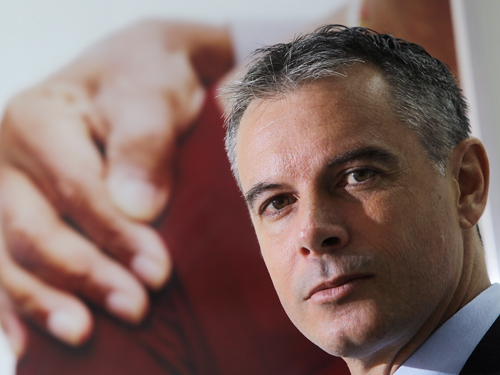 International SOS director Mick Sharp International SOS director Mick Sharp
Hong Kong has served as a "safe haven" for foreign companies who pulled their staff from Japan following the March 11 earthquake and tsunami, according to an international crisis response company.
International SOS helped to relocate more than 300 people from Japan to Hong Kong, including 80 on two flights it had chartered, one for a luxury goods company and one for a university.
Other companies that considered getting their people out of Japan included those in the financial services industry, telecommunications, media, and the accounting and legal professions.
Mick Sharp, International SOS's regional security director, said its clients were desperate for reliable information in the immediate aftermath of the disasters, and the subsequent leak of radiation from the damaged nuclear reactors at Fukushima.
He said his company had received more than 2,000 inquiries from clients around the world asking for information and requesting assistance, particularly after the crisis at Fukushima, north of Tokyo.
"They want reliable information - what is the scale of the threat? Is it likely to get worse," he said.
Despite receiving professional advice that evacuation from Tokyo was not required after the quake, some firms still decided to arrange for their staff to leave Japan.
He said Hong Kong had three qualities that had made it a suitable safe haven. "Firstly, it is far away from the acute threat; secondly, the range of flight options available; and thirdly, which is the most important, the visa requirements."
The Hong Kong Immigration Department, which reported a trend of professionals relocating to Hong Kong from Japan after March 11, set up a fast-track system to approve visa applications.
The department said that between March 17 and April 11 it had received 310 applications from professionals in Japan for working visas in Hong Kong. They were all granted a one-year visa, including 171 who were granted visas on an employment or investment basis, 81 for their dependants, two for studying, and 56 who had applied to extend their visas when they were in Hong Kong immediately after the earthquake.
Meanwhile, International SOS said the global reach of mainland business enterprises meant they were increasingly aware of the need for planning and emergency preparations in the event of natural disasters and political unrest.
Political unrest in places such as Libya, Tunisia and Bahrain meant that timely intelligence was vital, Sharp said.
In the case of Libya, International SOS helped pull out 1,500 workers for company clients, including 500 working for the China National Petroleum Corporation.
Besides using its own military to bring Chinese nationals home from foreign trouble spots, the Ministry of Foreign Affairs has increasingly turned to private companies such as International SOS, with which it has signed a contract to provide services for its diplomats aboard.
April 14 2011
Hong Kong's Legco approves HK$6,000 (US$775) per person totaling HK$37 (US$4.78)
billion cash handout
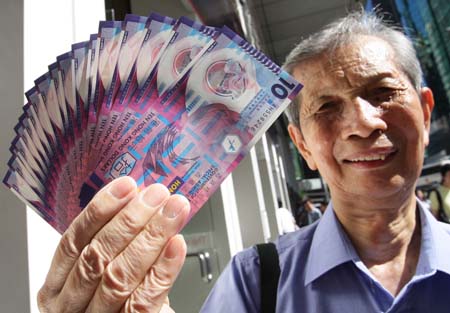
Legislative Council on Thursday approved the government's controversial proposal to give HK$6,000 (US$775) to all adult permanent residents in Hong Kong.
The cash handouts are an amendment to Financial Secretary John Tsang Chun-wah’s original budget and will cost an additional HK$37 (US$4.78) billion.
On the second day of a two-day debate on Tsang’s budget, 34 legislators voted in support of the cash handout, 11 abstained and none voted against.
Tsang said that about 6.1 million people were expected to qualify. He explained that officials were now working out how the money would be distributed.
The financial secretary announced his cash handouts plan in an unprecedented policy U-turn on March 2 after his original budget announcement received widespread criticism.
Tsang’s initial plan – to inject HK$6,000 into the Mandatory Provident Fund accounts of Hongkongers – was
criticized as unfair because it excluded the unemployed, retirees and housewives.
The budget and later amendments sparked protests by people concerned that the government was not doing enough to address the Hong Kong’s long-term economic and social problems.
Many are also concerned about rising living costs and what they see as the government’s inability to control the manipulation of the housing market by a few wealthy speculators.
Tsang said on Thursday his amendments to the budget had been made in response to public concern.
“They aim to respond to these concerns and [to] give people financial assistance,” he said.
The budget is expected to receive Legco endorsement by the end of the week.
Controversial budget approved without any fireworks
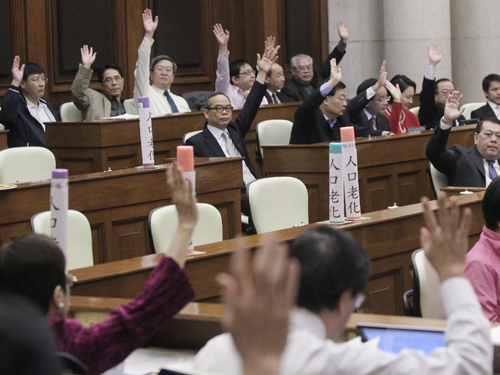
Financial Secretary John Tsang Chun-wah's controversial budget easily secured approval in the Legislative Council yesterday, clearing the way for the government to give all permanent residents a HK$6,000 cash handout.
It was passed by 33 votes to 19, with one abstention.
A feared repeat of last month's street battles with demonstrators failed to materialise, with hundreds of police officers including those from the police tactical unit and plain-clothes officers, deployed in a heavy security cordon thrown around the Legco buildings.
Two dozen police vehicles were parked nearby and a double layer of steel-wire barriers was erected to prevent any protesters from disrupting senior officials arriving to attend the meeting at which lawmakers resumed their debate on the budget.
Human Rights Monitor director Law Yuk-kai said police might have been acting on mistaken intelligence of possible protests outside Legco.
"As far as we know, many groups which used to stage protests outside the Legco building when crucial bills or issues were discussed at the legislature were not interested in coming this time," he said.
"Senior police management may have taken recent remarks by Chief Secretary Henry Tang Ying-yen too seriously and made a wrong judgment," Law said.
Tang said on Tuesday any behavior that crossed the line of peaceful demonstration would not be condoned.
Inside Legco, lawmakers voted 34-0 in favour of an amendment tabled by John Tsang to give each of Hong Kong's six million permanent residents HK$6,000 in cash.
Eleven lawmakers from the Democratic Party and the Civic Party abstained.
Tsang said the government had earmarked HK$37 billion for the handout and was still working out the details for distributing it.
All 16 amendments tabled by the pan-democrats were voted down. They included one proposed by Wong Yuk-man, of People Power, to slash the HK$85 million funding for the Central Policy Unit, and another put forward by social welfare sector lawmaker Peter Cheung Kwok-che to cut one month's salary from Secretary for
Labor and Welfare Matthew Cheung Kin-chung.
April 9 2011
Hong Kong US$310 million Cruise ship terminal aims for the big league By Amy Nip
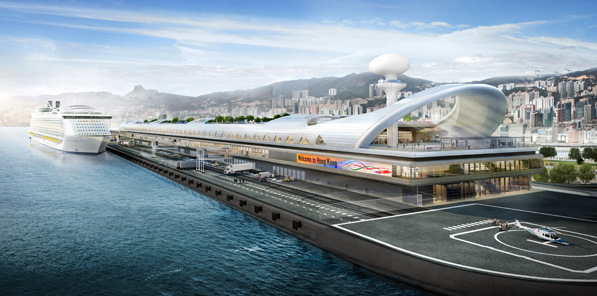 An artist's impression of the finished
facility An artist's impression of the finished
facility
After years of discussion, Hong Kong's bid to enter the big league of global cruise line destinations has finally got off the drawing board.
The project signals a new seafaring life for the old Kai Tak airport site and Chief Executive Donald Tsang Yam-kuen, Secretary for Development Carrie Lam Cheng Yuet-ngor and acting Secretary for Commerce and Economic Development Gregory So Kam-leung were there for yesterday's ceremony to mark the start of work on the terminal building.
The terminal and the first berth, which can handle the world's biggest ocean liners, will come into operation in the middle of 2013.
A second berth with similar capacity will start operation two years later.
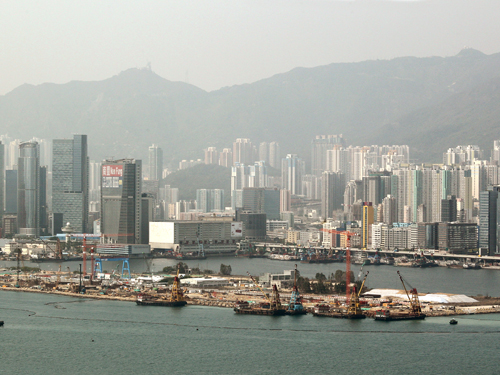 The former Kai Tak airport site The former Kai Tak airport site
The government will pay the building costs while operators are being invited to submit tenders for running the finished facility. The deadline for applications is June this year.
Tourism Commissioner Philip Yung Wai-hung said interested parties had already been in touch about the tender. However, he refused to reveal the number of applications the government had received.
The latest tender invitation comes after two failed rounds in 2008, when plans by two investors failed to meet government requirements.
Following this, the government decided to fund the design and construction of a terminal and lease it to an operator for a 10-year term, reduced from 50 years.
"We will ask cruise companies to send more ocean liners to Hong Kong in 2013," Yung said.
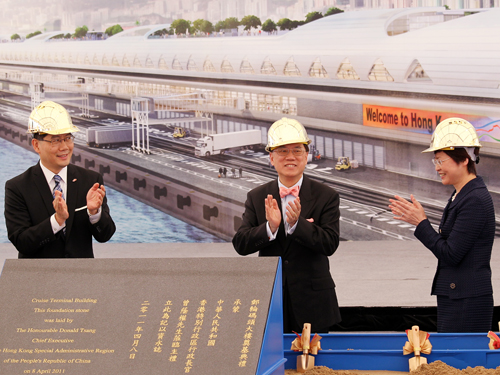 Chief Executive Donald Tsang (center), acting Secretary for Commerce and Economic Development Gregory So and Secretary for Development Carrie Lam give a welcoming hand to the start of work on the terminal on the runway of the former Kai Tak airport site. Chief Executive Donald Tsang (center), acting Secretary for Commerce and Economic Development Gregory So and Secretary for Development Carrie Lam give a welcoming hand to the start of work on the terminal on the runway of the former Kai Tak airport site.
The three-storey terminal is at the southern tip of the former Kai Tak runway and will provide a commercial area of about 60,000 sq ft and there will be a landscape deck on its roof. The customs hall will be able to clear 3,000 passengers in an hour.
Tourism sector lawmaker Paul Tse Wai-chun looked forward to the start of operations at the terminal which he hopes will put an end to big ships berthing in inaccessible places. "Several cruise vessels have had to berth in Kwai Chung" because of their size, he said.
The world's largest transatlantic ocean liner, Queen Mary 2, which was too big for Ocean Terminal in Tsim Sha Tsui, docked at Junk Bay in Sai Kung last month.
Tse was optimistic operators would be interested in submitting a tender, saying running a terminal cost much less than building one.
Local companies specialising in the cruise business have started training personnel, he said. They have also promoted the terminal at international conferences.
A total of 660,000 travellers arrived on cruises last year, 9 per cent more than in 2009, according to the Tourism Board.
April 3 2011
Hong Kong snaps up top-ranking professionals in aftermath of quake - Fast-track work visas for fleeing Japan executives
By Phyllis Tsang
More than 250 top-ranking professionals from Japan have been given Hong Kong work visas in just two weeks under an unprecedented fast-track approval system put in place following last month's devastating earthquake and tsunami.
As well as the 270 approvals, the Immigration Department received a further 300-plus inquiries from professionals in Japan worried about radiation from the crippled Fukushima nuclear fuel plant and further earthquakes.
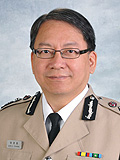 "Many applicants were very glad that we could grant the visa within two days," said newly appointed director of immigration Eric Chan Kwok-ki as he disclosed the figures. "Many applicants were very glad that we could grant the visa within two days," said newly appointed director of immigration Eric Chan Kwok-ki as he disclosed the figures.
They are the first official confirmation of a trend which has been apparent as Japan struggles to cope with the aftermath of the twin disasters which have left 11,800 people confirmed dead and 15,500 missing and with the crisis at the Fukushima plant 250 kilometres northeast of Tokyo. Nuclear power shutdowns triggered rolling power blackouts across much of the country.
Chan said fast-track approval was necessary because professionals leaving Tokyo were eyeing other jurisdictions as potential alternatives.
He said most of those given visas were senior managers of multinational companies in Japan, mainly in the financial sector. Their titles include chief executive officer, vice-president, senior investment manager, analyst and strategist.
"We have received inquiries from multinational companies and human resources companies applying for visas for their staff working in Japan, who would like to leave Japan after the quake," Chan said.
"Those applicants can bring economic benefit to Hong Kong. We hope that they consider long-term settlement in Hong Kong."
The 270 applications were received and approved between March 17 and Thursday.
An assistant director of immigration was appointed to speed up the process so that applicants could have a visa within two days. Chan said it was the "first time in immigration history" such procedures had been put in place. It usually took six to eight weeks to process an application.
"Those applicants might decide to go to other countries if we did not provide a speedy approach," he said.
The applicants included Europeans, Americans and Japanese working in Japan. A large number of them were earning between HK$100,000 and over HK$200,000 a month, according to the Immigration Department.
One Tokyo executive who arrived in Hong Kong told the Post that executives in Japan were fleeing to Hong Kong, Taiwan, and even far away as Australia and the United States after the quake. The man said worries about radiation were not the only reason people were leaving Tokyo. Their business had been affected as offices were badly damaged. "Time is money in my business," he said.
Among the 270 applicants granted a one-year visa, 158 were granted on an employment or investment basis, 62 were for their dependants, one for studying, and 49 applied to extend their visas as they were in Hong Kong right after the earthquake happened.
Last year, 26,881 working visas were granted for employment or investment in the city and 20,385 dependant visas in the same period.
March 18 2011
Hong Kong's Digital Magic
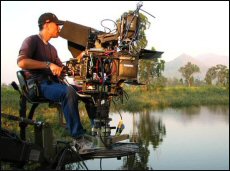 Investing early in the technology helped Digital Magic expand quickly into 3D production Investing early in the technology helped Digital Magic expand quickly into 3D production
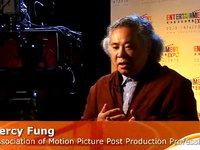 View
Video Presentation: Hong Kong film-makers are capitalising on growing interest in three-dimensional movies following the record-breaking box-office success of Avatar, according to the head of an influential trade group representing local production professionals. In an interview with the HKTDC, Percy
Fung, from the Association of Motion Picture Post Production Professionals, said he expects next week's FILMART to be a perfect forum for exploring new partnerships and digital technology. or http://www.vimeo.com/21201088 View
Video Presentation: Hong Kong film-makers are capitalising on growing interest in three-dimensional movies following the record-breaking box-office success of Avatar, according to the head of an influential trade group representing local production professionals. In an interview with the HKTDC, Percy
Fung, from the Association of Motion Picture Post Production Professionals, said he expects next week's FILMART to be a perfect forum for exploring new partnerships and digital technology. or http://www.vimeo.com/21201088
From the 1960s comics of Alfonso Wong to today’s on-screen adventures of Alice Mak’s McDull, Hong Kong’s illustrated creations have long been admired internationally. And, as the digital entertainment world has evolved over the last few decades, the local industry has kept pace with cutting-edge global developments in technology and style.
The limits of what can now be created have never reached so far, and the opportunities stretch from animation, to post-production work and such diverse industries as gaming and merchandising.
The rewards can be impressive. Last year saw one animated film (Toy Story 3) and another that relied heavily on computer-generated imagery (Alice In Wonderland) top the charts, each ringing in more than US$1 billion at the box office. Those sorts of returns have helped inspire the work of Hong Kong’s T-Films, according to Distribution and Production Manager Charlie Wong.
“Animation is a very special industry,” says Mr Wong. “You can say it is a film industry, an entertainment industry, a toy industry, a merchandising industry, and even a copyright branding industry. All these things are involved. And if you can make good-quality, original animation that is accepted by the worldwide market, then you can make huge revenues.”
Home-Grown Animation
While Asian cinemas have seen full houses for the latest offerings from such major players as Disney, Pixar, DreamWorks and Warner Brothers, the locals have been making their mark on the box office as well.
Mr Wong points to the success of the China-produced Pleasant Goat and Big Big Wolf, which was widely released on the Chinese mainland in 2009 and rewarded with box-office returns that topped Rmb130 million. “And that’s without calculating the merchandising revenues,” says Mr Wong. “That's why we are in this business.”
Little Gobie
 Hong Kong’s Little Gobie is set for release this summer in the United States Hong Kong’s Little Gobie is set for release this summer in the United States
Hong Kong has had its own success stories, among them the McDull franchise, which has seen its films chart well, both in Hong Kong and on the mainland. “Hong Kong companies have two advantages,” says Mr Wong. “We have quality and experience, and the world sees us as the gateway to China.”
Mr Wong also cites the success of T-Film’s Little Gobie as an example of how these advantages can best be put to use. The film, which tells the tale of a reindeer and his search for his lost pet dragon, was picked up for international distribution by the American film studio Weinstein Company. It has also been selected to screen at seven festivals across the United States, picking up the award for best animated production at the California Film Awards last year.
“We are planning to release Little Gobie this summer in the US and, of course, European countries will be following the US market,” says Mr Wong. “This can prove to the world that Hong Kong has the quality and experience to produce good animation.”
As Hong Kong productions are allowed on the mainland market through the Hong Kong-mainland Closer Economic Partnership Arrangement (CEPA), Mr Wong says that the local industry is primed for international interest – and investment. And, he says, success breeds success.
“There are now numerous worldwide distribution companies – including film distributors and toy distributors – interested in our second project, Flying Hero, which we will tentatively release in mid-2012. There are also Chinese and European animation houses keen to bring jobs to our studio. So it goes to show what can be done.”
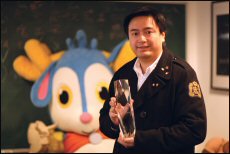 T-Films Production Manager Charlie Wong with the best animated production award for Little Gobie at the California Film Awards last year T-Films Production Manager Charlie Wong with the best animated production award for Little Gobie at the California Film Awards last year
Mr Wong cites the difficulty of luring investors to digital entertainment as one of the challenges faced by the industry. It’s not that the money isn’t there, he says, but due to its very nature, long-term investment is needed.
“You have to help them understand the industry,” he says. “Also, Disney, Pixar, Warner Brothers and DreamWorks continue to make big and good-quality animation. This, of course, hits independent animation work. The only thing we can win with is the story and the culture of the country the work comes from,” he says. “In China, for example, there is a long historical and cultural background, so we should make use of this to make animation with good stories and work that includes aspects of the Chinese culture.”
Cross-Culture Success
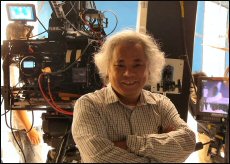 Percy Fung, Production Director of Hong Kong-based studio Digital Magic Percy Fung, Production Director of Hong Kong-based studio Digital Magic
While animation plays a dominant role in the digital entertainment industry, other opportunities abound. Post-production work and 3D effects and production are growth areas identified by Percy Fung, Production Director of the Film Magic, Digital Magic, i-Magic and Heavy Optical companies, which cover every aspect of digital entertainment.
“Hong Kong companies’ creativity is well-placed within the digital entertainment industry,” Mr Fung says. “Entrepreneurs here react fast to the market, to new technology and to the needs of the market, especially in China and other Asian countries. There is a great demand for content, and we have a proven record of success in crossing cultures.”
Mr Fung is also Chairman of Hong Kong’s Association of Motion Pictures Post-Production Professionals (AMP4), which is hosting the fourth Digital Visual Effects Summit, 22 March, as part of the annual Hong Kong Entertainment Expo. The summit will focus on changes in the international digital entertainment industry and opportunities available for Hong Kong enterprises.
Mr Fung cites Digital Magic as an example of how a Hong Kong company can pick up on trends in the digital entertainment world and expand its own operations.
“We sought out innovative technological developments through well-advanced research,” he says. “This paid off, as when the market was ready to work with innovations, we had already become familiar with the technology.”
That’s why, he says, the company has been able to expand its work in 3D, which is seen by many as the future of the film industry.
“It has been a big area of growth for us,” says Mr Fung. “With our own 3D camera system design, we have been able to accomplish 3D filming services for local and Asian producers. That goes to show what is possible if you are prepared to embrace this new technology.”
March 9 2011
Hong Kong International Airport took #1 place on International Cargo in 2010, overtake Memphis International Airport, the home of FedEx, which was number one for 18 years.
Nobody Does It Better - Since opening in 1998, the Hong Kong International Airport (HKIA) has consistently been the world’s number-one airport in terms of international cargo. Now it holds the mantle of busiest cargo airport overall. A record 23 per cent growth in 2010 has seen the HKIA overtake Memphis International Airport, the home of FedEx, which was number one for 18 years.
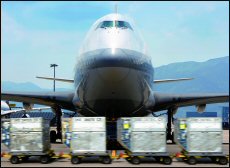 Hong Kong International Airport is the world’s busiest cargo airport Hong Kong International Airport is the world’s busiest cargo airport
The fast pace of growth on the Chinese mainland and Hong Kong’s quick rebound from the global economic downturn contributed to the record-breaking year.
“We are proud to have achieved a record-breaking year in 2010 on the back of the strong economic performance of the mainland and Hong Kong following the financial tsunami in late 2008,” said Stanley Hui, CEO, Airport Authority Hong Kong. “This further reinforces HKIA's position as a leading international and regional aviation centre, and a preferred gateway to the mainland.”
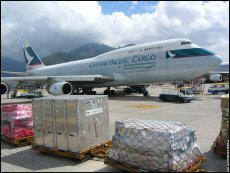 Cathay Pacific Airways is expanding its cargo fleet to meet growing demand Cathay Pacific Airways is expanding its cargo fleet to meet growing demand
Much of that cargo was handled by Cathay Pacific Airways (CX). The Hong Kong carrier moved 1.8 million tonnes of cargo and mail in 2010, up more than 18 per cent over 2009. After two lean years, when cargo volumes declined by seven per cent in 2008 and one per cent in 2009, this puts the airline’s cargo business back to a level approaching the pre-downturn boom times.
Expanding Cargo Capacity
As a result, CX plans to increase its cargo capacity by eight per cent this year. To meet growing demand, the airline has ordered 10 new Boeing 747-8F freighters, boosting its current fleet of 24. In 2010, CX increased freighter frequency to Miami, Houston, Delhi, Dubai, Chennai, Tokyo, Osaka, Hanoi and Dhaka, and launched twice-weekly round-the-world freighter flights (Hong Kong-Anchorage-Chicago-Amsterdam-Dubai-Hong Kong). There have been additional seasonal frequencies to the United States and Europe during peak times.
 US logistics provider Jacobson Companies says its Hong Kong office is key to the firm’s Asian development plans US logistics provider Jacobson Companies says its Hong Kong office is key to the firm’s Asian development plans
More overseas logistics providers are setting up in Hong Kong to claim their share of the Greater China action. Iowa-headquartered, third-party logistics provider Jacobson Companies entered the market early this year via acquisition. The new firm, Jacobson Global Logistics Ltd (JGL), provides a full range of international logistics services to and from the US and within Asia, including freight forwarding (ocean and air), purchase-order management, buyers’ consolidation, origin value-added services, bonded warehousing, and de-consolidation, in addition to international multi-modal transportation services.
“China is a core market in our Asia development plans,” said company President and CEO Brian Lutt.
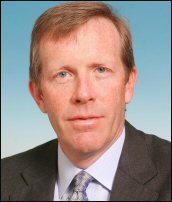 David Cunningham, President, Asia Pacific Region, FedEx Express David Cunningham, President, Asia Pacific Region, FedEx Express
Peter Knapp, President of Jacobson Global Logistics, agreed. “With Jacobson Companies’ strong presence in the US, coupled with capabilities in Asia provided through JGL and its wholly owned subsidiaries, we will provide seamless, end-to-end services in a true one-stop shop.”
Fertiliser and Feed
American grain trade company Gavilon LLC has opened a Hong Kong office as the base for its initiatives in the Asia-Pacific region. In addition to fertiliser sales and supply activities, Gavilon Hong Kong Ltd will provide destination marketing, logistics and trade finance services for soybeans, corn, barley, wheat and feed ingredients, to support its North American and Australian grain origination volume.
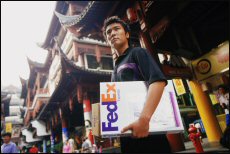 FedEx has increased its Hong Kong-Europe trade lanes FedEx has increased its Hong Kong-Europe trade lanes
“As global demand for agricultural commodities continues to grow, a strong presence in China will become increasingly important in the grain and oilseed markets,” said David Levine, Vice President of Gavilon’s international division. “We are looking forward to expanding our agricultural network in China and further developing relationships with customers in the Asia-Pacific region.”
Established players are expanding and diversifying their operations, too. Last year, FedEx Express was the first, with a direct service between Hong Kong and Europe, offering next-business-day delivery. The five-days-a-week flight to Paris will help companies compete in the global marketplace, said David Cunningham, President, Asia Pacific Region. The growth rate in Europe-Asia container traffic has increased recently, and westbound shipments from Asia to Europe have risen nearly 18 per cent in 2010, according to the latest container trade statistics, highlighting the importance of the trading lane for business in the region. In fact, the Europe-Asia air cargo market is expected to expand at an average annual rate of 6.6 per cent over the next two decades, representing immense growth potential for the industry.
Capacity on the Rise
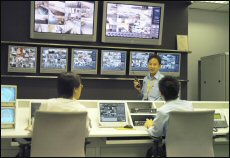 DHL has doubled its operational capacity in Hong Kong DHL has doubled its operational capacity in Hong Kong
In 2008, DHL doubled its operational capacity with a US$210 million expansion at HKIA. Designated DHL’s central Asian hub, the facility was completed five years ahead of schedule to meet rising demand.
Hong Kong 3PL Kerry Logistics is expanding its services to cater to the exploding wine market. The company recently received a Hong Kong Quality Assurance Agency (HKQAA) certificate of excellence for wine storage management.
Kerry Logistics manages wine logistics operations across the globe in more than 330 cities in 24 countries. Services include international freight forwarding, import/export handling, optimal cellarage conditions, distribution and value-added services.
“We are very pleased to receive HKQAA certification following a rigorous audit and inspections,” said Jesse Lui, Executive Director. “Since Hong Kong is now recognised as a leading global hub for the wine industry, there will be many opportunities for us to expand our network in the future.”
March 5 2011
Five-year plan devotes a full chapter to Hong Kong, Macau
By Fanny W. Y. Fung
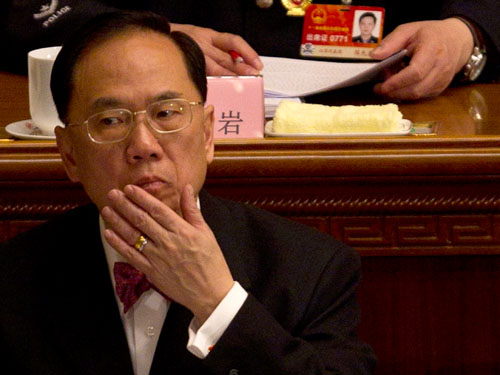 Donald Tsang at the opening session of the National People's Congress. Donald Tsang at the opening session of the National People's Congress.
The five-year plan for the first time devotes a full chapter to Hong Kong and Macau - a development Chief Executive Donald Tsang Yam-kuen hailed as "very exciting". It is only the second time the national blueprint for social and economic development has mentioned the two special administrative regions. Five years ago they earned only a brief mention.
The section in the 2011-2015 plan reiterate previous pledges of support for Hong Kong to boost its status as an international financial, trade and shipping centre and develop its traditional pillar industries and its leading role in the financial system of the Pearl River Delta.
Specifically, Beijing will encourage Hong Kong to become an offshore hub for renminbi business and an international centre for asset management.
The plan also pledges support for developing the new pillar industries identified by the Hong Kong government. In his 2009 policy address, the chief executive named six new pillars for the city's economic development - education, medical services, testing and certification, green industries, innovation and technology, and cultural and creative industries.
The plan was delivered in Beijing yesterday at the opening of the annual session of the National People's Congress.
The four paragraphs on Hong Kong and Macau were more detailed than those in the 11th five-year plan devoted to the two cities, which made brief mention of Beijing's hope Hong Kong would remain an international financial and trading centre and its support for the city to boost tourism, and cross-border developments in infrastructure, resources and environmental protection.
Delivering the State Council's annual work report to the congress, Premier Wen Jiabao said: "We will make full use of the unique role Hong Kong and Macau play in China's overall development strategy. We will base co-operation between the mainland and Hong Kong and Macau more firmly on a set of mechanisms, and support the deepening of intra-regional co-operation between Guangdong and Hong Kong and Macau for mutual benefit."
Rita Fan Hsu Lai-tai, a local deputy to the National People's Congress Standing Committee, believed the content in the chapter on Hong Kong and Macau reflected what the two special administrative region governments sought from the central government.
"In the past some people in Hong Kong were reluctant to have links with the mainland and the government did not have much interest in cross-border affairs. Now times have changed and people have come to realise the city can only enjoy a bright future by seeking integration with the mainland," she said.
Priscilla Lau Pui-king, another local deputy to the NPC, said she found the pledge on setting up mechanisms for mainland-Hong Kong co-operations a new initiative in the State Council's work report. She said the central government's plan to boost renminbi businesses outside of the mainland was the most important for Hong Kong among the work plans laid out by Wen yesterday, as the city could play a major role in this regard.
As he met Guangdong party secretary Wang Yang , the chief executive said: "There is a chapter for Hong Kong, while there is another for Guangdong, Hong Kong and Macau in the report. I am very excited."
十二五列四大方向挺港 - 鞏固提升金融貿易航運 旅遊中心歸澳門
【明報專訊】國務院總理溫家寶昨在全國人大會議上,公布關係到中國未來5年發展的「十二五」規劃綱要草案,當中,香港首次以獨立篇章納入其中,國家並表明會從四大方向支持香港,包括(1)發展金融、航運等六大高增值服務;(2)成為離岸人民幣業務中心和國際資產管理中心;(3)發展高價值貨物存貨管理及區域分銷中心:(4)鞏固和提升香港國際金融、貿易、航運中心地位。
另外,國家又肯定粵港合作中,香港作為金融體系龍頭的角色,將會與珠三角城市打造成世界級的「先進製造業和現代服務業基地」。不過,是次香港在國家規劃只剩下三大產業(即金融、貿易、航運中心),旅遊中心「撥給」澳門,有港區人大代表擔心會影響香港發展(見另稿)。
身在北京的特首曾蔭權,傍晚與廣東省委書記汪洋和省長黃華華會面時表示,對十二五規劃有提及香港與內地的合作部分感到興奮,建議中粵港合作部分給予香港很多冀盼,未來的工作方向可更為具體,亦珍惜這份成果。汪洋表示,曾蔭權向中央充分反映社會訴求,令粵港合作在十二五規劃當中的內容非常豐富。
2006年國家公布十一五規劃時,由於香港未有積極參與,換來只是片言隻語,只簡單交代「支持香港發展金融、航運、旅遊、資訊等服務業,保持香港國際金融、貿易、航運等中心地位」的表述。
港澳發展 首獲獨立篇章
今年的十二五規劃,國家首次以一個獨立篇章來交代兩個特區的發展,全份十二五規劃分為16篇,香港及澳門列在第14篇,題目為「深化合作 建設中華民族共同家園」,整篇約有650字,比十一五時的約200字為多。
整個篇章分為三節,第一節談到鞏固提升競爭優勢,「規劃」從四大方向表述:
1.繼續支持香港發展金融、航運、物流、旅遊、專業服務、資訊以及其他高增值服務;
2.支持香港發展成為離岸人民幣業務中心和國際資產管理中心;
3.支持香港發展高價值貨物存貨管理及區域分銷中心;
4.鞏固和提升香港國際金融、貿易、航運中心地位,增強金融中心的全球影響力。
首倡發展高價值貨物存貨管理
當中第三點,即發展高價值貨物存貨管理,是國家首次提出的。早前曾建議香港發展航運服務業的行會召集人梁振英認同這個發展方向,被問及建議獲納入十二五規劃是否有「功勞」,他笑稱:「唔多唔少都有,寫了幾十萬字(文章),一定中啦!」他說,特區政府現應積極統籌行業的需要,其次是培訓人才,例如﹕熟悉海事保險業人才,以及香港政府與各界應該爭取研究如何提升香港的金融、服務行業等。
第二節是支持港澳培育新興產業,培育新的經濟增長點,規劃詳細列出特首曾蔭權在2009年提出的六大優勢產業,即環保、醫療、教育、檢測認證、創新科技、文化創意等。最後一節是深化內地與港澳經濟合作,雖然坊間有分析說,深圳大力發展前海是要與香港「搶生意」,但十二五規劃為香港大派定心丸,明確指出國家「支持香港以金融體系為龍頭,珠江三角洲城市金融資源和現代服務為支撐的金融合作區域,打造世界先進製造業和現代服務業基地」。
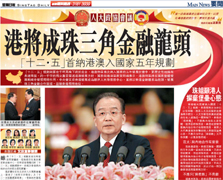 港 將 成 珠 三 角 金 融 龍 頭 港 將 成 珠 三 角 金 融 龍 頭
「十二‧五」規劃綱要在千呼萬喚下終於出台,港澳特區首次納入國家的五年發展計畫中,更歷史性地擁有長達兩版,約一千字的獨立篇章闡述港澳發展方針。國務院總理溫家寶明確表示,港澳特區將在國家整體發展戰略中發揮獨特作用,中央會支持香港發展成為離岸人民幣業務中心,並將以香港金融體系為龍頭,發展珠三角金融合作區域,盡顯香港獨特地位。
雖然「十二‧五」規劃未有如特區政府建議般,把香港定位為全國首要金融中心,但特首曾蔭權仍對「十二‧五」規劃綱要中,有提及香港與內地的合作的部分感到興奮。
溫家寶昨日在北京的人大開幕會議上,發表了「政府工作報告」及「十二‧五規劃綱要草案」。香港
向來重視金融服務發展,「十二‧五」表明會支持香港發展成為離岸人民幣業務中心和國際資產管理中心,及支持香港發展高價值貨物存貨管理和區域分銷中心,以鞏固和提升香港作為香港的國際金融、貿易、航運中心的地位,增強香港作為金融中心的全球影響力。有別以往,中央除要求香港「鞏固」各大中心地位外,更加上「提升」一詞,表明對香港寄望甚殷。
曾蔭權去年述職時曾向中央建議,把香港定位為「全國首要金融中心」,雖然最終未能如願,但「十二‧五」表明,會建設以香港金融體系為龍頭,珠三角城市的金融合作區域為支撐,促進區域經濟共同發展,以建立且綜合競爭力的世界級城市。
粵港合作亦是香港未來發展重點,「十二‧五」表明會支持廣東對港澳服務業開放先行先試、共建粵港澳優質生活圈、完善珠三角與港澳的交通運輸等。當中更有特定章節列出七項,在交通、基建及區域合作範疇上的合作項目。溫家寶在政府工作報告亦指出會進一步與港澳建立機制化合作,以深化粵港澳經濟合作,實現互惠共贏。
曾蔭權在任內推出,包括醫療、教育、檢測和認證、創新科技及文化創意的六大產業,亦被例入「十二‧五」中。綱要內提及會支持香港培育新興產業,會支持六大產業發展,並拓展合作領域和服務範圍,以推動經濟及社會協調發展。
中聯辦主任彭清華指,溫家寶強調香港在國家整體戰略中的獨特作用,又特別提出促進粵港澳的區域合作發展、互利共贏,他認為對香港是值得鼓舞、振奮人心的事情。他指總理工作報告及「十‧二五」規劃給香港一個新目標,相信一定會得到香港市民的支持。
曾蔭權昨日與廣東省委書記汪洋及省長黃華華會面時表示,他對規劃中提及香港與內地合作的部分感到興奮,令香港未來的方向更具體,他表示建議中,以金融、服務支撐的金融合作區域,打造世界先進製造業和服務業的基地,建構現代流通經濟圈,給予香港很多冀盼,香港會珍惜這份成果。而汪洋則讚揚曾蔭權向中央充分反映社會訴求,令粵港合作在「十二‧五」規劃當中的內容豐富。
據悉,港府內部預計,國家通過「十二‧五」規劃後,粵港就可透過粵港合作聯席會議展開工作。粵港雙方會繼續跟進粵港合作的發展及CEPA的落實情況。此外,曾蔭權出席全國人大會議前,與國家主席和胡錦濤和總理溫家寶會面。另主管香港事務的國家副主席習近平,今日將與港區人大會晤。
March 2 2011
 Outlook Asia - Hong Kong’s business advantages - US Chief Commercial Consul Hong Kong - will be on the agenda later this month at the Asia Pacific Business Outlook conference in Los Angeles (March 28 - 29).
Andrew Wylegala, Chief Commercial Consul at the US Consulate General in Hong
Kong, explains why American companies should cast their eyes across the Pacific - Hong Kong
http://www.apboconference.com/ http://www.vimeo.com/20557682 - Short Presentation by Andrew Wylegala
on Hong Kong Advantages Outlook Asia - Hong Kong’s business advantages - US Chief Commercial Consul Hong Kong - will be on the agenda later this month at the Asia Pacific Business Outlook conference in Los Angeles (March 28 - 29).
Andrew Wylegala, Chief Commercial Consul at the US Consulate General in Hong
Kong, explains why American companies should cast their eyes across the Pacific - Hong Kong
http://www.apboconference.com/ http://www.vimeo.com/20557682 - Short Presentation by Andrew Wylegala
on Hong Kong Advantages
February 25 2011
Hong Kong Millionaire’s Row
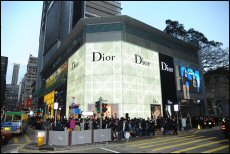 Christian Dior’s new Hong Kong flagship shop in Tsim Sha Tsui Christian Dior’s new Hong Kong flagship shop in Tsim Sha Tsui
Just-released research by Hong Kong-based brokerage and investment group CLSA points to a new generation of Chinese big-spenders with a growing appetite for fast cars, luxury watches and top-end fashion brands. The consumerism of this nouveau riche – average age 39 – will see Greater China, including the Chinese mainland, Hong Kong, Macau and Taiwan, dominate the global luxury market within a decade, according to the data.
Aaron Fischer, author of the report Dipped in Gold – Luxury Lifestyles in China/Hong Kong, says Chinese consumers are becoming richer quicker than anyone in the world. He notes that the number of individuals worth more than HK$1.18 billion has increased at an annual rate of 50 per cent, from just 24 in 2000, to 1,363 in 2010.
 The CLSA report shows where China’s wealthy are spending their money The CLSA report shows where China’s wealthy are spending their money
And Mr Fischer, who’s Regional Head of Consumer and Gaming Research at CLSA, says demand for luxury goods will increase in tandem. He expects the value of the luxury sector in Hong Kong and the mainland to climb from the current 26 billion to 169 billion euros by 2020. This would take Greater China’s share of the global market to 44 per cent, up from the present 15 per cent, and overtaking the United States.
Why More is More
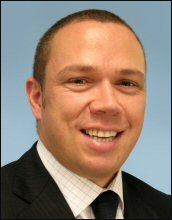 Aaron Fischer, Regional Head of Consumer and Gaming Research, CLSA Aaron Fischer, Regional Head of Consumer and Gaming Research, CLSA
Even though the owners of this new money can afford to travel, Mr Fischer says mainland consumers still prefer to spend it in Hong Kong.
“Chinese consumers prefer European brands when it comes to luxury goods. Given the close proximity and its fame as a shopping heaven, Hong Kong still attracts many luxury shoppers from the mainland. Hong Kong tops the lists for purchases of luxury cosmetics, jewellery and watches, and fashion and accessories, with Japan and Europe as the much weaker competitors on these fronts.”
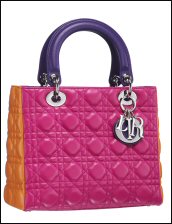 China’s big spenders are loyal to their favorite brands China’s big spenders are loyal to their favorite brands
Retailers surveyed revealed that mainland tourists account for 50 to 85 per cent of revenue at Hong Kong watch and jewellery shops. In Hong Kong, 76 per cent of their spending goes on shopping – 15 per cent above average for other visitors, and 66 per cent above that spent by Japanese tourists.
While mainlanders are coming to Hong Kong in record numbers, the survey shows that the United Kingdom is having trouble attracting mainland tourists, and visits to the US are declining.
Luxury Brands Expand
 Cartier's new flagship in Prince's Building houses a full range of timepieces and fine jewellery Cartier's new flagship in Prince's Building houses a full range of timepieces and fine jewellery
Brands are taking notice, using Hong Kong to ramp up their presence in Asia. Italian luxury brand Prada recently announced, after much speculation, that it would launch its IPO in Hong Kong. Late last year, Cartier unveiled its new Hong Kong flagship shop, a three-storey boutique in an upscale Central shopping centre, replacing its original ground-floor store, which opened in 1970.
Christian Dior, which opened its new Hong Kong flagship store in January 2010, relaunched after eight months of expansion and renovation. Regional Managing Director of Christian Dior Asia Pacific, Diego Menarin, says he’s excited about the reopening of the boutique in Tsim Sha Tsui.
CLSA’s Mr Fischer believes there are two key reasons behind Hong Kong’s success. “First, strong local demand – we estimate that luxury goods sales to be 2.6 per cent of GDP, versus the global average of 0.35 per cent. Equity and property markets have been strong in Hong Kong over the recent years, which are supporting robust demand.
“Second, a large component of luxury sales in Hong Kong is made by mainland tourists. In some luxury stores in Tsim Sha Tsui, mainland customers make up 85 per cent of sales. Mainlanders purchase in Hong Kong, since prices are about 30 per cent lower than on the mainland due to differences in taxes and duties. Also, the range of luxury goods is significantly wider in Hong Kong.
High-Growth Sector
 Diego Menarin, Regional Managing Director of Christian Dior Asia Pacific, with make- up artist Zing Diego Menarin, Regional Managing Director of Christian Dior Asia Pacific, with make- up artist Zing
“But more generally, we believe the demand for luxury by greater Chinese (including Hong Kong) will grow at 23 per cent over the next 10 years. Including domestic and overseas spending, we believe greater Chinese will account for 44 per cent of the global luxury market, up from 15 per cent today. Rising incomes, supporting social factors and increased supply, are the broader drivers.”
He agrees that the rise of cashed-up consumers who love to spend in Hong Kong creates a “perfect storm” of retail opportunity.
“We really believe that incomes are reaching an inflection point, where luxury goods demand will increase at an exponential rate as the penetration of luxury increases from a very low level,” Mr Fischer says. The trend, he adds, is reflected in Hong Kong December retail sales, up 18 per cent for watches and 29 per cent for jewellery. Also, Richemont reported that its Asia-Pacific sales, including Japan, were up 57 per cent, and Hermès reported Asia-Pacific sales up 45 per cent. These data points, he says, indicate that luxury sales in Hong Kong and on the mainland were up 75 to 100 per cent in the recent quarter.
What the Well-Heeled Want
CSLA research shows Chinese luxury consumers have an average age of 39 – 15 years younger than their overseas peers. They own three cars – BMW being the most prevalent – and 4.4 luxury watches. Their favourite brands are Rolex for watches and Cartier for jewellery. They dress to impress: Louis Vuitton, Armani, Gucci and Hugo Boss take the lead in the fashion stakes. Highly popular are signature collections and brands with large logos. In this age group (30-40) they are the drivers of accessories and skincare demand.
Other top sellers are Swatch, for whom Greater China represents 28 per cent of global sales, Richemont (22 per cent), Gucci (18 per cent), Bulgari (14 per cent) and Hermès (11 per cent).
Most of the well-heeled surveyed bought luxury goods as a symbol of their success and status. Sixty-four per cent shop to reward themselves. The data also found that, in keeping with cultural tradition, up to 17 per cent of Chinese consumers buy luxury goods as gifts. Handbags, clothing, watches and jewellery are the most popular gift items.
February 11 2011
Hong Kong's first organic fish sure to catch on
By Lo Wei
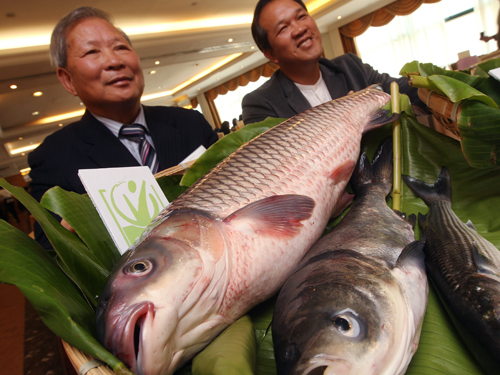 Yuen Long fish farmers Lai Loi-chau (left) and Yeung Sui-leung present (from left) certified organic grass carp, bighead carp and grey mullet yesterday. Yuen Long fish farmers Lai Loi-chau (left) and Yeung Sui-leung present (from left) certified organic grass carp, bighead carp and grey mullet yesterday.
Organic fish will be sold for the first time in Hong Kong next month. They come from two fish farms in Yuen Long where 18,000 fish have been bred organically in terms of their feed and breeding environment, says Jonathan Wong Woon-chung, director of the Hong Kong Organic Resource Centre.
Three types of fish farmed organically - mullet, bighead carp and grass carp - have received certification from the centre established under Hong Kong Baptist University.
They will be sold for HK$60 to HK$70 each, about double the price for non-organic fish of the same type on the market.
Each fish will be labelled with a green sticker with a tick, the word "organic" and the centre's name to identify them as certified organic.
From next month, one of the farms will sell fish at its own retail outlets. Wong expects that more fish will soon be available in selective supermarkets.
"Organic fish are safer to eat as they are chemical-free," he said. "Eating them also benefits the environment."
He said the two farms had to comply with many international standards to earn their organic certification.
Apart from providing organic feed and unpolluted water, the farms had to ensure they had adequate space for the fish.
"The fish need enough room to swim," Wong said. "If it gets too crowded, they can be injured."
The fish were raised and killed humanely, Wong said.
He explained that methods commonly used in wet markets were acceptable, such as knocking fish unconscious with a hard blow before gutting them. But drugging fish was prohibited as this would contaminate them.
Wong is confident that organic fish farming has a future in Hong Kong. "We are now at the kick-off stage but hope more fish farmers will join the project," he said.
The Organic Resources Centre was co-operating with the two farms, with technological support from the Agriculture, Fisheries and Conservation Department.
When the fishing operation is more well established, the farms will breed more expensive species to raise profit margins and make it more attractive to fish farmers.
"Farming organic fish should be more profitable than breeding non-organic fish," Wong said.
For now, only freshwater fish can be cultivated organically in Hong Kong as there are no isolated bays suitable for organic mariculture. "We can't raise organic fish with non-organic types as they will be contaminated by chemicals and pollutants," Wong said.
Organic fish provided a safer and more environmentally friendly choice for consumers, Wong said, as organic fish farms strive to minimise water pollution.
Their carbon footprint was much lower as they did not use fertilisers and pesticides, which were petroleum by-products.
More than 70 per cent of the farms' fish feed is organic, meaning it has been produced with no chemical fertilisers, additives and hormones.
The fish are fed mainly residue from organically raised soya bean and fishmeal.
Water quality at the farms is also strictly controlled. The pond water and mud must be free of pollution, and any waste water from the operation is treated before it is discharged.
February 7 2011
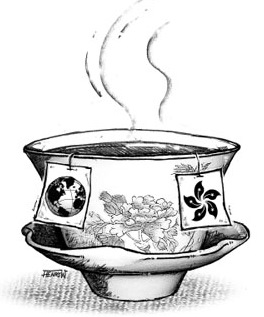 Best of both worlds - The dual identity of Hong Kong returnees helps them switch smoothly between cultures By Nan Sussman Best of both worlds - The dual identity of Hong Kong returnees helps them switch smoothly between cultures By Nan Sussman
By my estimation, nearly half a million Hongkongers have returned home since their unprecedented emigration between 1984 and 1997. You know the beginning of the story. People experienced a bad case of handover anxiety and one-sixth of the population emigrated, primarily to Australia and Canada, but Britain, the US, New Zealand and a dozen other countries welcomed the middle-class and well-educated sojourners. Unlike past migrations, this wave was often composed of three generations, and about 35 per cent of them held professional and managerial jobs compared to 12 per cent for the general population. The intent for many was to secure a new passport, not a new identity. What happened next is something you might not know.
During 2004, I interviewed people who returned to Hong Kong, to investigate their experiences abroad and back at home. As newcomers to Canada and Australia, many Hongkongers came to learn about, respect and adapt to the customs and values of their new homelands. One remarked to me that she slowed her walking pace when her hurried gait revealed her Hong Kong origins to the Aussies. Another embraced the intricate rules of ice hockey and became an ardent Vancouver Canucks' fan. Hongkongers went hiking in Melbourne instead of shopping, and spent evenings at home with their families rather than in the office.
In the gradual way of cultural transitions, former Hongkongers added another identity layer to their already complex one. A century and a half of British rule had left a layer of Western ideas and customs over a core of Chinese values. These two influences spawned a uniquely Hong Kong identity characterised by hard work and group cohesion but also modernity and sophistication. Then, after three, four or eight years in Vancouver or Sydney, a Canadian/Australia identity emerged. Psychological adjustments for the immigrants, although not without a few bumps, were relatively smooth. But now they were returning home.
Why leave their big homes in Richmond and the sparkling beaches of Queensland for the crowds of Causeway Bay? The economic, corporate and government lure of Hong Kong became too hard to resist against the slumping economies of the West.
Pundits labelled these early and intermittent returning immigrants tai kong ren or "astronauts" and, for a time, they were in fact working in Hong Kong but maintaining homes and families in their new abodes. Gradually, however, the decision was made to return to Hong Kong, sometimes with families in tact, sometimes leaving behind a college-aged son or elderly grandparents in their Toronto homes.
More long-term strategic visions also influenced decisions. Parents, with an eye to the future, were determined that their children should be fluent not only in Cantonese and English but also in Putonghua.
The experience of returning home is where Hongkongers part company with the experience of returnees worldwide. I developed a model of cultural identity that classified returnee responses into four types: subtractive, additive, affirmative and global. My research over a 25-year period had consistently showed that many returnees were in psychological distress when they returned home. Westerners in particular exhibit a subtractive cultural identity: they no longer fit into their home countries and feel estranged from their compatriots. One American returning to the US after several years of living in France commented: "I just didn't fit any more in the US." An Italian college student returning home following a year working in Peru complained: "My return has been more difficult than my adjustment overseas. I feel something, it's like my place isn't really here [in Italy] any more."
Mainland Chinese frequently experience an affirmative identity; their Chinese identity is strengthened following their overseas stay and they become ardent supporters of the government. They can be
characterized as grateful repatriates, although nearly half quit their re-entry jobs if they were working for state-owned companies, as Hong Kong University of Science and Technology professor David Zweig discovered in his research.
But Hongkongers uniformly exhibit an additive response: they add a layer of Canadian or Australian identity to their complex self-concepts and mostly have a positive emotional response to returning home. There is no hand-wringing or existential dilemmas about how to live and work in Hong Kong. Despite my probing for discomfort during our interviews, the returnees experienced high satisfaction with their lives and low repatriation distress. Their Hong Kong-Western bicultural identity allowed for a widened range of thinking and
behavior that they could change in response to the situation. Working for a local company? Then work six days a week, 10 hours a day, keep your opinions to yourself, and eat lunch daily with your co-workers. Working for a Western company? Be direct in communication and don't worry about face, express your opinions decisively, and do some errands alone during lunchtime, at least occasionally. Linguistically, returnees switch between Cantonese and English at an amazing rate (26 switches in a 400-word utterance, according to University of Hong Kong linguistics associate professor Katherine Chen). Their culinary preferences are both steak and dim sum. Attitudinally, they are more environmentally conscious and more likely to believe that they can make a political difference by participating in July 1 demonstrations, for example. And, of course, they pick up their pace; no leisurely Melbourne strolling on Nathan Road.
Dr Nan M. Sussman is a professor of psychology at the College of Staten Island and Graduate
Center, City University of New York. She is the author of Return Migration and Identity: A Global Phenomenon, A Hong Kong Case. This article is based on her presentation yesterday of her research findings to the Asia Society
February 3 2011
Degrees of Separation
Hong Kong announced its intention to become an education hub in 2006, with a major push to attract international students to its post-secondary institutions. Since then, the sector has seen the number of international students multiply, as visa restrictions eased, graduate jobs opened and scholarship schemes were introduced. Impressive school rankings – the University of Hong Kong (HKU) was recently rated first in Asia and 21st in the world by Times Higher Education and The Hong Kong University of Science and Technology's (HKUST) Executive Master of Business Administration
program (EMBA) was named first in the world by the Financial Times – are added persuaders.
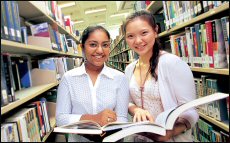 Hong Kong’s plans to become an education hub has attracted top-notch international students from around the world Hong Kong’s plans to become an education hub has attracted top-notch international students from around the world
For its 2009/10 school year, the HKUST announced its highest intake of international students, at 38 per cent. Its EMBA programme, jointly run with the Kellogg School of Management, counts 49 per cent of participants from outside Hong Kong, with 35 per cent coming from the United States and 18 per cent from Europe.
At HKU, about 7,000 registered students are non-Hong Kong residents. In November, following similar moves in Beijing and Shanghai, the university opened a liaison office in New Delhi to respond to the growing number of admissions from India. Indian applications increased three-fold during the 2009/10 intake, to 120.
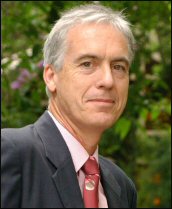 Professor John Spinks, Senior Advisor to the Vice-Chancellor at the University of Hong Kong Professor John Spinks, Senior Advisor to the Vice-Chancellor at the University of Hong Kong
Professor John Spinks, Senior Advisor to the Vice-Chancellor at HKU, says that with international enrollments close to capacity, the university can be selective. The university currently offers places to about one in 10 overseas applicants and is focused on raising its profile overseas to attract top-tier talent.
“Raising visibility is critical to raising the talent pool. We are well-known in educational circles, but we are less known by families,” Professor Spinks says. “We see the university as very international and able to compete with the big international names abroad. We're looking at some very exceptional students coming in.”
HKU already hosts top-score students from 10 Chinese mainland provinces and Taiwan, as well as Myanmar's second-highest national scoring student.
Mainland Equation
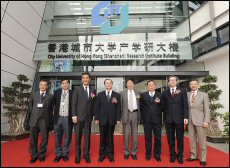 Officials at the launch of the City University of Hong Kong (Shenzhen) Research Institute Building last month Officials at the launch of the City University of Hong Kong (Shenzhen) Research Institute Building last month
More than half of the overseas students enrolling at HKUST originate from the mainland. Studying in Hong Kong gives them international exposure and may be the first educational step towards top-ranked schools in the US or Europe.
Today, growing numbers of international students from outside the mainland want to use Hong Kong universities as a first route into the mainland. “Close proximity to China is one of the reasons for our existence; it's our competitive edge,” says Ross Lai, Head of HKUST's Media and Editorial Unit spokesman for HKUST. “China is a huge market. If you are a business or engineering student there are so many opportunities across the border.”
HKUST sees big student demand for mainland placements and, like most Hong Kong institutions, is constantly looking to forge links with universities there. Its latest agreement is with Peking University's humanities and social science departments. City University of Hong Kong, in January, opened a 12,000-square-metre, HK$100 million dollar institute for applied research in the southern mainland city of Shenzhen and will promote joint education programmes.
Spatial Awareness
With international enrollments up, future development in Hong Kong hinges on greater facilities and choice. There is a push to provide more accommodation. HKUST is partnering with City University and Baptist University to provide nearly 1,000 new places in two sites, and HKU will release more spaces by 2012.
Despite land being at a premium in Hong Kong, new sites are also being released for educational complexes. A closed 88-hectare site called the Lok Ma Chau Loop, on land nestled between Hong Kong and the mainland, will complete construction in 2020. It has the capacity to house up to four institutions, or 24,000 new students. The revitalisation project is being shared by the Hong Kong and Shenzhen governments.
Six new sites aimed at private, self-financing colleges will be offered to bidders. The largest of these, in the New Territories area of Fan Ling, is 100,000 square metres in size, allowing space for about 8,000 new students. Companies are invited to register an expression of interest in the site to Hong Kong's Education Bureau until 31 March.
Calling for Independents
 American Jonathan Mak chose to enrol at the Savannah School of Art and Design program in Hong Kong American Jonathan Mak chose to enrol at the Savannah School of Art and Design program in Hong Kong
Self-financed education is a growing sector. Two years ago, the prestigious US arts college, the Savannah School of Art and Design (SCAD), won a contract to convert an old magistrate building in Kowloon. A private institution, SCAD is the first US art and design college with degree-granting status to set up in Hong Kong.
According to SCAD Hong Kong Vice President John Paul Rowan, the move to Asia was compelling. Many of the school's students at its overseas locations are from Asia, and more than 200 alumni live or work in the region. The school's artistic focus also dovetails with the Hong Kong Government decision, last year, to include creativity as one of the city’s six new economic growth pillars. “Hong Kong is a sophisticated international city with a strong market and ongoing need for creative talent, to which SCAD hopes to contribute,” says Mr Rowan.
School fees are not always an obstacle. Jonathan Mak is a freshman from Sacramento, California, who hopes to become an industrial or graphic designer. He rejected a course offered in the US in favour of moving to Hong Kong. “Hong Kong is a multicultural, vibrant city with many inspirations. Additionally, the cost of living is much lower compared to countries such as the US,” he says.
Others have been surprised at how easy a move to Hong Kong can be. “When I came here, I was expecting much more of a cultural shock, a big change in the way of doing things. In reality, I didn't see that at all,” says Marcos Olmo Pazos, a Spanish architect enrolled in HKU's 14-month MBA programme.
The experience has offered him welcome exposure to opportunities in China and an instant global network of connections: high-achievers from China and the rest of Asia, as well as the US and Europe, are classmates.
“All the people studying business here are doing something. They all have a story. They don't just come to Hong Kong. They all have a reason,” Mr Pazos says. “The human capital is amazing.”
February 2 2011
Hong Kong: Happy Days are Here Again
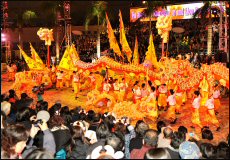 Visitors, many from the Chinese mainland, flock to Hong Kong for the Lunar New Year celebrations Visitors, many from the Chinese mainland, flock to Hong Kong for the Lunar New Year celebrations
It’s official: Hong Kong tourism has recovered from the economic slowdown, welcoming a record 36.03 million visitors in 2010 – a 21.8 per cent increase over 2009. The biggest increase was noted among Chinese mainland arrivals, up by nearly 22.5 million, or 27 per cent.
Announcing the robust results, Hong Kong Tourism Board (HKTB) Chairman James Tien said Hong Kong had clearly rebounded from the “severe blows” dealt by the financial tsunami and the human swine flu experienced in 2009.
That momentum is set to continue, with the HKTB forecasting arrivals could reach 40 million this year. Noting that Asia would be a key driver of global tourism growth in 2011, Mr Tien said that the HKTB “will maintain our close partnership with the travel trade to uphold Hong Kong’s image as an international, cosmopolitan city.”
It will also lobby the Central Government to extend the Individual Visit Scheme to more major mainland cities, including those in the three provinces of northeast China and the provinces of Zhejiang and Jiangsu. “We also hope that the measures for individual visits by both Guangdong and non-Guangdong residents living in Shenzhen could be extended to other cities in the province, so that we could bring even greater momentum to the growth of mainland arrivals.”
Business to Benefit
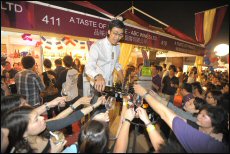 Gourmands make Hong Kong’s Wine and Dine month a must-attend event Gourmands make Hong Kong’s Wine and Dine month a must-attend event
Such strong tourism growth is good news for Hong Kong hotels, retail and convention-related business.
While acknowledging that the number of day visitors boosts arrival numbers, James Lu, Executive Director of the Hong Kong Hotels Association, said optimism among members is high. “Even with that, we expect hotel business to continue to be strong in 2011 because of the volume of business we are receiving from all our markets.”
In 2010, occupancy at Hong Kong hotels was back to its 2008 pre-crisis level of 86 per cent, according to Mr Lu. “Hotel room inventory in Hong Kong continues to increase year after year at an average five to six per cent, so there has been real growth in our business. I would describe it as being at a healthy level to attract more new hotel investments in Hong Kong. While 86 per cent is a great occupancy rate, the flip side is there are still 14 per cent of our rooms unoccupied to give us more growth prospects.”
Mr Lu said the options of hotels available are designed to appeal to all market sectors. “Hotels in Hong Kong are well spread among different categories and locations, and our excellent local transportation system connects them to the central business and shopping districts. There is even distribution of our markets and customer types and none of our hotels is too reliant on one or two.”
Investors See Value
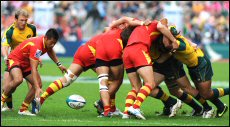 The Cathay Pacific Rugby Sevens is a major event on the international sporting calendar The Cathay Pacific Rugby Sevens is a major event on the international sporting calendar
He conceded that hotel business has fluctuated “quite drastically” in the past decade, with the industry experiencing both good and bad times. “This adds risk to hotel development in Hong Kong, but investors are always able to work out their sums and build when they see new opportunities emerging. All indicators show that the immediate future prospects of tourism in Hong Kong – and, therefore, the hotel business – to be positive. We strongly believe that there will be good future supply of new hotel rooms in Hong Kong to meet rising demand from all markets and market segments.”
He expects the upcoming Lunar New Year holiday to see a flood of mainland visitors to Hong Kong. “Past years have shown there are always high occupancy rates during the Lunar New Year, and we expect 2011 to be no exception.”
Retailers, too, stand to benefit. A new market intelligence report from Business Monitor International (BMI) predicts Hong Kong’s total retail sales will grow from an expected US$38.64 billion in 2011, to US$43.83 billion in 2014. The report cited rising disposable incomes and a strong tourism industry as key factors behind the forecast growth. Stand-out retail sub-sectors, according to BMI, are over-the-counter pharmaceuticals (forecast to rise 28 per cent over the period), consumer electronics (nearly 10 per cent), and high-end products such as multimedia notebooks, 3G phones and smartphones. Food sales figures, forecast to reach US$12.52 billion by 2014, up from US$12 billion in 2011, are “impressive for the region.”
Stellar Events
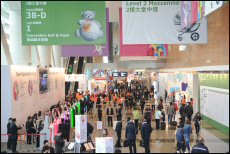 Trade visitors pack the HKCEC for the record-breaking HKTDC Hong Kong Toys and Games Fair in January Trade visitors pack the HKCEC for the record-breaking HKTDC Hong Kong Toys and Games Fair in January
Major international events expected to boost Hong Kong’s tourism numbers this year include the Lunar New year celebrations (28 Jan-17 February), the Hong Kong Rugby Sevens (25-29 March), the Summer Spectacular (June-August), and the Hong Kong Wine and Dine Month (November).
Highlights of the packed program at AsiaWorld-Expo, one of two world-class exhibition, convention and events venues in Hong Kong, include headline acts Eric Clapton (18 February) and Taylor Swift (21 February). Allen Ha, CEO, AsiaWorld-Expo Management Ltd, said enhanced transportation links directly to the venue have drawn large numbers of visitors. “They further complement the venue’s many strengths, enabling visitors to combine attendance at AsiaWorld-Expo with outlet shopping and other activities.”
Conference City
The Hong Kong Convention and Exhibition Centre (HKCEC) is also gearing up for a bumper 2011. The downtown venue will host 19 international conferences, covering a wide variety of subjects, from medical science, infrastructure and waste management, to retail and yoga. Several new exhibitions will be held at the HKCEC this year, and recurrent ones continue to expand. They include HOFEX 2011 – the 14th International Exhibition of Food & Drink, Hotel, Restaurant & Food Service Equipment, Supplies and Services (11-14 May), and ART HK, a key fixture on the international art calendar (26-29 May).
January 26 2011
World’s Most Globalised
Economy
Hong Kong has topped the list in a global ranking of the world’s 60 largest
economies. Hong Kong, one of only two Asian economies to place among the
study’s top 10, was cited as the most globalized economy for doing business.
 Hong Kong has
been ranked the world’s most globalized economy in the latest Globalization
Index survey by Ernst & Young Hong Kong has
been ranked the world’s most globalized economy in the latest Globalization
Index survey by Ernst & Young
Hong Kong is leading the world in the trend towards globalization, particularly
in the exchange of goods, capital and labor. That’s the conclusion of a new
study from the global advisory services firm Ernst & Young, in association
with the Economist Intelligence Unit. Its findings show that Hong Kong in 2010
embraced the highest level of globalization among 60 of the world’s largest
economies.
“Hong Kong is playing a very significant role in the world,” said Agnes
Chan, Ernst & Young’s Regional Managing Partner, Hong Kong and Macau.
“China now is the second-largest economy in the world. Investors regard Hong
Kong as the gateway to enter and invest in mainland China, while Chinese
enterprises view Hong Kong as a springboard to expand into the international
market.”
The Globalization Index tracks and measures the performance of the world’s 60
largest economies, based on 20 indicators of cross-border business integration.
The indicators fall into five broad categories: openness to trade; capital
movements; exchange of technology and ideas; movement of labor; and cultural
integration. The Index measures relative rather than absolute globalization,
meaning that the five categories are measured relative to the economy’s GDP.
The 2010 index is based on a survey of 1,050 global senior business executives
and in-depth interviews with 20 senior executives and high-level experts.
Embracing Globalization
 Hong
Kong’s rule of law, transparency and availability of talent make it an
especially attractive base Hong
Kong’s rule of law, transparency and availability of talent make it an
especially attractive base
Rounding out the top three was Ireland, which scored highest on technology, and
Singapore, which dropped from number one to number three.
“Significantly, two out of the top three economies are from Asia-Pacific,
which shows how the region is embracing globalization,” Ms Chan said. “It
also demonstrates how these economies are willing to stake their economic
legacies on creating the right environment to facilitate the freedom of movement
of goods, people, capital and ideas.”
According to Ms Chan, Hong Kong ranked top in the areas of openness to trade,
movement of capital and finance and cultural integration. But she noted that the
city lags behind in the areas of exchange of technology and ideas, and in net
labour migration. The group proposed that the Hong Kong Government introduce
business tax and financial incentives to encourage investments in innovation.
The report also called on the Government to improve the environment and
education system in order to attract talent to Hong Kong.
 Experts
discuss the merits of doing business in Hong Kong at the unveiling of the
Globalization Index survey Experts
discuss the merits of doing business in Hong Kong at the unveiling of the
Globalization Index survey
To maintain Hong Kong’s edge, business operators also stressed the importance
of continuing to provide a free operating environment. “To retain the
number-one position is to have an all-embracing attitude in areas such as trade
openness, exchange of culture,” said Tony Tsoi, CEO of Varitronix
International Ltd.
As a gateway to China, Mr Tsoi said Hong Kong’s advantage is
“indisputable.”
But the challenge, according to Mr Tsoi, is to raise the bar higher. “Hong
Kong’s advantage over other economies is that being able to base in Hong Kong
is an assurance of quality. So it’s all the more important at this juncture
not to be lax in our standards, and to raise the quality even higher,” he
said.
International firms are taking heed. According to Invest Hong Kong, 280 regional
headquarters set up in the city last year. Hong Kong’s rule of law,
transparency and availability of talent make Hong Kong an especially attractive
base, according to David Wong, Deputy Chief Executive of the Bank of China Hong
Kong. He said that Hong Kong’s role as a renminbi offshore centre will also
enable the creation of innovative financial products in the city. But he added
that Hong Kong companies must remain responsive to customer needs and stay
sensitive to regulatory changes.
Localizing Strategy
The study noted that globalization is now spread more evenly between developed
and emerging economies. But while access to markets, talent and technology is
easier thanks to globalization, the study showed that the pace of recovery and
growth, as well as business environments and customers needs, differ.
Those two developments raise the importance of having a globalized team that
understands the needs of the local market, according to Ernst & Young. It
also advised business from developed countries to pay greater attention to
policy issues when expanding into emerging markets, where governments play a
prominent role in business.
January 25 2011
Ocean Park trumps Disneyland By Quinton Chan and Ng Kang-chung
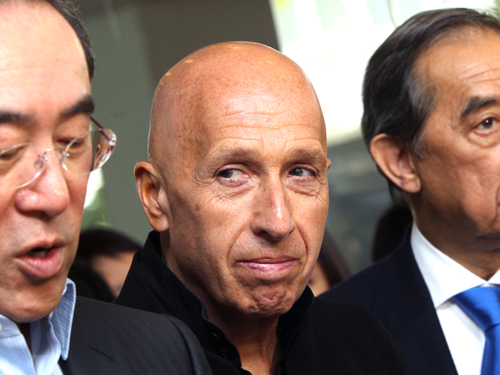 Ocean Park has claimed victory over rival Hong Kong Disneyland in terms of attendance figures and earnings. The Aberdeen-based theme park welcomed a record 5.4 million visitors last year, beating Disneyland's 5.2 million, its chairman Allan Zeman said. Ocean Park has claimed victory over rival Hong Kong Disneyland in terms of attendance figures and earnings. The Aberdeen-based theme park welcomed a record 5.4 million visitors last year, beating Disneyland's 5.2 million, its chairman Allan Zeman said.
Zeman also said it was hopeful that net surplus for this financial year could hit the HK$100 million mark, from HK$82 million in the 2009-10 financial year. This contrasted sharply with Disneyland's report of a net loss of HK$720 million for its last fiscal year, ended October 2.
A new aquarium is set to open on Thursday, among a series of attractions Ocean Park will offer under a HK$5.5 billion facelift announced in 2005 to boost competitiveness, as the city's Disneyland opened its doors that year. Both theme parks are keen to take advantage of the rise in mainland arrivals as wealth generated in the world's fastest-growing major economy spurs outbound tourism.
This month, Ocean Park unveiled a plan to sell milk powder, a favourite commodity among mainland tourists because of the low quality of baby formula sold back home. The idea was dropped upon criticism that it would go against the park's education and conservation role. Zeman yesterday said the impact might have been overstated because the plan was only to sell milk powder at one store, and it would be only one of many products on display.
Ocean Park chief executive Tom Mehrmann said its real competitor was not HK Disneyland, but in Zhuhai , referring to reports that a 20 billion yuan (HK$23.7 billion) mega theme park cum resort was coming up on the island of Hengqin . That theme park was estimated to draw 20 million visitors a year.
Visitor numbers at Hong Kong Disneyland have fallen short of the government's estimates, made in 1999. Managing director Andrew Kam Min-ho told a Legislative Council panel the Lantau-based theme park was hopeful of turning a profit after its expansion project was completed in about three years.
January 19 2011
Asian Fashion Rising
 Korean designer Doii Lee (centre) at her show’s Asian debut outside her home base Korean designer Doii Lee (centre) at her show’s Asian debut outside her home base
They are well-known in their home countries, especially by the celebrities who wear their creations, but celebrated designers from Japan, Korea and the Chinese mainland made their Asian debut in Hong Kong at the HKTDC Hong Kong Fashion Extravaganza, 17 January.
Paris-based Korean designer Doii Lee said the exclusive show, a highlight of World Boutique, Hong Kong, is the first step in making her label a truly global brand. “I’m a young designer who wants to make it in the international market,” she says. “This means a lot to me, because it can be a platform to grow my business in Hong Kong and the China area, which is what all young designers dream of doing at the moment.”
 This Keita Maruyama design features a modern take on the traditional Japanese motif This Keita Maruyama design features a modern take on the traditional Japanese motif
Ms Lee joined Japanese designer Keita Maruyama and Alex Wang from the Chinese mainland at this year’s Fashion Extravaganza, one of the highlights of World Boutique, Hong Kong. Acclaimed for his sophisticated, romantic look and his modern take on traditional Japanese motifs, Mr Maruyama is also using Hong Kong as a springboard to the wider Asian market. The Hong Kong Fashion Extravaganza was Alex Wang’s first major international show.
“As the only representative from Hong Kong, I obviously want to put my best foot forward and show them what Hong Kong’s capable of,” said Barney Cheng, who rounded up the line-up of celebrated designers. His collection, dubbed “Urban Nomad,” was his first collaboration with the HKTDC since winning the Hong Kong Young Designers’ Contest 18 years ago.
Rue du Mail
 Martine Sitbon, Creative Director of Rue du Mail, was the VIP judge at this year’s Hong Kong Young Fashion Designers’ Contest Martine Sitbon, Creative Director of Rue du Mail, was the VIP judge at this year’s Hong Kong Young Fashion Designers’ Contest
This year’s Young Designers’ competition featured 16 up-and-coming local designers vying for four awards: Casual & Jeans-wear, Contemporary Day-wear, Party & Evening-wear and Overall Winner categories. Martine Sitbon, Creative Director of French fashion label Rue du Mail, served as this year’s VIP judge. The winner in the overall category will receive a one-month internship at Rue du Mail in Paris.
Ms Sitbon’s business partner, Hong Kong designer Jimmy Chan, who also served as one of the judges, credited the programme for helping the next generation of talent realise their dreams.
 “Urban Nomad” was the collection theme of Hong Kong’s Barney Cheng “Urban Nomad” was the collection theme of Hong Kong’s Barney Cheng
“The young designers have great potential to do even better. They have the technical skills and the ideas,” said Mr Chan. “They just need to be refined.”
Eye on Tokyo
Nearly 2,000 exhibitors from 25 countries and regions are taking part in the HKTDC Hong Kong Fashion Week for Fall/Winter 2011 and World Boutique, Hong Kong 2011, which continue through 20 January at the Hong Kong Convention and Exhibition Centre. Organised by the Hong Kong Trade Development Council, the concurrent events spotlight the city’s role as a trend-setting capital and a major fashion-sourcing hub.
The Japanese pavilion tokyoeye made its Hong Kong debut at Fashion Week, showcasing nine of Japan’s hottest labels. “The main characteristic of these brands is that they are not following the trends but actually creating the fashion trends,” said Satori Miura of Japan’s Ministry of Economy Trade and Industry (METI), which organised the pavilion. “The labels are selling well in Japan, but they also want to develop their overseas market.”
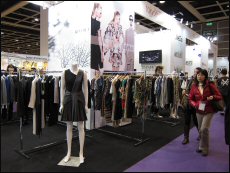 The tokyoeye pavilion features nine of Japan’s hottest fashion labels The tokyoeye pavilion features nine of Japan’s hottest fashion labels
Among them is men’s and women’s fashion label Fugahum. A melding of graphic arts and fashion, art director Akiyoshi Mishima and fashion designer Asuka Yamamota are the brains behind the brand.
“We are here because we want to explore the overseas market, especially Asia, because it’s growing rapidly,” said Fugahum representative Isseki Tadokoro. “We want to promote our brand in Asia, which is why we came to Hong Kong.”
Shanghai-based Qinyi, which specialises in high-end qipaos, traditional Chinese women’s dresses, also debuted at the Hong Kong show. “As China’s economy rapidly develops, we think this is also a good chance to spread the Chinese influence abroad,” said Li Jian Qin, founder of the company that has outfitted officials, including APEC leaders when Shanghai hosted the 2001 APEC summit.
Shoe Fountain
This year’s World Boutique also put a spotlight on Hong Kong’s shoe industry. The Federation of Hong Kong Footwear launched the Shoe Fountain project, to help members in the industry find new market opportunities. Twelve past finalists of the Hong Kong Footwear Design Competition, paired with 10 manufacturers, came up with new designs that were showcased at a runway show during World Boutique.
“The aim of this project is to build links and allow designers, enterprises and factories to work together and get products on the market,” said Frank Leung, Federation President.
Mr Leung said Hong Kong designers have the edge over their European counterparts in terms of understanding the Chinese mainland market. “There’s a huge market on the mainland, and we want to get a bigger share of the market in the coming years,” he said.
Those sentiments are shared by international exhibitors at the fair.
“Hong Kong is a very cosmopolitan city, with all the talent and resources gathered here,” said METI’s Mr Miura. “This is a very important city, and we want to promote the best in Tokyo to the world through Hong Kong.”
January 16 2011
New challenge will not halt pioneering work, says Hong Kong scientist
By Adrian Wan
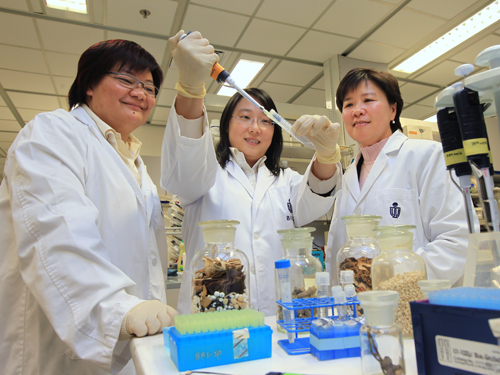 Nancy Ip (right) with Amy Fu (left), of the Department of Biochemistry, and Fanny Ip, of the Biotechnology Research Institute Nancy Ip (right) with Amy Fu (left), of the Department of Biochemistry, and Fanny Ip, of the Biotechnology Research Institute
One of Hong Kong's most distinguished woman scientists will take over the top science post at the city's premier research university. Neuroscientist Nancy Ip Yuk-yu will be the Hong Kong University of Science and Technology's dean of science from the start of next month.
But the move will not mean the end of her much-loved scientific endeavours, she said.
"I see it as taking up new challenges," the veteran scientist said. "I will never give up my long interest in science."
Her research team has made breakthrough discoveries in unravelling new signalling mechanisms in the brain that could create medicine to prevent and treat diseases such as Alzheimer's and Parkinson's.
"Many medicines for Alzheimer's have serious side effects, for example liver problems. I hope what we do will keep it to the minimum," she said.
In her new position, she aims to forge better collaboration between departments such as physics, chemistry and life science.
"I will try to attract more good students to our faculty by giving talks in secondary schools," she said. Headway has also been made recently in her research into producing medicine.
Her team's medicine for neurodegenerative diseases may be available in a few years.
"We're negotiating with drug firms. Much depends on clinical studies, which may take at least five years," she said.
Ip's quest to find a treatment for neurodegenerative disease was underpinned by the death of an aunt several years ago.
Her aunt, who had Alzheimer's disease, could not recognise family members towards the end of her life. Ip's mother once asked if there might be a cure, but her scientist daughter had to tell her there was none.
"I tried to look for ways to save her, but couldn't. It was an experience that reinforced my interest in finding out more about the disease. And, hopefully, to find a cure for it."
She was thankful for her teammates' enduring effort. "None of this could be made possible without them," she said.
Her interest in science was first ignited when she was in secondary school, at St Mary's Canossian College in Tsim Sha Tsui.
She studied biology and chemistry at a women's college in the US.
She specialised in neuroscience research in the 1980s while working in New York. After graduating from Harvard Medical School with a PhD in 1983 she joined a drug firm and then a biotech firm.
She was given the task of developing new drugs to fight degenerative diseases, allowing her to work with an elite group of researchers and learn the crucial skills for her lifelong pursuits in molecular biology.
"It is the curiosity about how the brain functions that has made me interested in neuroscience. Much in this field still remains unknown," she said. She joined HKUST in 1993.
Her research has won her several international awards. She was the first Chinese scientist to receive the L'Oreal-Unesco award for women in science in 2004. A year before that, the Chinese Academy of Sciences member received the State Natural Science Award.
Outside the laboratory, Ip is a mother of two who likes to spend time with her family.
Her son will graduate from medical school in the United States soon and her daughter is working, but not in the sciences. Her husband is a businessman.
"It's very challenging to balance work and life, but I'm lucky my family is very considerate and never complains about me," she said.
January 13 2011
American business leader promises to push for cleaner air in Hong Kong
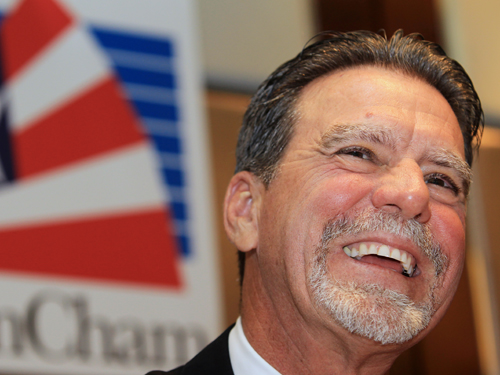 The newly appointed head of the American Chamber of Commerce in Hong Kong says he will to continue pressing for action on the worsening air pollution. "Hong Kong needs to seek urgent and dramatic rather than incremental improvements in air quality," said Rob Chipman yesterday in his inaugural speech as chairman at an AmCham lunch. The newly appointed head of the American Chamber of Commerce in Hong Kong says he will to continue pressing for action on the worsening air pollution. "Hong Kong needs to seek urgent and dramatic rather than incremental improvements in air quality," said Rob Chipman yesterday in his inaugural speech as chairman at an AmCham lunch.
Ninety-three per cent of respondents to the chamber's annual business survey listed air pollution as their top concern, and said that they had seen a further deterioration in the past year. The survey was conducted in October, with excerpts released yesterday.
Air pollution "is in our faces every day. It is the one issue that impacts on every single one of our members", said Chipman, who is also chief executive of relocation firm Asian Tigers.
He said pollution was becoming one of the most serious threats to Hong Kong's competitiveness as a place for doing business, especially in comparison with cleaner and greener commercial hubs such as Singapore.
Chipman said he fully agreed with The Heritage Foundation's continued ranking of Hong Kong as the world's freest economy, which was also announced yesterday. But he said that economic competitiveness was different to economic freedom.
"If we can't offer good air quality, we are going to have a hard time attracting the kind of high-level international talent that we need to keep our financial services and some of the other key components of our economy growing," he said.
In addition to deteriorating air quality, especially at the roadside, the AmCham survey identified high office and residential rents and the lack of places in international schools as the other top threats to Hong Kong's competitiveness.
Other areas in which members expressed dissatisfaction with the business environment were: English language proficiency, the consultative process for government policies and the political system, specifically the Legislative Council and district councils.
On environmental issues of concern, 93 per cent of the survey respondents said they were "very concerned" or "concerned" about air pollution.
Eighty-seven per cent said they were concerned with marine water quality, 81 per cent with waste treatment and recycling, 76 per cent with the amount of green space available for public use and 75 per cent with noise pollution.
Chipman cited the "remarkable strides" made by Taipei, Seoul and Tokyo in improving air quality, through investing in cleaner energy, clean fuels and better urban planning.
"It can be done, we can do it and we should not wait further," he said.
January 11 2011
 Hong Kong still ranked world's freest economy for the 17th Straight Year Hong Kong still ranked world's freest economy for the 17th Straight Year
Hong Kong remains the world’s freest economy for the 17th straight year and ranked 1st out of 41 countries in the Asia-Pacific region – followed by Singapore and Australia –according to a report released by the Heritage Foundation and the Wall Street Journal on Wednesday.
The city’s score remains unchanged from last year at 89.7 out of 100 in the 2011 Index of Economic Freedom, with small declines in the score for government spending and labour freedom offsetting improvements in fiscal freedom, monetary freedom, and freedom from corruption.
The report said Hong Kong is one of the world’s most competitive financial and business centres, demonstrating a high degree of resilience during the global financial crisis.
“It’s effective legal and regulatory frameworks and openness to global commerce strongly support entrepreneurial dynamism.”
The report also pointed out that Hong Kong has been Asia’s second largest destination for foreign direct investment for the 12th consecutive year, trailing only the mainland.
But the report warned about the threats posed by the introduction of the statutory minimum wage from May 1 and competition law to Hong Kong’s economic freedom.
The index, released by the Heritage Foundation think-tank and the Wall Street Journal, measures economic liberty in 10 areas.
January 9 2011
Year Ahead: Hot Finance Jobs for 2011
By Cathy Yan
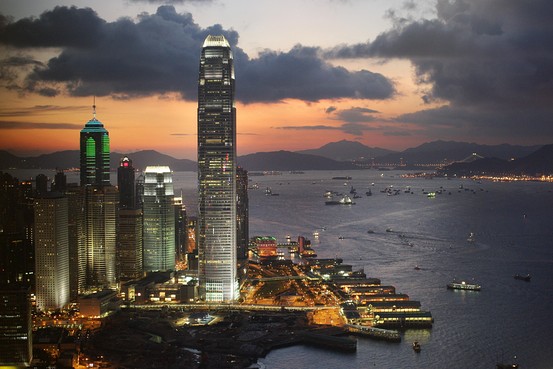 It looks as if 2011 will be a strong hiring year for Hong Kong finance companies. It looks as if 2011 will be a strong hiring year for Hong Kong finance companies.
“It’s probably going to be the most aggressive hiring year that we’ve had,” says John Wright, chief executive officer of Global Sage, a global talent acquisition consultancy headquartered in Hong Kong. “Companies had overcut and then they reconfigured and reorganized and rehired. Now they have to grow.”
Coming off the end of the financial crisis, 2010 saw a hiring boom for banks that had cut too much. Indeed, eFinancial Careers, a finance job recruitment site, saw a year-to-year increase of 84% in job openings for the Asia-Pacific region as of November 2010. The trend is expected to continue next year.
“We’re definitely seeing increased attention around the world looking at jobs in Hong Kong, as well as Singapore and China,” says George McFerran, head of Asia-Pacific for eFinancial Careers, which surveys recruiters and companies for hiring trends.
So what are the hot jobs for next year?
Portfolio managers: Managers with successful track records are needed for hedge funds and for long-only assets, according to Mr. Wright. “Asia has recovered from the credit crisis quicker than the rest of the world,” he says. “The type of hiring will be about how to make money going forward. Managers are looking to get short-term returns on an annual basis, as well as to develop new long-term strategic plans.”
Private banking: Banks are looking to grow their relationships-management teams, especially in Hong Kong and Singapore. There is a great undersupply of talent in private banking, so banks are also thinking creatively and looking outside the sector. A lot of banks are relocating mainland private bankers to Hong Kong to bring in Chinese clients, and they’re being aggressive with their offers, says Mr. McFerran of eFinancial Careers. Mr. Wright says product specialists within private banks are especially popular.
Commercial banking: There’s been massive expansion into traditional commercial banking by the major banks, says Mr. Wright. He says that J.P. Morgan Chase, Citibank and HSBC all have plans to expand commercial banking practices, and thus are looking to hire commercial bankers of all types.
Financial institutions specialists: Bankers who specialized in financial institution groups, often referred to as FIG bankers, are especially needed because of a slew of recent IPOs from Chinese banks, says Mr. McFerran. Mr. Wright notes that financial institution specialists at the senior level are especially in demand.
Technology professionals: New advancements in technology require development of sophisticated applications, such as electronic trading platforms in equities. This is an area with a lot of growth and skills in technology development will be in demand, says Mr. Wright.
Governance roles: Changing regulations and an increased attention to compliance and oversight make jobs in risk, compliance, anti-money laundering and product control very much in demand, according to Mr. McFerran. Like in 2010, these are talent-short areas. Qualified accountants will also be required on the bank side.
Chinese experience: Organizations have a lot of expansion plans for the China market and they need to increase their footprint from both the consumer and corporate side, says Mr. McFerran. Native Mandarin speakers will be highly coveted for all asset classes. Mr. Wright notes that director-level Chinese coverage will be especially important.
January 7 2011
 Never ending Tory - Accessories by fashion's newest darling Tory Burch are the hottest items in Hong Kong Never ending Tory - Accessories by fashion's newest darling Tory Burch are the hottest items in Hong Kong
 Brand new: Tory Burch this month opened its first standalone store in Hong Kong. Fans of the brand will find handbags, jewellery and the hot-selling T-logo slippers. Brand new: Tory Burch this month opened its first standalone store in Hong Kong. Fans of the brand will find handbags, jewellery and the hot-selling T-logo slippers.
The state of the economy may still be on the mind of many, but for some, the downturn represented the perfect opportunity to expand. Of course, it takes a certain kind of entrepreneur to take that track - one with a strong vision, and guts.
Enter Tory Burch. The American designer had always envisioned a fully fledged lifestyle brand, and, after cutting her teeth at Ralph Lauren, Vera Wang and Narciso Rodriguez at Loewe, she took the leap and launched her namesake label in 2004.
Her timing could not have been better. Though ostentatious luxury and "it" bags were very much the mood of the time, Burch set out to create stylish yet wearable clothing at an accessible price. As consumer spending eventually slowed due to the financial crisis, it was this latter point that would later pay dividends and propel the Tory Burch name to worldwide status. "We have been extremely careful about our expansion, whether it's introducing a new category, or opening a boutique in Asia. The most important piece of advice I can give is to have a unique point of view, and the tenacity to follow through," says the designer.
Breaking convention, Burch started out with multiple product lines. "We launched with over 10 categories, including ready to wear, handbags, shoes, accessories and small leather goods. From that first day, we wanted our customers to know who we were."
The brand was an instant success, earning the endorsement of Oprah Winfrey the following year, as well as the support of the New York social scene.
Burch grew up in the Philadelphia Main Line on a farmhouse in Valley Forge, Pennsylvania where her parents, Reva and Buddy Robinson, were keen entertainers of actors and artists. Her father once dated Grace Kelly whilst her mother can boast having had a little something with Marlon Brando.
Burch describes her fashion house as "American sportswear with a global point of view". Her vision was influenced by style icons from the '60s and '70s such as Julie Christie, Faye Dunaway and Charlotte Rampling. This vision won her the Council of Fashion Designers in America's Accessory Designer of the Year award in 2008, the 2007 Accessory Brand Launch of the Year from the Accessories Council of Excellence and, this year, landed her on the list of Forbes' Most Powerful Women in the World.
"We design for women who love fashion and want chic, easy pieces in their wardrobe. Every season, my design team and I think about the collection as a lifestyle; what do we need and what do we want? We strive to offer everything in that spectrum, from clothing to jewellery to eyewear," says Burch.
She is best known, however, for the T-logo medallion which features heavily on her leather accessories, shoes and printed dresses. Burch feels women respond to it because it is graphic and looks like a design element rather than a traditional logo. Hong Kong's style-savvy have also taken to the medallion - and have been snapping up Tory Burch's ballet flats like hotcakes. Thankfully, the city's fashionistas no longer have to trawl online stores or head stateside to access the Tory Burch world. Opened this month in the IFC Mall in Central, the new 1,200 sq ft boutique is the company's first store in Hong Kong, though it hopes to open another in Harbour City by next spring.
"Hong Kong is a very important market for us and we view it as a gateway to China," says Burch. We took our time to research different locations and felt this was the right time and space for us."
The boutique houses the full Tory Burch collection from apparel to leather accessories, jewellery to eyewear, and marks the ninth Tory Burch free-standing store to open internationally since launching in Tokyo last year. There are also shops in Manila, Seoul and Taipei and the first British flagship is due to open in London this month.
Taking note from the designer's first flagship in New York City, the Hong Kong store has the signature orange-lacquer door, brass chandeliers, driftwood tables and white sofas, but has a more neutral palette than in other locations. "Our boutiques are meant to feel like home," says Burch. "We want our customers to feel comfortable when they visit, as if they were in their own living room. I am passionate about interior design, and I would love to do my own home collection at some point."
This season, Burch presents a versatile range of clothing that mixes rugged styles with glamour. The collection takes on a basic winter palette of blacks, browns and khakis but injects shimmer and shine with sparkly metallic cardigans and tops as well the odd splash of bright orange. "Our Mona jacket worn with the feather Fawn skirt and Lyle lug-sole boot is perfect for this fall/winter," Burch advises. But the highlight of the range is a red cocktail dress that will happily fit into a wardrobe for all ages.
Looking ahead, Burch says her spring 2011 collection is inspired by the '70s, and the idea of easy dressing with clean and simple silhouettes and a colour palette inspired by nature.
But the businesswoman in her is looking far beyond the next few seasons. Growing in tandem with her fashion empire, last year she launched the Tory Burch Foundation dedicated to empowering women entrepreneurs through microfinance in the US.
The designer also has ambitious plans to open 100 stores over the next five years, and looking at what she has accomplished in less than a decade, there is little doubt that Burch will remain on the Forbes list as one of the most powerful woman in the world.
Good friends with an evil eye for detail
An ancient motif believed to ward off evil spirits and bad luck
is the inspiration behind a jewellery collection launched earlier this year by Tory Burch and her long-time friend, accessories designer Kara Ross. The pair have joined creative forces to produce a limited-edition capsule "evil eye" collection. "I designed a selection of evil-eye pieces in my fine jewellery collection several seasons ago," says Ross. "And we both kept going back to this idea, but updating it with a bolder, more modern look, tying into Tory's autumn/winter 2010 collection." Included in the 10-piece collection are 14-carat gold-plated metal and resin-cuff bracelets, rings, chokers and pendant and bib necklaces featuring coloured enamels and semi-precious gemstones. For more information visit
www.kararossny.com or www.toryburch.com Kylie Knott
January 5 2011
Hong Kong Banking on the Renminbi
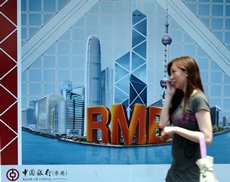 Banks are flexing their foreign exchange trade muscle to capture business in Hong Kong Banks are flexing their foreign exchange trade muscle to capture business in Hong Kong
Global financial institutions have their eyes on a rich pie. At the end of November 2010, the total amount of renminbi deposits in Hong Kong reached Rmb279.6 billion (US$42.15 billion), according to the Hong Kong Monetary Authority (HKMA). That represents an increase of 29 per cent from October, and up 246 per cent, year-on-year. HKMA Chief Executive Norman Chan said Hong Kong’s renminbi market would continue to expand through 2011, in terms of the depth and breadth of the market and product development. He expects Hong Kong's first-quarter quota for trade settlement to be about Rmb4 billion.
According to a recent Goldman Sachs report, the amount of renminbi deposits in Hong Kong will reach Rmb3.5 trillion in the next five years, accounting for 31.6 per cent of the total deposits in the Hong Kong banking system.
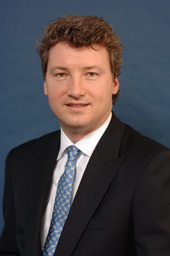 Gordon French, Head of Global Markets Asia Pacific, HSBC Gordon French, Head of Global Markets Asia Pacific, HSBC
Banks building teams to prepare for this growth include the Hongkong and Shanghai Banking Corporation (HSBC), which has brought in Clyde Choi to be Head of Emerging Markets, Foreign Exchange (FX) Trading, HSBC Asia Pacific, based in Hong Kong. Mr Choi has more than 10 years’ experience in cross-asset class trading across FX and Rates. He was previously co-Head of Asian Macro Interest Rate and FX Trading in UBS Singapore. Gordon French, Head of Global Markets Asia Pacific, HSBC, said Mr Choi brings a wealth of experience to the bank’s foreign currency trading team, both regionally and globally."
Standard Chartered Bank, Deutsche Bank and Credit Suisse are also in the midst of beefing up their FX trading teams in Hong Kong to compete in the offshore renminbi market. "The sheer demand for renminbi products in Hong Kong is amazing," said Sundeep Bhandari, Standard Chartered's Managing Director for Global Markets in North-East Asia, in an interview with Reuters. "We are hiring a lot more on the capital markets business side."
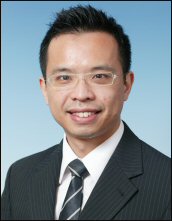 Kelvin Lau, Regional Economist, Asia, at Standard Chartered Kelvin Lau, Regional Economist, Asia, at Standard Chartered
"With China limiting the number of offshore access points to onshore markets, primarily via the clearing bank, the agent banks, or some form of a quota system, the role of developing, promoting and extending offshore renminbi business to the rest of the world falls heavily on Hong Kong shoulders," said Kelvin Lau, Regional Economist, Asia, at Standard Chartered. "All these will have positive, far-reaching consequences for Hong Kong – acting as a key financial centre for foreign corporate to buy, sell, invest, hedge their cross-border trades; as a place that pools together offshore money and manage them on foreign / mainland investors’ behalf; and as a liquidity hub to money to be raised and remitted back to the mainland. All these effectively opened a wide range of new opportunities for banks in Hong Kong – further cementing its international financial centre status," he noted.
The Standard Chartered's Mr Lau said the rapid developments over the past year and years ahead will give Hong Kong a headstart from mainland cities.
Building Strength
Deutsche Bank has hired Ajay Kapur as a Managing Director and Head of Asian Equity Strategy, as it establishes an Asian equity strategy team in Hong Kong. Mr Kapur joined Deutsche Bank from Mirae Asset Securities, where he was Chief Global and Asia Strategist. The bank also appointed Priscilla Luk as a Director, Asian Equity Strategy, and Ritesh Samadhiya, Vice President, Asian Equity Strategy.
Ajay is one of the best-known and most respected names in the industry, having worked in equity research and strategy on both the buy and sell sides since 1989," said Guy Ashton, Deutsche Bank’s Head of Research for Europe, "Along with Priscilla and Ritesh, Ajay is ideally suited to build the region's leading equity strategy franchise."
Credit Suisse has brought in an executive from London as part of a significant expansion of its global foreign exchange sales platform in the Asia-Pacific. Yan Qin has joined FX Sales as a Director based in Hong Kong. He is responsible for building the client franchise among Chinese financial institutions and sovereign wealth funds. Mr Qin joins from JP Morgan in London, where he covered central banks and proprietary trading desks.
"Asia-Pacific represents one of the biggest growth opportunities in our roadmap to become a top-tier global FX provider," said Carsten Stoehr, Credit Suisse’s Head of Fixed Income Asia Pacific. "These hires complement our onshore Emerging Markets Rates and FX expansion in the region."
Game Changing
The banks have moved fast since mainland regulators opened the door in July last year, letting banks and individuals sell renminbi-denominated financial products in Hong Kong and giving companies greater access to renminbi funds. David Mann, Head of Research in the Americas for Standard Chartered Bank, described the establishment of offshore trading in the renminbi as "game changing. It's arrived much faster than anyone expected," he told The Wall Street Journal.
According to the Asian Development Bank (ADB), the renminbi could rapidly become an internationally used currency and serve as an alternative to the US dollar in central bank reserves. This could happen "much more quickly than many anticipate," the ADB said in a joint study with Columbia University's the Earth Institute. "Hopefully by the time China fully opens up its capital account, 10 to 15 years down the road, and when there is no longer a need to distinguish between onshore and offshore markets, Hong Kong will have such a deep and broad renminbi market that it will continue to hold on to its relative dominance over other cities, much like how London stays relevant for the Eurodollar market over the years despite the rapid rise of other financial
centers."
Hong Kong Full Steam Ahead
The year 2010 may was a time for consolidation, but 2011 is looking brighter, say Hong Kong SMEs representing the food and beverage, environmental, digital entertainment, creative and fashion industries.
 New Yorker Harlan Goldstein is known in Hong Kong as “chef to the rich and famous.” His latest restaurant, Gold by Harlan Goldstein, opened in Lan Kwai Fong, Hong Kong’s famed entertainment district, just two months ago. New Yorker Harlan Goldstein is known in Hong Kong as “chef to the rich and famous.” His latest restaurant, Gold by Harlan Goldstein, opened in Lan Kwai Fong, Hong Kong’s famed entertainment district, just two months ago.
The Hong Kong F&B business felt some pain during the economic slowdown, but nowhere near what everyone else felt. This is probably due to the fact that there are plenty of overseas investments coming into Asia from the European and American markets. As Hong Kong continues to make profits, people will go out and spend.
Why start a new business now? I’ve been under the radar for about two and a half years, waiting for the right location, and my customers are hungry to try my original dishes again, so it was an opportune time to open when the spot at LKF Tower opened up.
I’ve noticed an upturn in the industry since my restaurant opened. In 2011, I feel that only the good will survive.
 Richard Cook co-founded environmental business in November 2009. He and his three partners firmly believe in the long-term economic, environmental and social benefits of their product, green roofs, which reduce the temperature of city buildings and help clean the air. Richard Cook co-founded environmental business in November 2009. He and his three partners firmly believe in the long-term economic, environmental and social benefits of their product, green roofs, which reduce the temperature of city buildings and help clean the air.
During the recession, everything slowed down, including environmental projects. However determined an organisation is to do the right thing environmentally, when faced with economic survival, things will always be sacrificed. That said, we get the feeling that environmental issues are becoming mainstream: they are seen, by the larger organisations, at least, as essential parts of business practice.
I think 2011 will be a better year for SMEs in Hong Kong. Despite the recession in Europe and the United States, Hong Kong remains buoyant on the back of the bullish China economy. Also, the green market space is very strong, so SMEs with good products and services will thrive. And as the green industry becomes the mainstream norm, this will only increase in every sector. Legislation will get stronger and community demands will also increase. Those that are in the market already will benefit.
 Franky Fu is CEO of Celestial Digital Entertainment (CDE). One of the busiest smartphone game developers, the company has produced more than 40 games in the past two years. The arrival of the iPhone provided CDE with the opportunity to shift from making online games to the more lucrative mobile market. Franky Fu is CEO of Celestial Digital Entertainment (CDE). One of the busiest smartphone game developers, the company has produced more than 40 games in the past two years. The arrival of the iPhone provided CDE with the opportunity to shift from making online games to the more lucrative mobile market.
We are planning to release 20 titles in 2011, which will also be made available on multiple mobile platforms. Users expect and demand more sophisticated, in-depth games, and with the processing speed of the latest mobile devices, I am sure there will be a lot more good 3D games by 2011.
Just look at the activation of smartphones every day – all these consumers are your customers. The low price of games means everyone can afford a few games a month. Games become disposable, driving developers like us to create and develop more interesting titles.
Hong Kong provides a stable environment for our company to do business and expand.
 Alex Woo, Managing Director of Montegle Production Ltd, has transformed his business from a gift and premiums supplier to an integrated marketing agency, supporting clients’ corporate identity, brand building, marketing communications, event management and public relations. The firm’s client list includes DBS Bank, The Venetian Cotai Ltd and Microsoft. Alex Woo, Managing Director of Montegle Production Ltd, has transformed his business from a gift and premiums supplier to an integrated marketing agency, supporting clients’ corporate identity, brand building, marketing communications, event management and public relations. The firm’s client list includes DBS Bank, The Venetian Cotai Ltd and Microsoft.
Thinking creatively and freely is crucial in our industry. Freewheeling, wild thoughts are fine. We believe practical ideas very often come from silly, impractical, impossible ones. Thinking creatively and putting the client first leads to client satisfaction – the ultimate momentum to keep our business moving and differentiated.
We feel optimistic for our industry. Good economic conditions can raise the whole business operational environment, and we believe that growing economies will benefit the creative business.
We are looking forward to expanding our business scope in the coming year by grabbing valuable chances to cooperate with clients in different countries. In order to reach this target, we plan to participate in international expositions to enlarge our client base and learn from other countries.
To follow up in the fast-moving world, we will also match our design concept and marketing plans to current trends. We recently introduced new character branding, “We are blessed,” and have decided to develop licensing for it, as well as related apps and animation to enhance the brand.”
 Kay Wong founded Daydream Nation, a “fashion arts house,” with her brother Jing in 2006. Aside from being an international fashion label, Daydream Nation is celebrated for its cross-disciplinary collaborations with other art forms, including theatre, dance, music, film and visual arts. Its flagship store, which opened in October 2010, features clothing and accessories and local art and indie brands, and runs a programme of creative workshops and events. Kay Wong founded Daydream Nation, a “fashion arts house,” with her brother Jing in 2006. Aside from being an international fashion label, Daydream Nation is celebrated for its cross-disciplinary collaborations with other art forms, including theatre, dance, music, film and visual arts. Its flagship store, which opened in October 2010, features clothing and accessories and local art and indie brands, and runs a programme of creative workshops and events.
Daydream Nation's style is whimsical and poetic, with lovingly handcrafted details. Hong Kong is the perfect place to launch it because that is exactly what our city needs: more space for daydreamers to come together and get creative. We believe our flagship store is set to become Hong Kong's new creative hub.
We've noticed that the fashion industry and consumers have played it quite safe the last couple years amid the financial crisis. We predict that 2011 will be the beginning of more experimental choices. Daydream Nation will, of course, continue to be our usual experimental selves. The sky is the limit. We'll be collaborating with a range of artists and designers on various projects, exhibitions and events, revamping our e-shop, launching pop-up stores – the dream list is endless.
 Kenny Wong is a Hong Kong illustrator and graphic designer. In 2006, he created the Molly character. He has since found success in Asia, where licensed Molly products, including accessories, travel bags, handbags, wallets, umbrellas and slippers, are popular items. Kenny Wong is a Hong Kong illustrator and graphic designer. In 2006, he created the Molly character. He has since found success in Asia, where licensed Molly products, including accessories, travel bags, handbags, wallets, umbrellas and slippers, are popular items.
This year, we have signed a one-year contract with a company in Taiwan to feature Molly T-shirts. We will keep working on image licensing in Taiwan and Hong Kong, where we have a company producing licensed Molly wallets to sell on the Chinese mainland. This year, we’re hoping to find better mainland licensing partners, whose products are best suited to serve Molly’s image. We are also going to develop Molly’s personality by publishing storybooks and enrich the character through the creation of new characters that will serve as Molly’s friends and pets.
People are starting to look at Hong Kong's brand design, and many designers are paying more attention to this area. But brand design is a big challenge for many designers because it takes time to develop and make a brand well-known. The current consumer generation always wants new products. Designers should make the best use of the online platform, the information highway, as the main communication tool to promote their products.
January 3 2010
 Architectural firm OMA moves Asian HQ from Beijing to Hong Kong Architectural firm OMA moves Asian HQ from Beijing to Hong Kong
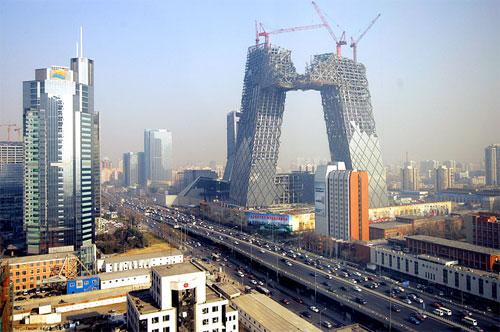 The Dutch architectural firm OMA has moved its Asian headquarters from Beijing to Hong Kong, saying the harbour city has more of the talented professionals it needs to handle coming Asian projects. The renowned firm denied the move had anything to do with controversy over the CCTV "trouser legs" building in Beijing, or the furore over a passage in a book written by OMA that likened the design of the tower and the 30-storey building beside it to female and male genitalia. The Dutch architectural firm OMA has moved its Asian headquarters from Beijing to Hong Kong, saying the harbour city has more of the talented professionals it needs to handle coming Asian projects. The renowned firm denied the move had anything to do with controversy over the CCTV "trouser legs" building in Beijing, or the furore over a passage in a book written by OMA that likened the design of the tower and the 30-storey building beside it to female and male genitalia.
Many people did not like the idea that OMA founder Rem Koolhaas may have pulled off a pornographic joke at the country's expense.
David Gianotten, who started the Hong Kong office and is now a partner of the company, said the company had not suffered a loss of business in Beijing due to the controversy.
"We will still keep the Beijing office," he said. "We just want a stronger presence in Asia and Hong Kong provides a convenient platform.
"We do receive positive comments on the CCTV design."
The company's architectural team in Hong Kong has grown to 45, up from 12 at the office's opening in 2009, when the firm entered the final round of the design competition for the West Kowloon arts hub.
Now the company is planning to expand to 60 staff in Hong Kong, making it the second-largest branch after its headquarters in Rotterdam. To get there, the company will recruit more local professionals, including fresh graduates.
"It's a change of strategy. We don't aim for the China market only, but the whole of Asia," Gianotten said.
"Hong Kong by far is the most convenient platform for hiring both mainland and international talent. It provides a good mix."
While mainland architects were imaginative and those from Taiwan were pragmatic, Gianotten said, Hong Kong professionals were more rounded, adept not only in design, but also in engineering and technical skills.
The company plans to keep the ratio of Chinese staff at 60 per cent and to groom young graduates.
"We don't want to be seen as a company from overseas," Gianotten said. "It's important to establish an office that crosses cultures and really knows and understands the local context."
The company would soon start projects in Malaysia, Indonesia and Vietnam and would also set up an office in Middle East.
Arts and design industry insiders said OMA's retreat from the mainland was not surprising, as many international firms had been experiencing trouble operating businesses there.
"There's a huge cultural difference," one industry veteran said. "The mode of business operation in China is very different from where these companies came from. And they have to look up to the mainland government officials, which is certainly not what they are used to."
In August 2009, mainland media reported that a book written five years earlier by OMA had included an off-colour description of the CCTV building. Koolhaas may have just been having some fun. At other times, he has spoken seriously about the tower's intent to "generate a space and to define a space" for the state broadcaster.
|
![]()
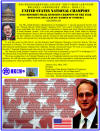 USA Small Business Administration (SBA)
Selected Johnson Choi/HKCHcc
2008 United States
National Champion
USA Small Business Administration (SBA)
Selected Johnson Choi/HKCHcc
2008 United States
National Champion![]()
![]() and follow us
on
and follow us
on
![]()

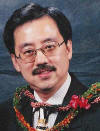
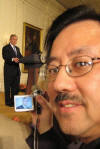
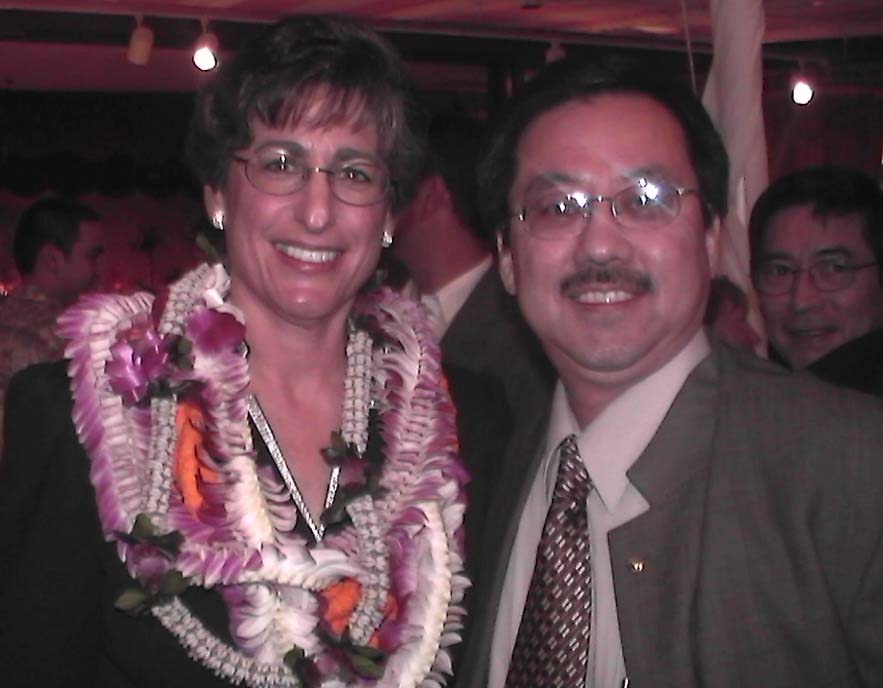
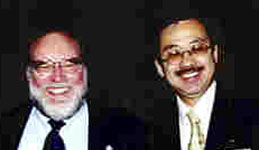
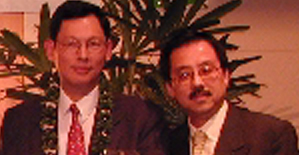
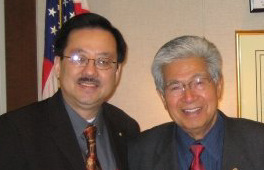


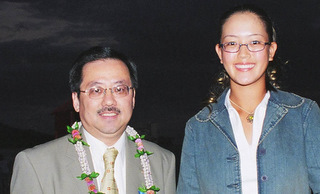
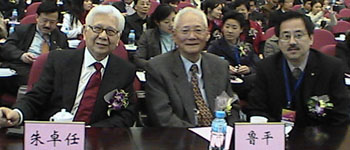












 Wine-Biz - Hong
Kong
Wine-Biz - Hong
Kong







 AmCham Shanghai launches latest Viewpoint - U.S. Export
Competitiveness in China - on the 2010 Washington, D.C. Doorknock - Please
download report in PDF format:
AmCham Shanghai launches latest Viewpoint - U.S. Export
Competitiveness in China - on the 2010 Washington, D.C. Doorknock - Please
download report in PDF format:




 HK$6,000 will be given to each holder of a valid Hong Kong Permanent Identity Card
HK$6,000 will be given to each holder of a valid Hong Kong Permanent Identity Card  Hong Kong
Hong Kong 

 Hong Kong CE
Donald Tsang Propose VISA FREE for HK Passport Holders
Hong Kong CE
Donald Tsang Propose VISA FREE for HK Passport Holders  Hong Kong Reception Video
Hong Kong Reception Video  Hong Kong Reception Video - HK Commerce Secretary Gregory So
Hong Kong Reception Video - HK Commerce Secretary Gregory So 














 VIDEO
VIDEO 






































 Video: The World Competitiveness Rankings 2011 - Hong Kong Rank#1 with United States
Video: The World Competitiveness Rankings 2011 - Hong Kong Rank#1 with United States








































 video presentation
video presentation 

 State-of-the-art facilities at Hong Kong Cyberport attract tech-related start-ups
State-of-the-art facilities at Hong Kong Cyberport attract tech-related start-ups Video Presentation (5 minutes)
Video Presentation (5 minutes) 
 David Chung, Chief Technology officer, Hong Kong Cyberport
David Chung, Chief Technology officer, Hong Kong Cyberport








 watch the 5 minutes short video
watch the 5 minutes short video 




 Expansion in Hong Kong enables global insurers to tap potential in the Asian region
Expansion in Hong Kong enables global insurers to tap potential in the Asian region  Karen Lieu, CEO, Marsh Hong Kong
Karen Lieu, CEO, Marsh Hong Kong Officially launching the ACE Life Hong Kong operation are (left to right): Anthony Mak, President, ACE Life Hong Kong; Russell Bundschuh, President, ACE Life; and Saloon Tham, Regional President-Asia Pacific, ACE Life
Officially launching the ACE Life Hong Kong operation are (left to right): Anthony Mak, President, ACE Life Hong Kong; Russell Bundschuh, President, ACE Life; and Saloon Tham, Regional President-Asia Pacific, ACE Life Brian Mitchell, Chairman, Bravura Solutions
Brian Mitchell, Chairman, Bravura Solutions International SOS director Mick Sharp
International SOS director Mick Sharp

 An artist's impression of the finished
facility
An artist's impression of the finished
facility The former Kai Tak airport site
The former Kai Tak airport site Chief Executive Donald Tsang (center), acting Secretary for Commerce and Economic Development Gregory So and Secretary for Development Carrie Lam give a welcoming hand to the start of work on the terminal on the runway of the former Kai Tak airport site.
Chief Executive Donald Tsang (center), acting Secretary for Commerce and Economic Development Gregory So and Secretary for Development Carrie Lam give a welcoming hand to the start of work on the terminal on the runway of the former Kai Tak airport site. "Many applicants were very glad that we could grant the visa within two days," said newly appointed director of immigration Eric Chan Kwok-ki as he disclosed the figures.
"Many applicants were very glad that we could grant the visa within two days," said newly appointed director of immigration Eric Chan Kwok-ki as he disclosed the figures. Investing early in the technology helped Digital Magic expand quickly into 3D production
Investing early in the technology helped Digital Magic expand quickly into 3D production  View
Video Presentation: Hong Kong film-makers are capitalising on growing interest in three-dimensional movies following the record-breaking box-office success of Avatar, according to the head of an influential trade group representing local production professionals. In an interview with the HKTDC, Percy
Fung, from the Association of Motion Picture Post Production Professionals, said he expects next week's FILMART to be a perfect forum for exploring new partnerships and digital technology.
View
Video Presentation: Hong Kong film-makers are capitalising on growing interest in three-dimensional movies following the record-breaking box-office success of Avatar, according to the head of an influential trade group representing local production professionals. In an interview with the HKTDC, Percy
Fung, from the Association of Motion Picture Post Production Professionals, said he expects next week's FILMART to be a perfect forum for exploring new partnerships and digital technology. Hong Kong’s Little Gobie is set for release this summer in the United States
Hong Kong’s Little Gobie is set for release this summer in the United States  T-Films Production Manager Charlie Wong with the best animated production award for Little Gobie at the California Film Awards last year
T-Films Production Manager Charlie Wong with the best animated production award for Little Gobie at the California Film Awards last year Percy Fung, Production Director of Hong Kong-based studio Digital Magic
Percy Fung, Production Director of Hong Kong-based studio Digital Magic Hong Kong International Airport is the world’s busiest cargo airport
Hong Kong International Airport is the world’s busiest cargo airport  Cathay Pacific Airways is expanding its cargo fleet to meet growing demand
Cathay Pacific Airways is expanding its cargo fleet to meet growing demand US logistics provider Jacobson Companies says its Hong Kong office is key to the firm’s Asian development plans
US logistics provider Jacobson Companies says its Hong Kong office is key to the firm’s Asian development plans David Cunningham, President, Asia Pacific Region, FedEx Express
David Cunningham, President, Asia Pacific Region, FedEx Express FedEx has increased its Hong Kong-Europe trade lanes
FedEx has increased its Hong Kong-Europe trade lanes DHL has doubled its operational capacity in Hong Kong
DHL has doubled its operational capacity in Hong Kong Donald Tsang at the opening session of the National People's Congress.
Donald Tsang at the opening session of the National People's Congress. 港 將 成 珠 三 角 金 融 龍 頭
港 將 成 珠 三 角 金 融 龍 頭 Outlook Asia - Hong Kong’s business advantages - US Chief Commercial Consul Hong Kong - will be on the agenda later this month at the Asia Pacific Business Outlook conference in Los Angeles (March 28 - 29).
Andrew Wylegala, Chief Commercial Consul at the US Consulate General in Hong
Kong, explains why American companies should cast their eyes across the Pacific - Hong Kong
Outlook Asia - Hong Kong’s business advantages - US Chief Commercial Consul Hong Kong - will be on the agenda later this month at the Asia Pacific Business Outlook conference in Los Angeles (March 28 - 29).
Andrew Wylegala, Chief Commercial Consul at the US Consulate General in Hong
Kong, explains why American companies should cast their eyes across the Pacific - Hong Kong
 Christian Dior’s new Hong Kong flagship shop in Tsim Sha Tsui
Christian Dior’s new Hong Kong flagship shop in Tsim Sha Tsui The CLSA report shows where China’s wealthy are spending their money
The CLSA report shows where China’s wealthy are spending their money Aaron Fischer, Regional Head of Consumer and Gaming Research, CLSA
Aaron Fischer, Regional Head of Consumer and Gaming Research, CLSA  China’s big spenders are loyal to their favorite brands
China’s big spenders are loyal to their favorite brands Cartier's new flagship in Prince's Building houses a full range of timepieces and fine jewellery
Cartier's new flagship in Prince's Building houses a full range of timepieces and fine jewellery  Diego Menarin, Regional Managing Director of Christian Dior Asia Pacific, with make- up artist Zing
Diego Menarin, Regional Managing Director of Christian Dior Asia Pacific, with make- up artist Zing Yuen Long fish farmers Lai Loi-chau (left) and Yeung Sui-leung present (from left) certified organic grass carp, bighead carp and grey mullet yesterday.
Yuen Long fish farmers Lai Loi-chau (left) and Yeung Sui-leung present (from left) certified organic grass carp, bighead carp and grey mullet yesterday. Best of both worlds - The dual identity of Hong Kong returnees helps them switch smoothly between cultures By Nan Sussman
Best of both worlds - The dual identity of Hong Kong returnees helps them switch smoothly between cultures By Nan Sussman Hong Kong’s plans to become an education hub has attracted top-notch international students from around the world
Hong Kong’s plans to become an education hub has attracted top-notch international students from around the world Professor John Spinks, Senior Advisor to the Vice-Chancellor at the University of Hong Kong
Professor John Spinks, Senior Advisor to the Vice-Chancellor at the University of Hong Kong Officials at the launch of the City University of Hong Kong (Shenzhen) Research Institute Building last month
Officials at the launch of the City University of Hong Kong (Shenzhen) Research Institute Building last month American Jonathan Mak chose to enrol at the Savannah School of Art and Design program in Hong Kong
American Jonathan Mak chose to enrol at the Savannah School of Art and Design program in Hong Kong  Visitors, many from the Chinese mainland, flock to Hong Kong for the Lunar New Year celebrations
Visitors, many from the Chinese mainland, flock to Hong Kong for the Lunar New Year celebrations  Gourmands make Hong Kong’s Wine and Dine month a must-attend event
Gourmands make Hong Kong’s Wine and Dine month a must-attend event  The Cathay Pacific Rugby Sevens is a major event on the international sporting calendar
The Cathay Pacific Rugby Sevens is a major event on the international sporting calendar  Trade visitors pack the HKCEC for the record-breaking HKTDC Hong Kong Toys and Games Fair in January
Trade visitors pack the HKCEC for the record-breaking HKTDC Hong Kong Toys and Games Fair in January


 Ocean Park has claimed victory over rival Hong Kong Disneyland in terms of attendance figures and earnings. The Aberdeen-based theme park welcomed a record 5.4 million visitors last year, beating Disneyland's 5.2 million, its chairman Allan Zeman said.
Ocean Park has claimed victory over rival Hong Kong Disneyland in terms of attendance figures and earnings. The Aberdeen-based theme park welcomed a record 5.4 million visitors last year, beating Disneyland's 5.2 million, its chairman Allan Zeman said. Korean designer Doii Lee (centre) at her show’s Asian debut outside her home base
Korean designer Doii Lee (centre) at her show’s Asian debut outside her home base This Keita Maruyama design features a modern take on the traditional Japanese motif
This Keita Maruyama design features a modern take on the traditional Japanese motif Martine Sitbon, Creative Director of Rue du Mail, was the VIP judge at this year’s Hong Kong Young Fashion Designers’ Contest
Martine Sitbon, Creative Director of Rue du Mail, was the VIP judge at this year’s Hong Kong Young Fashion Designers’ Contest “Urban Nomad” was the collection theme of Hong Kong’s Barney Cheng
“Urban Nomad” was the collection theme of Hong Kong’s Barney Cheng The tokyoeye pavilion features nine of Japan’s hottest fashion labels
The tokyoeye pavilion features nine of Japan’s hottest fashion labels  Nancy Ip (right) with Amy Fu (left), of the Department of Biochemistry, and Fanny Ip, of the Biotechnology Research Institute
Nancy Ip (right) with Amy Fu (left), of the Department of Biochemistry, and Fanny Ip, of the Biotechnology Research Institute The newly appointed head of the American Chamber of Commerce in Hong Kong says he will to continue pressing for action on the worsening air pollution. "Hong Kong needs to seek urgent and dramatic rather than incremental improvements in air quality," said Rob Chipman yesterday in his inaugural speech as chairman at an AmCham lunch.
The newly appointed head of the American Chamber of Commerce in Hong Kong says he will to continue pressing for action on the worsening air pollution. "Hong Kong needs to seek urgent and dramatic rather than incremental improvements in air quality," said Rob Chipman yesterday in his inaugural speech as chairman at an AmCham lunch.  Hong Kong still ranked world's freest economy for the 17th Straight Year
Hong Kong still ranked world's freest economy for the 17th Straight Year It looks as if 2011 will be a strong hiring year for Hong Kong finance companies.
It looks as if 2011 will be a strong hiring year for Hong Kong finance companies. Never ending Tory - Accessories by fashion's newest darling Tory Burch are the hottest items in Hong Kong
Never ending Tory - Accessories by fashion's newest darling Tory Burch are the hottest items in Hong Kong Brand new: Tory Burch this month opened its first standalone store in Hong Kong. Fans of the brand will find handbags, jewellery and the hot-selling T-logo slippers.
Brand new: Tory Burch this month opened its first standalone store in Hong Kong. Fans of the brand will find handbags, jewellery and the hot-selling T-logo slippers. Banks are flexing their foreign exchange trade muscle to capture business in Hong Kong
Banks are flexing their foreign exchange trade muscle to capture business in Hong Kong  Gordon French, Head of Global Markets Asia Pacific, HSBC
Gordon French, Head of Global Markets Asia Pacific, HSBC Kelvin Lau, Regional Economist, Asia, at Standard Chartered
Kelvin Lau, Regional Economist, Asia, at Standard Chartered  New Yorker Harlan Goldstein is known in Hong Kong as “chef to the rich and famous.” His latest restaurant, Gold by Harlan Goldstein, opened in Lan Kwai Fong, Hong Kong’s famed entertainment district, just two months ago.
New Yorker Harlan Goldstein is known in Hong Kong as “chef to the rich and famous.” His latest restaurant, Gold by Harlan Goldstein, opened in Lan Kwai Fong, Hong Kong’s famed entertainment district, just two months ago. Richard Cook co-founded environmental business in November 2009. He and his three partners firmly believe in the long-term economic, environmental and social benefits of their product, green roofs, which reduce the temperature of city buildings and help clean the air.
Richard Cook co-founded environmental business in November 2009. He and his three partners firmly believe in the long-term economic, environmental and social benefits of their product, green roofs, which reduce the temperature of city buildings and help clean the air. Franky Fu is CEO of Celestial Digital Entertainment (CDE). One of the busiest smartphone game developers, the company has produced more than 40 games in the past two years. The arrival of the iPhone provided CDE with the opportunity to shift from making online games to the more lucrative mobile market.
Franky Fu is CEO of Celestial Digital Entertainment (CDE). One of the busiest smartphone game developers, the company has produced more than 40 games in the past two years. The arrival of the iPhone provided CDE with the opportunity to shift from making online games to the more lucrative mobile market.  Alex Woo, Managing Director of Montegle Production Ltd, has transformed his business from a gift and premiums supplier to an integrated marketing agency, supporting clients’ corporate identity, brand building, marketing communications, event management and public relations. The firm’s client list includes DBS Bank, The Venetian Cotai Ltd and Microsoft.
Alex Woo, Managing Director of Montegle Production Ltd, has transformed his business from a gift and premiums supplier to an integrated marketing agency, supporting clients’ corporate identity, brand building, marketing communications, event management and public relations. The firm’s client list includes DBS Bank, The Venetian Cotai Ltd and Microsoft.  Kay Wong founded Daydream Nation, a “fashion arts house,” with her brother Jing in 2006. Aside from being an international fashion label, Daydream Nation is celebrated for its cross-disciplinary collaborations with other art forms, including theatre, dance, music, film and visual arts. Its flagship store, which opened in October 2010, features clothing and accessories and local art and indie brands, and runs a programme of creative workshops and events.
Kay Wong founded Daydream Nation, a “fashion arts house,” with her brother Jing in 2006. Aside from being an international fashion label, Daydream Nation is celebrated for its cross-disciplinary collaborations with other art forms, including theatre, dance, music, film and visual arts. Its flagship store, which opened in October 2010, features clothing and accessories and local art and indie brands, and runs a programme of creative workshops and events. Kenny Wong is a Hong Kong illustrator and graphic designer. In 2006, he created the Molly character. He has since found success in Asia, where licensed Molly products, including accessories, travel bags, handbags, wallets, umbrellas and slippers, are popular items.
Kenny Wong is a Hong Kong illustrator and graphic designer. In 2006, he created the Molly character. He has since found success in Asia, where licensed Molly products, including accessories, travel bags, handbags, wallets, umbrellas and slippers, are popular items. Architectural firm OMA moves Asian HQ from Beijing to Hong Kong
Architectural firm OMA moves Asian HQ from Beijing to Hong Kong The Dutch architectural firm OMA has moved its Asian headquarters from Beijing to Hong Kong, saying the harbour city has more of the talented professionals it needs to handle coming Asian projects. The renowned firm denied the move had anything to do with controversy over the CCTV "trouser legs" building in Beijing, or the furore over a passage in a book written by OMA that likened the design of the tower and the 30-storey building beside it to female and male genitalia.
The Dutch architectural firm OMA has moved its Asian headquarters from Beijing to Hong Kong, saying the harbour city has more of the talented professionals it needs to handle coming Asian projects. The renowned firm denied the move had anything to do with controversy over the CCTV "trouser legs" building in Beijing, or the furore over a passage in a book written by OMA that likened the design of the tower and the 30-storey building beside it to female and male genitalia.